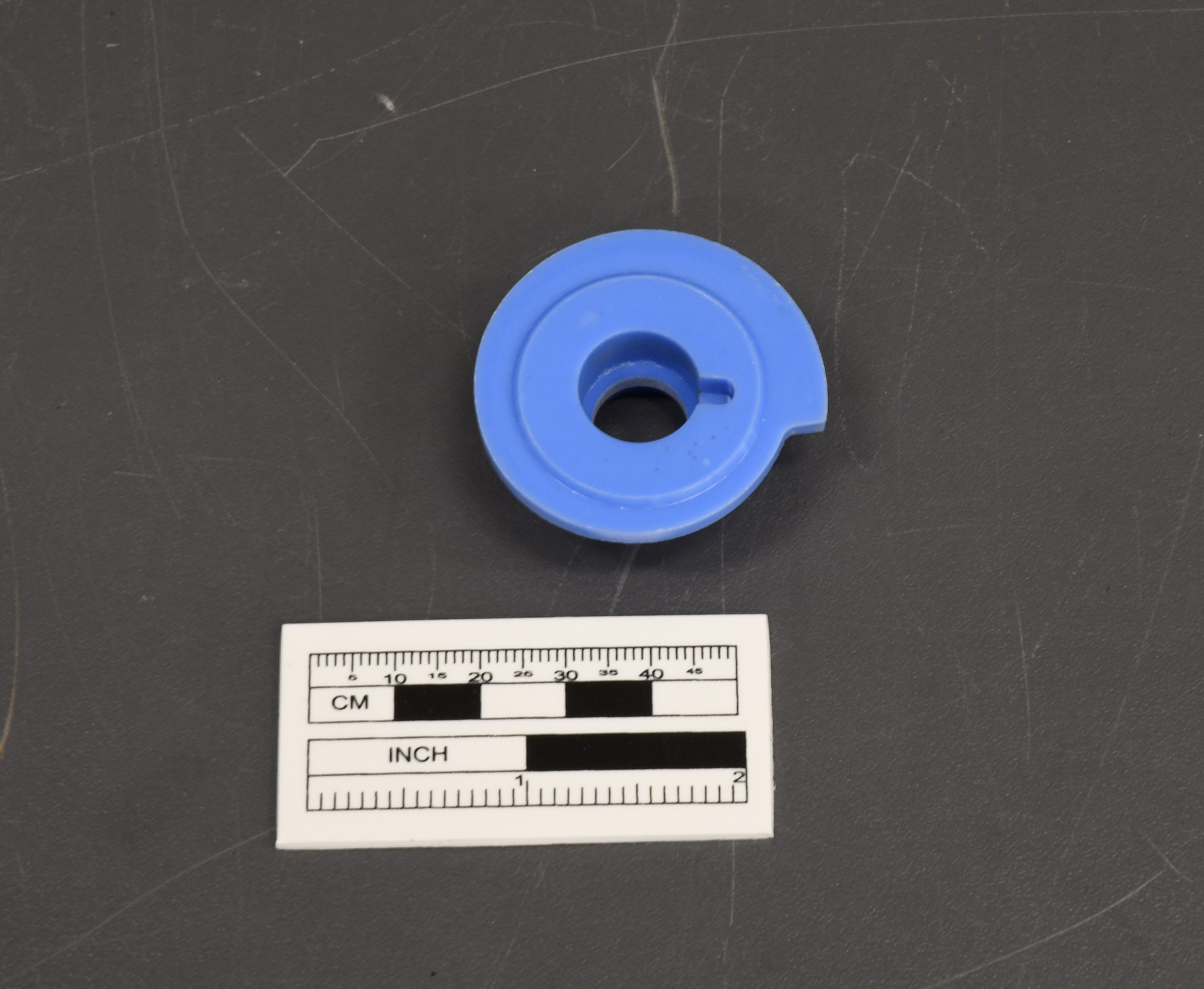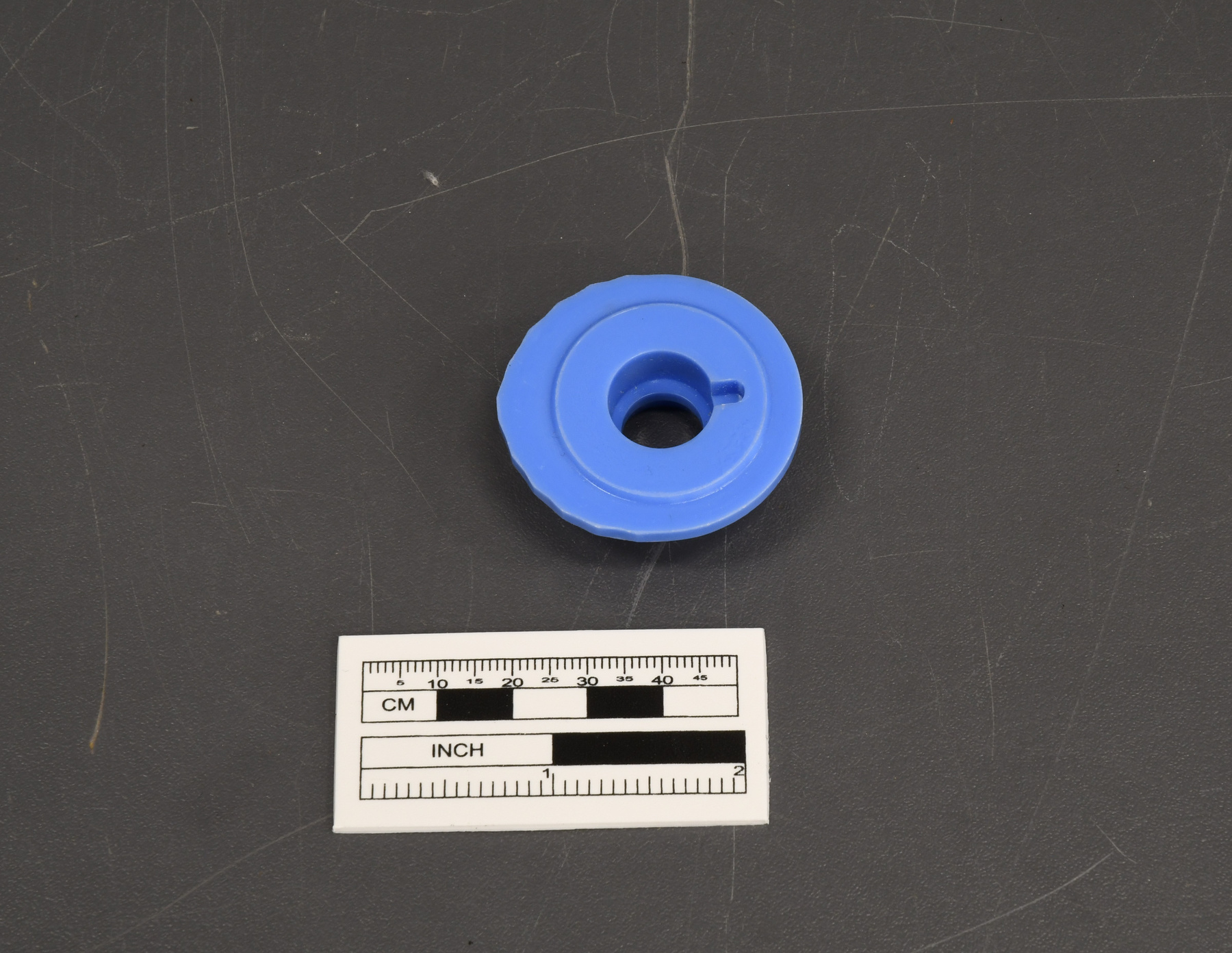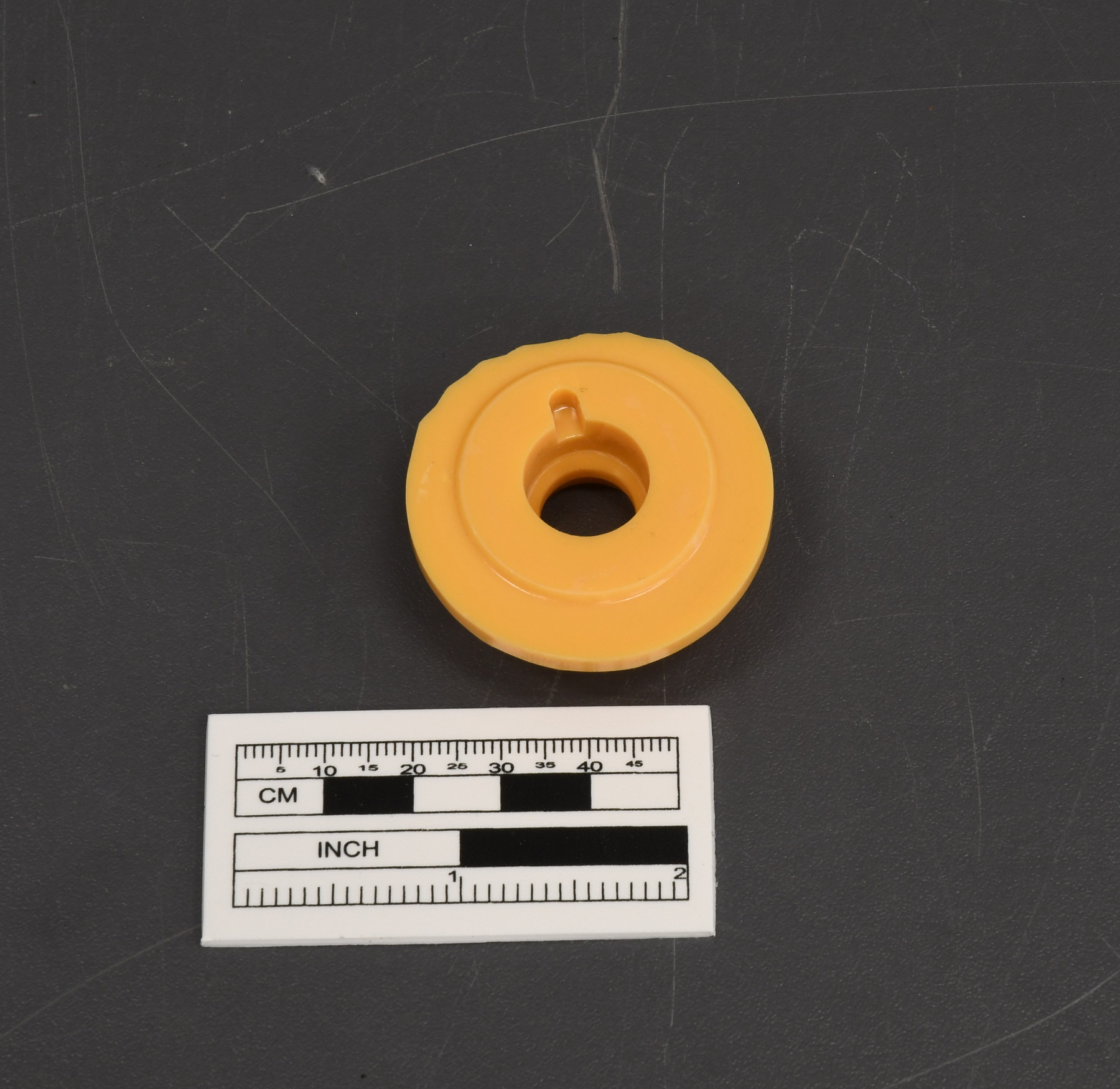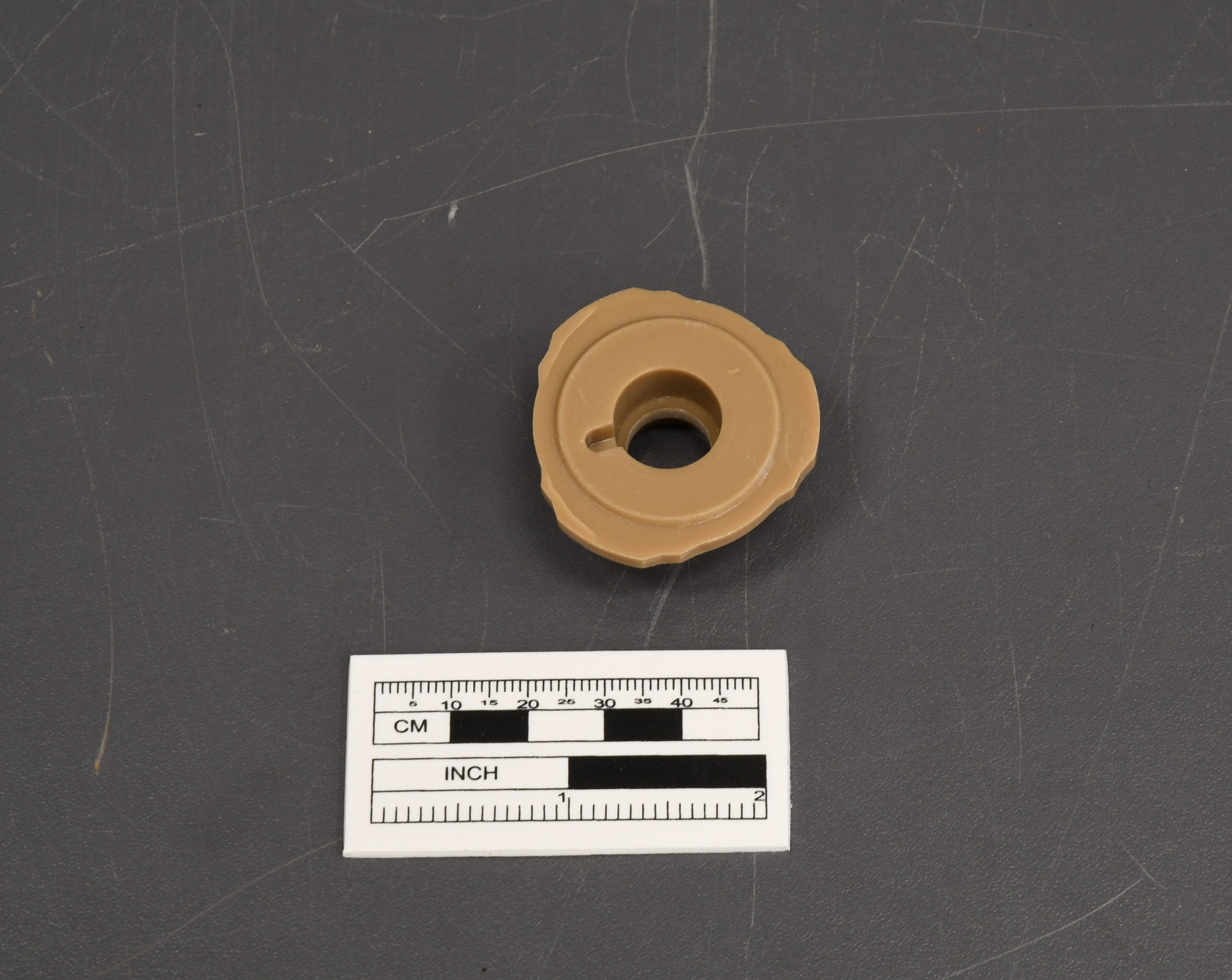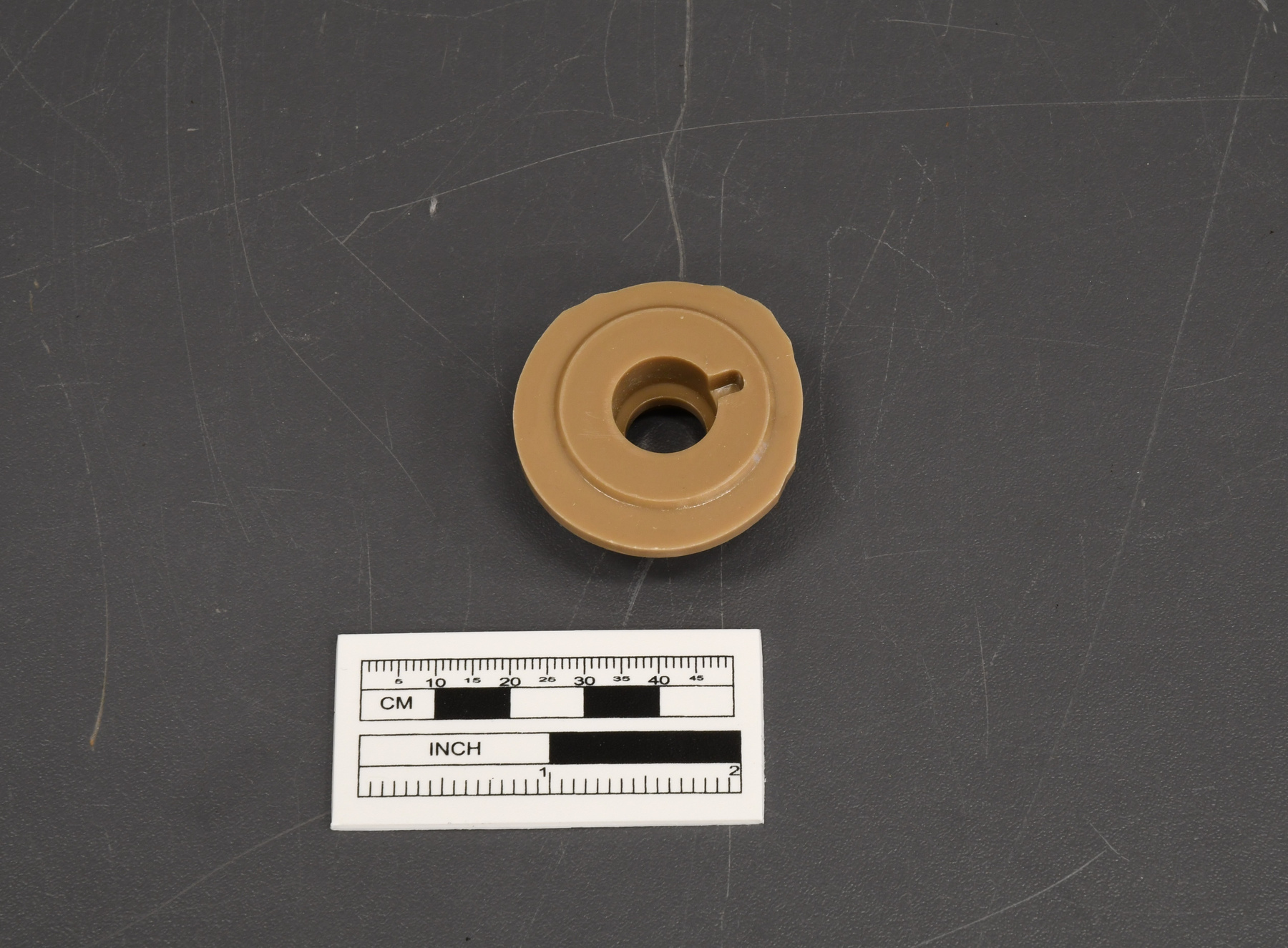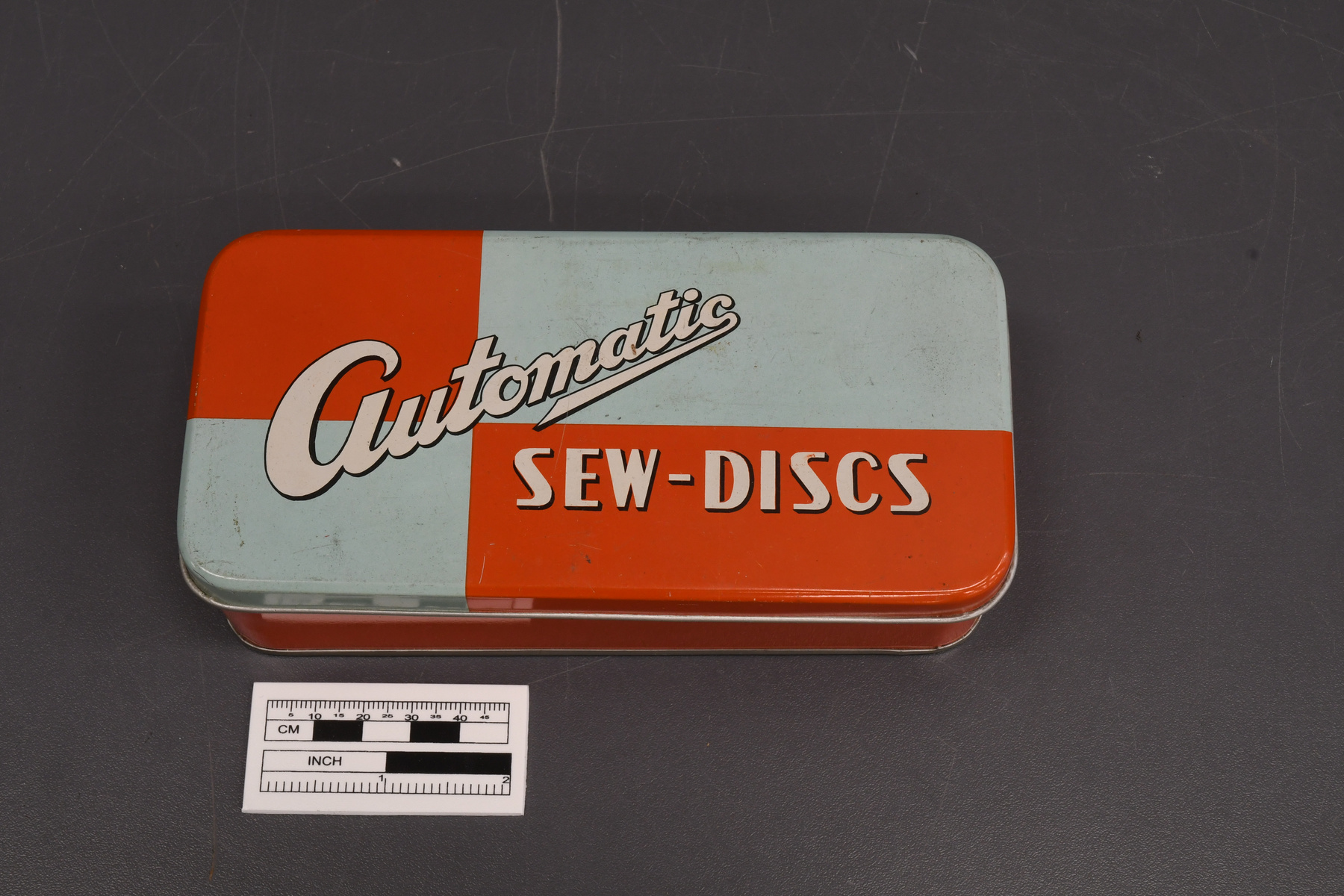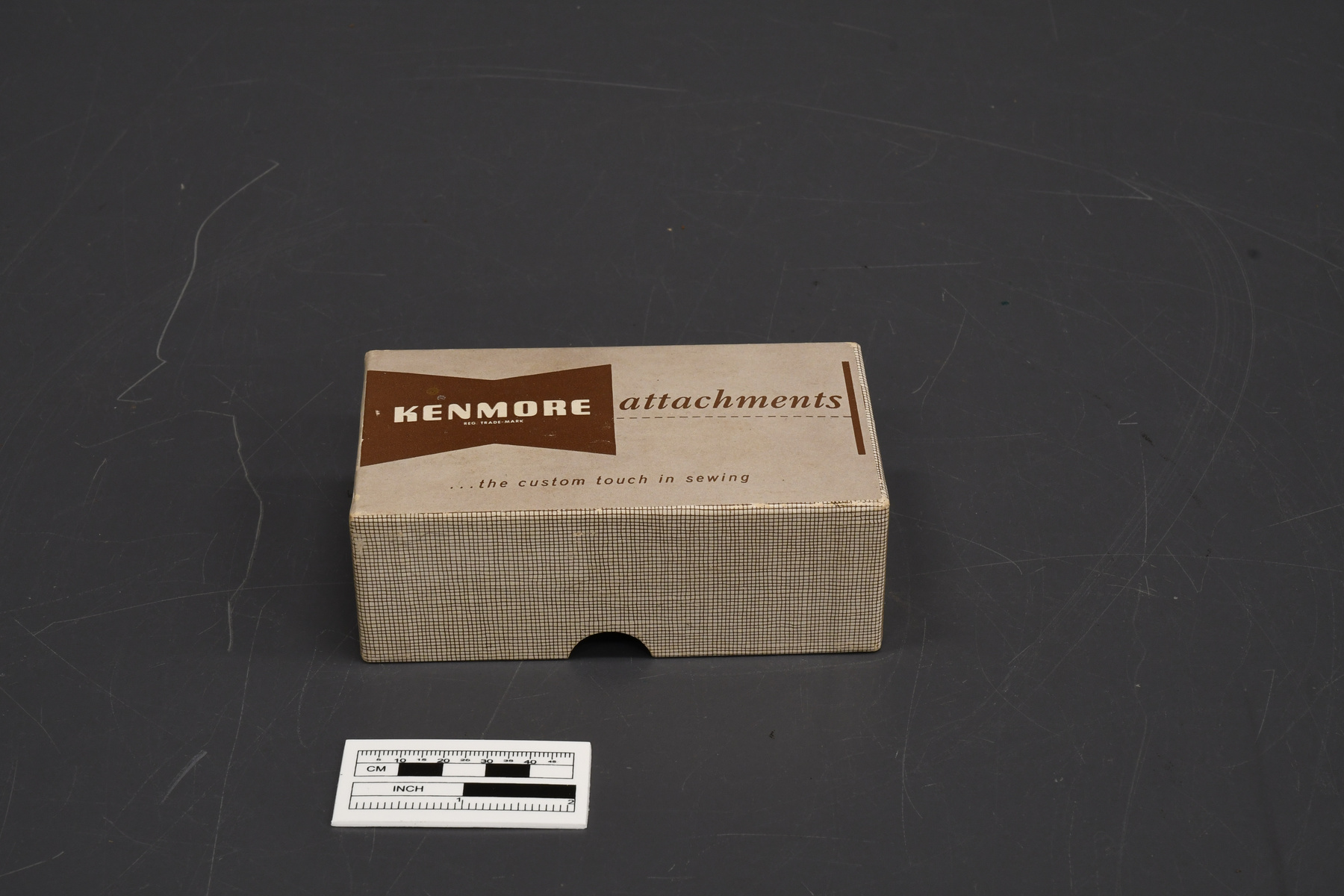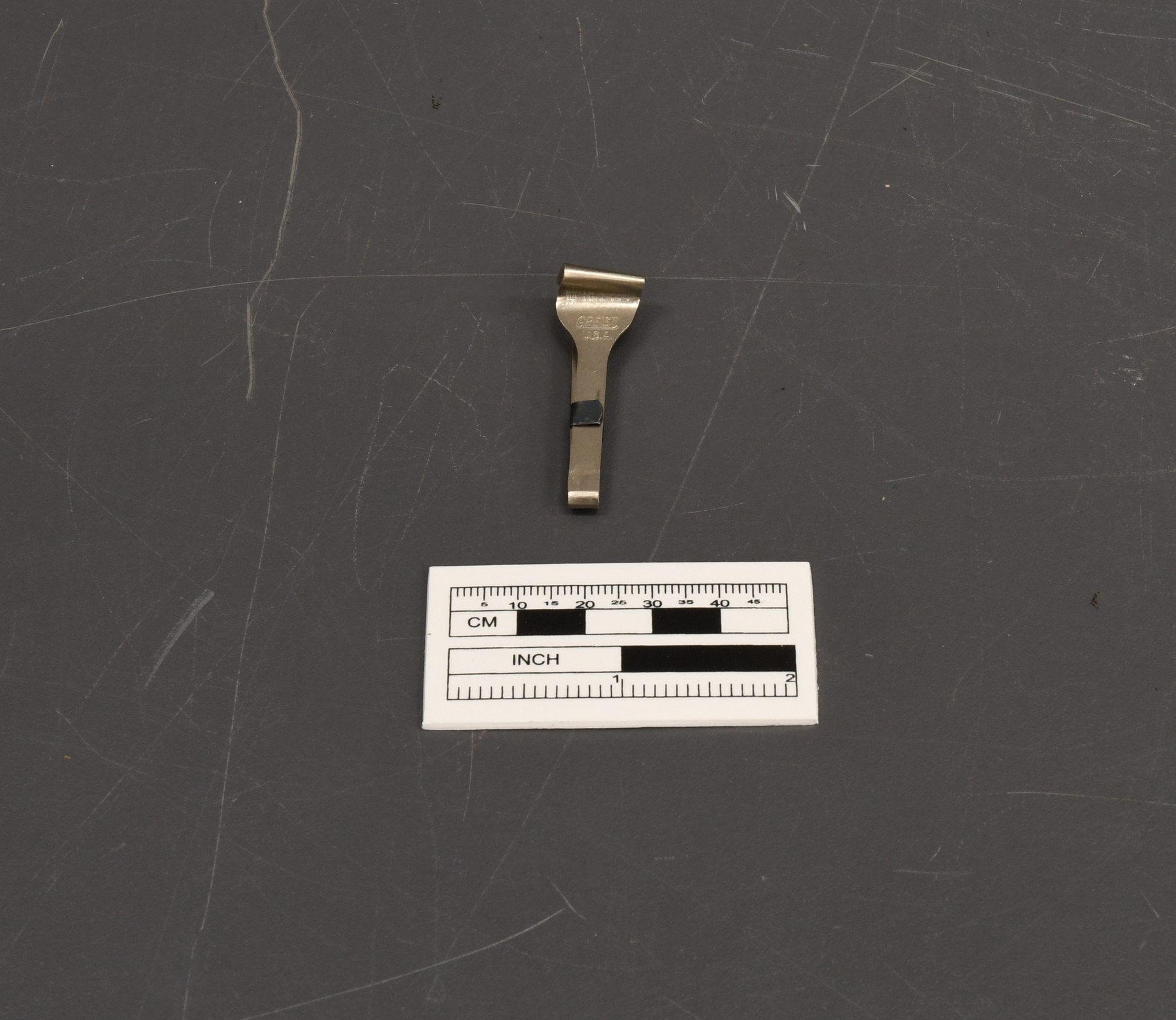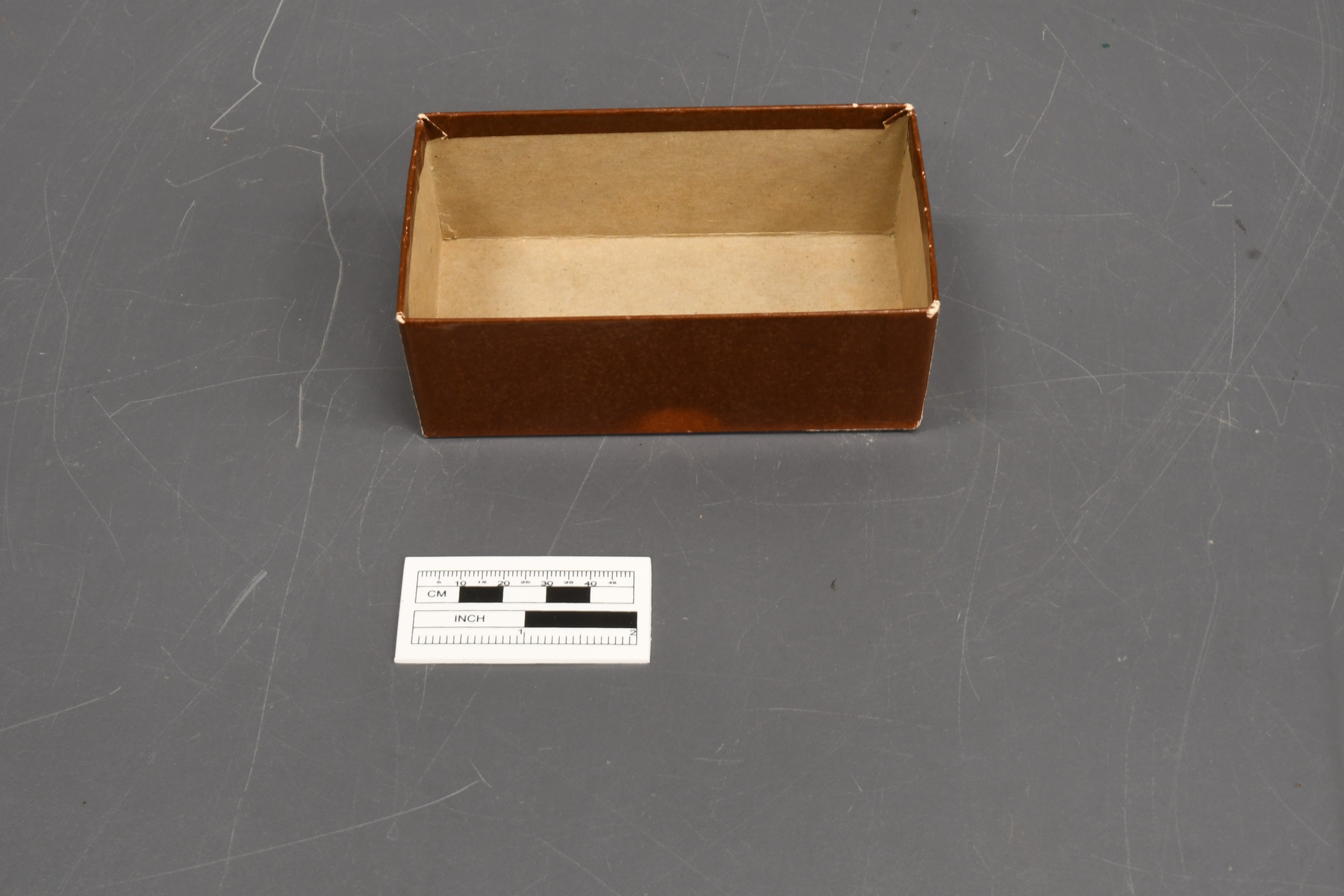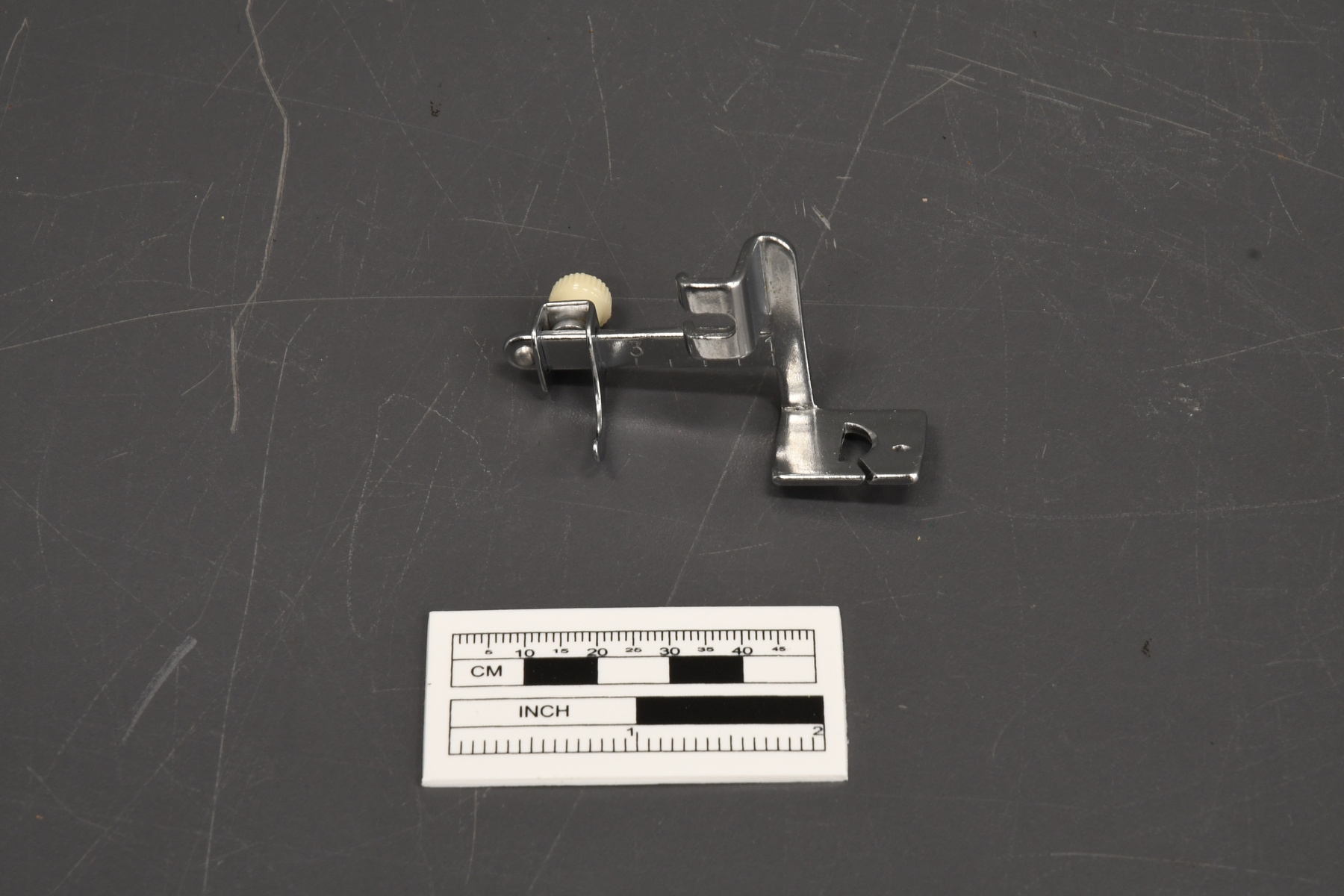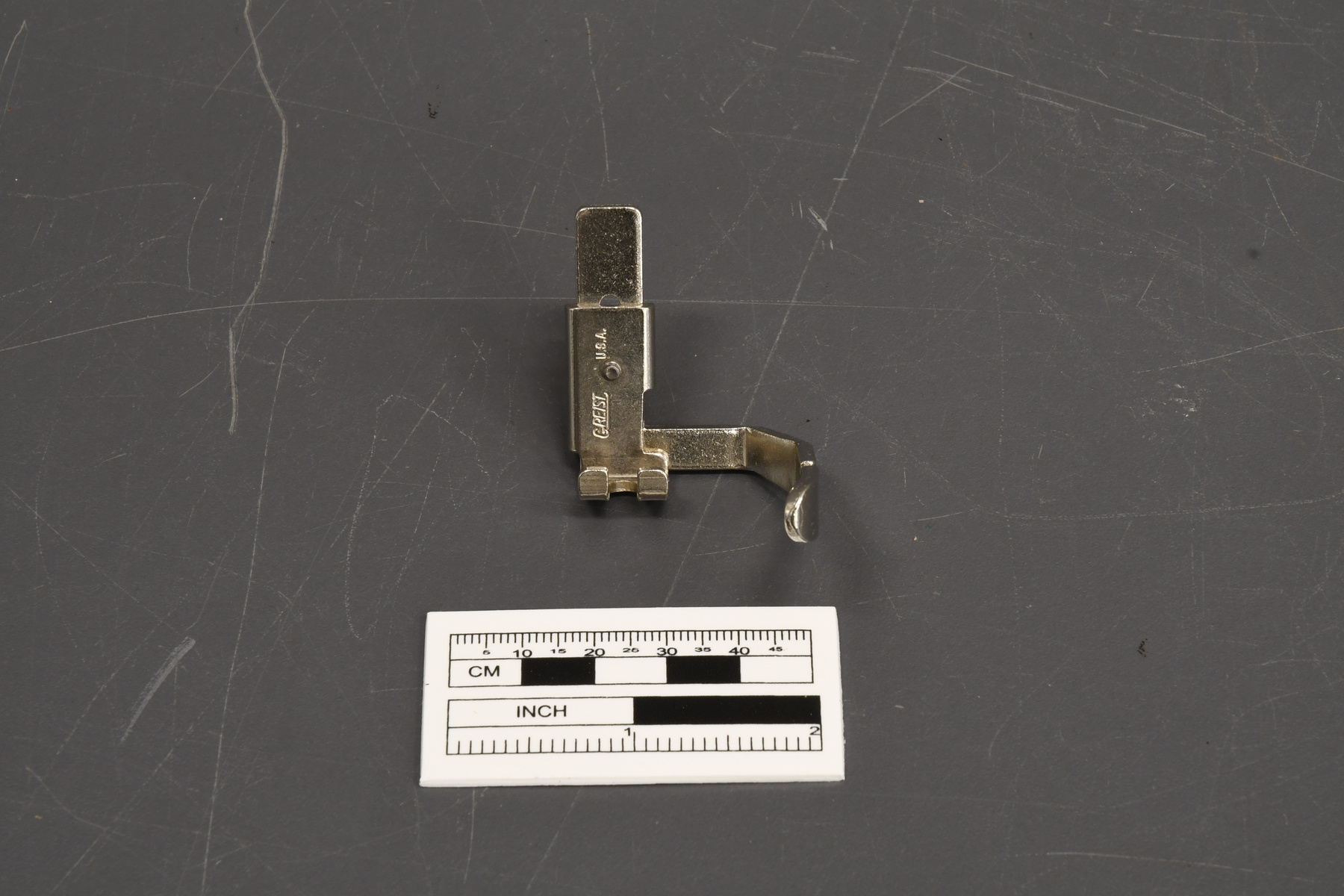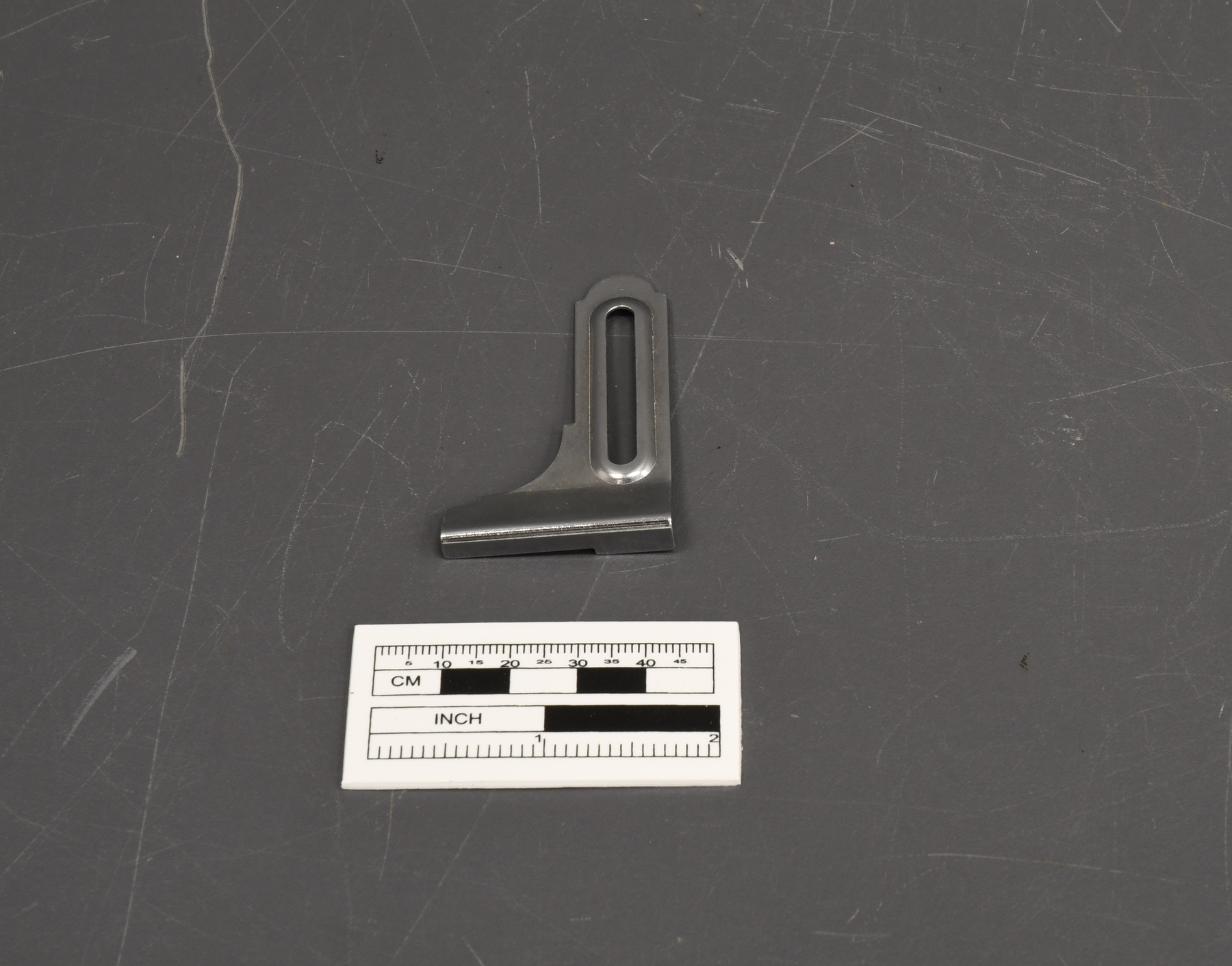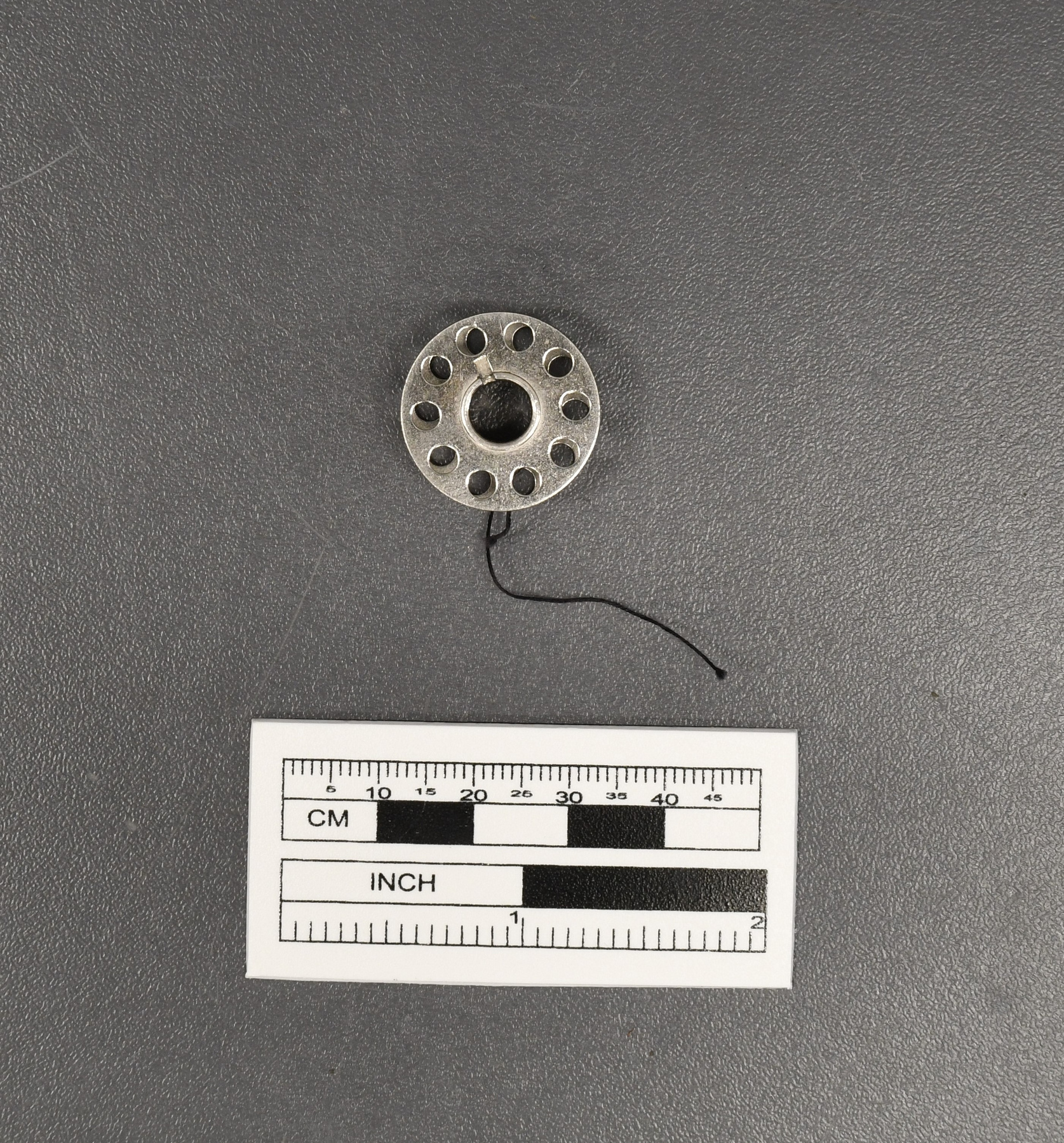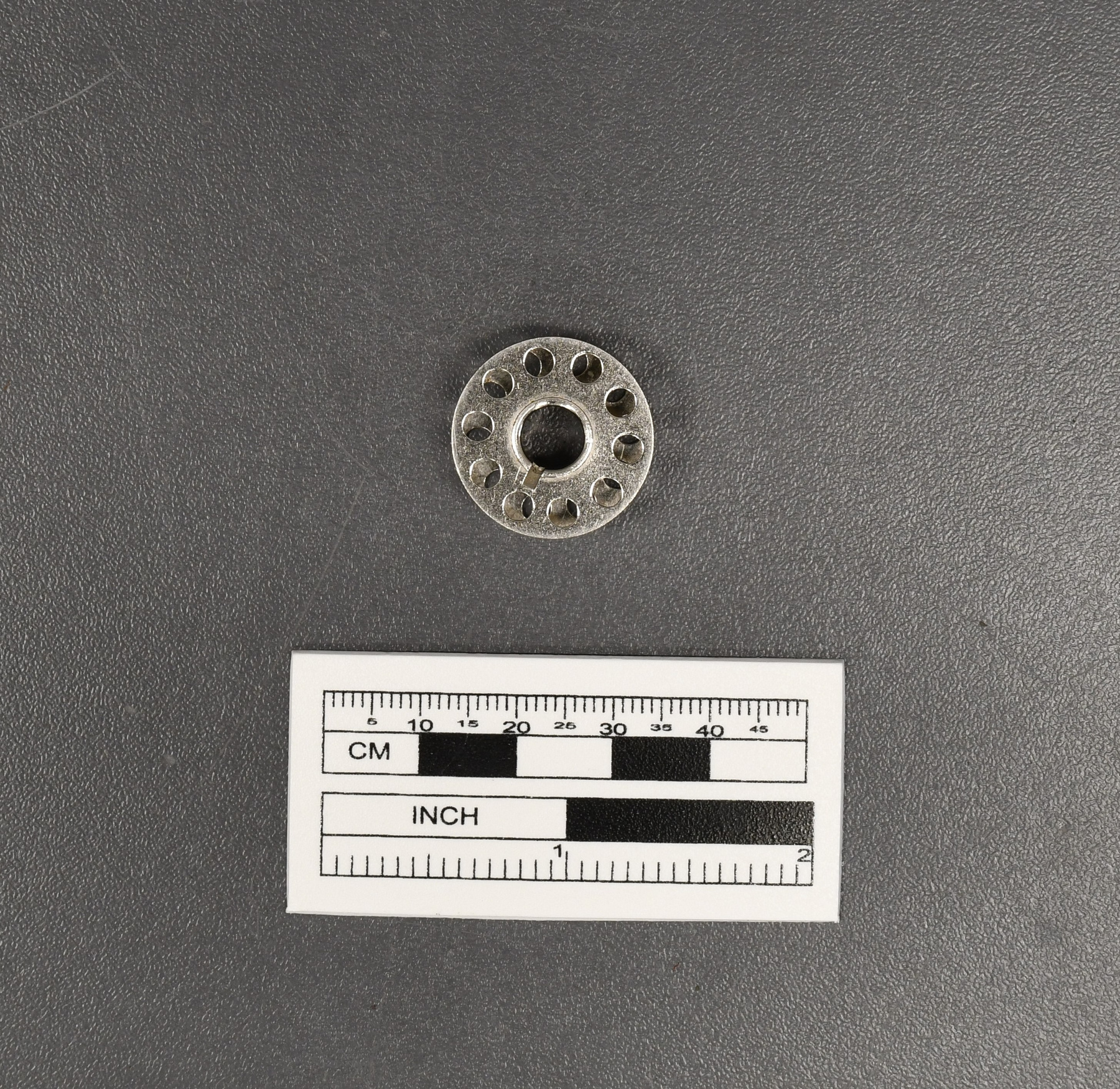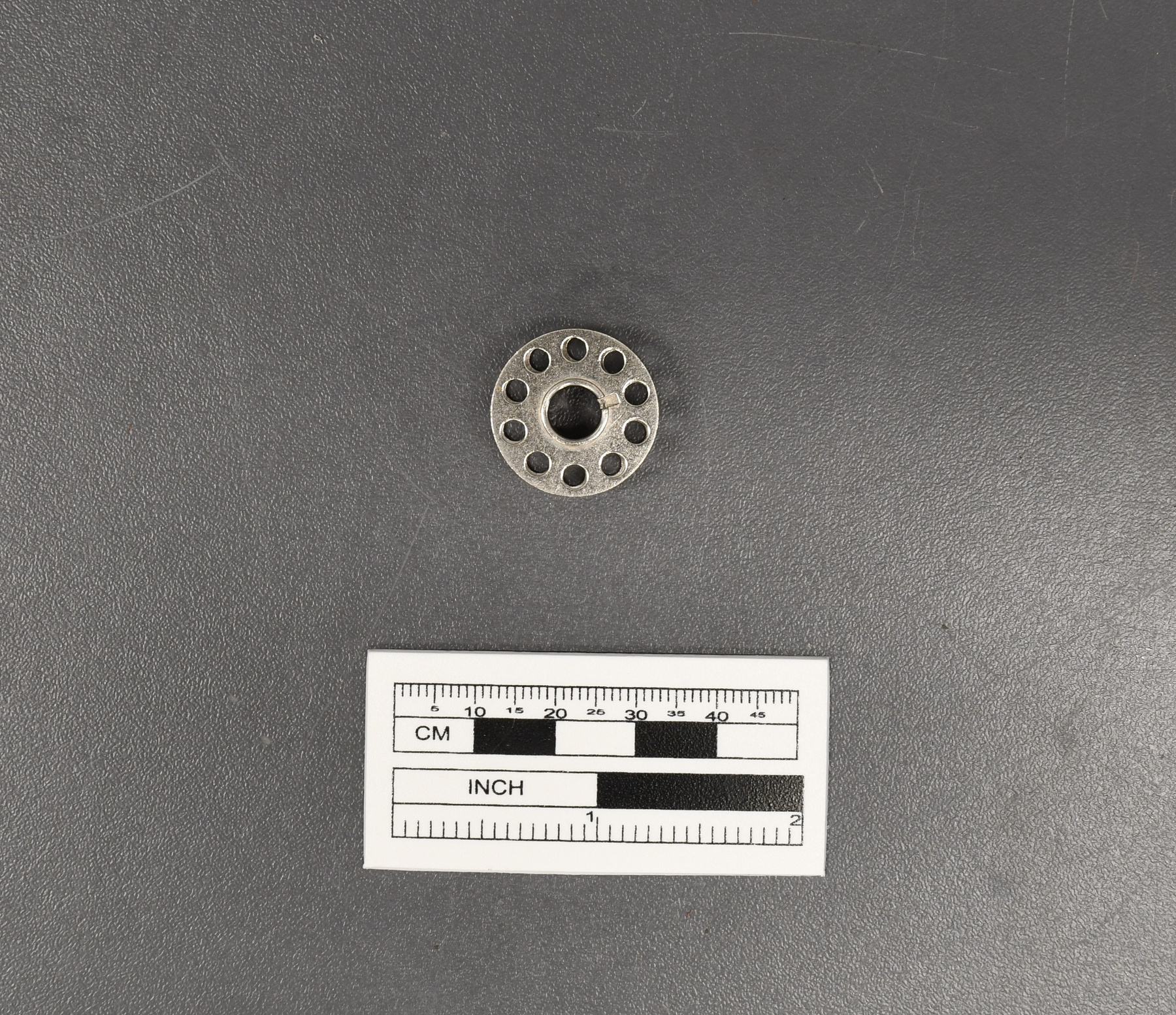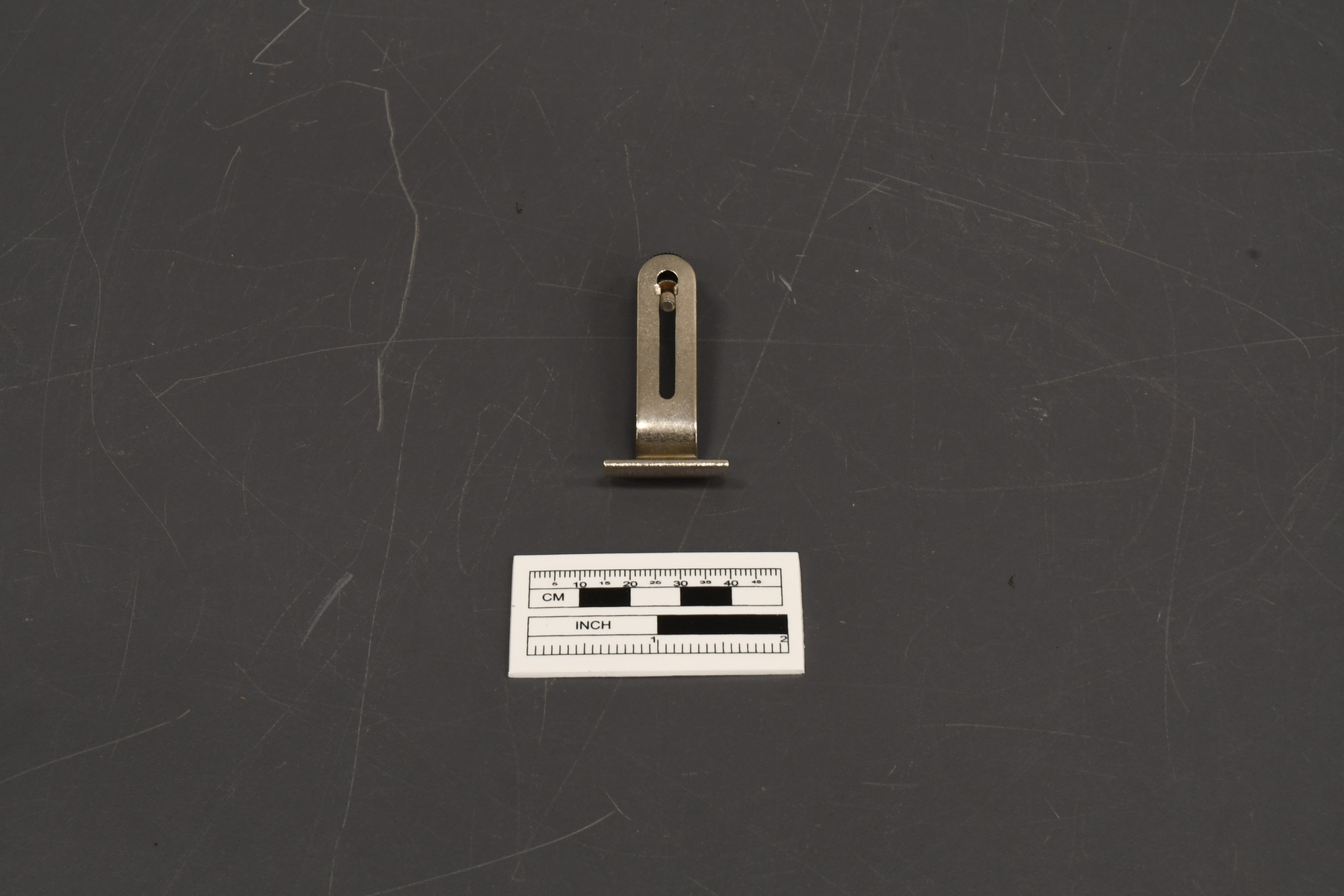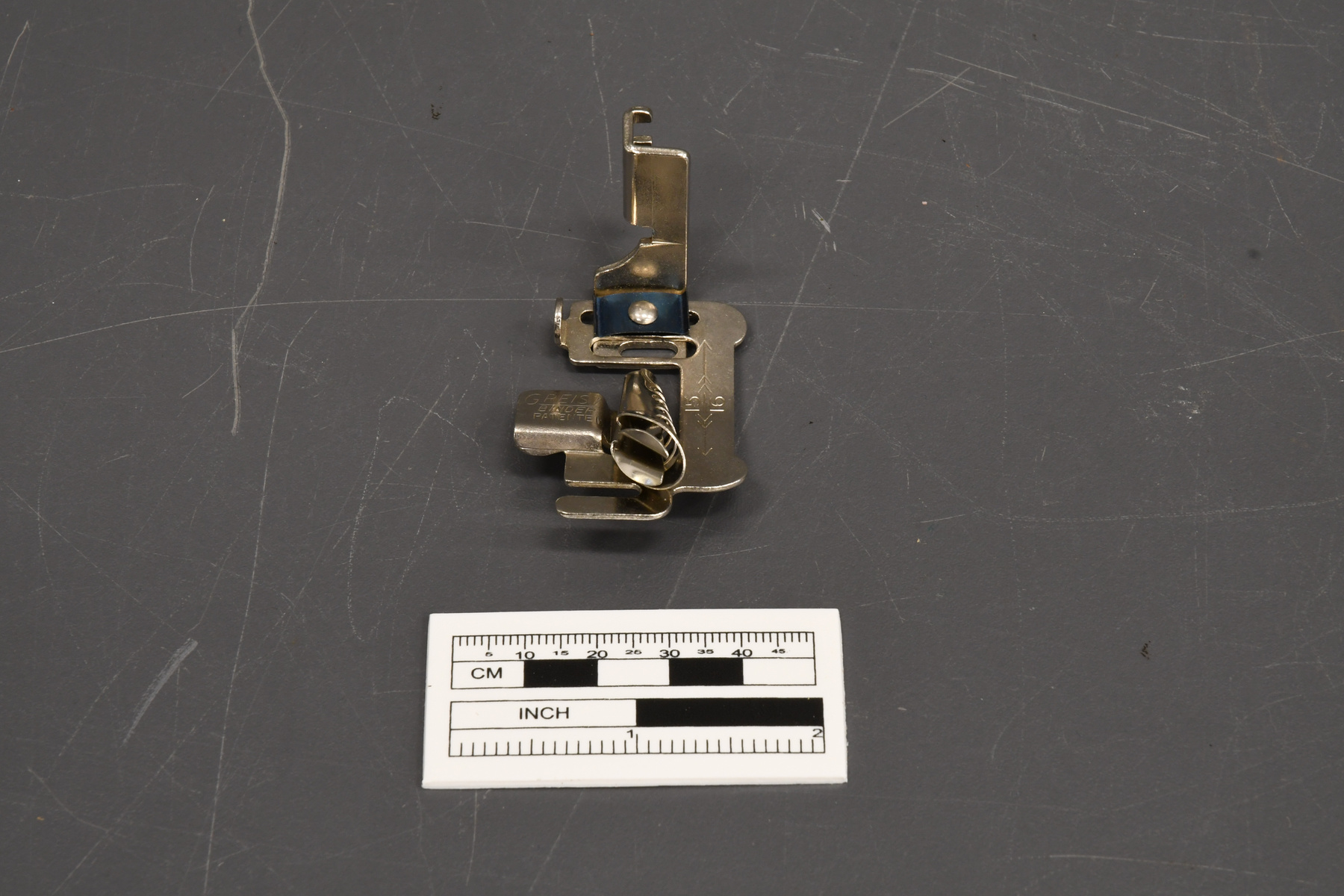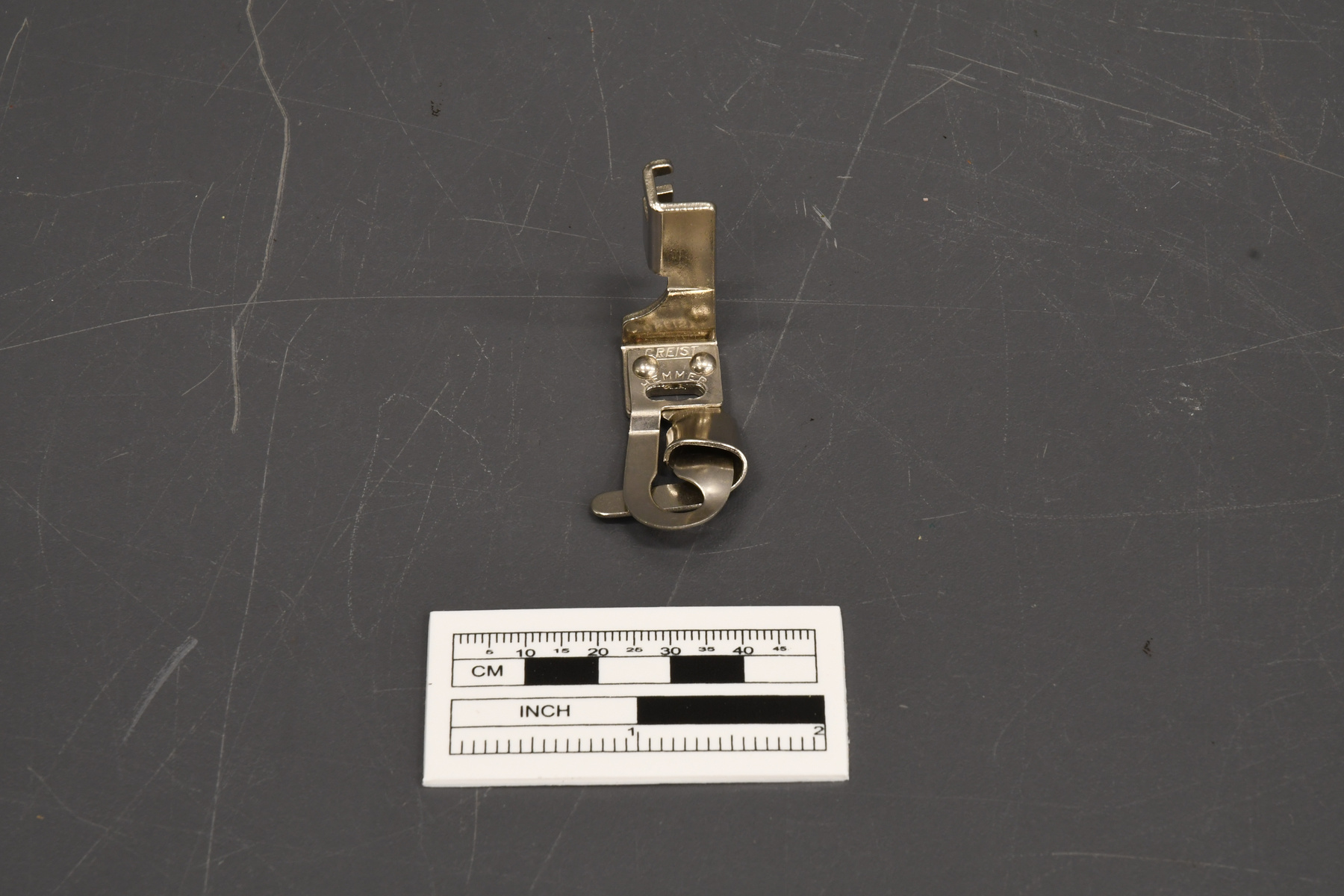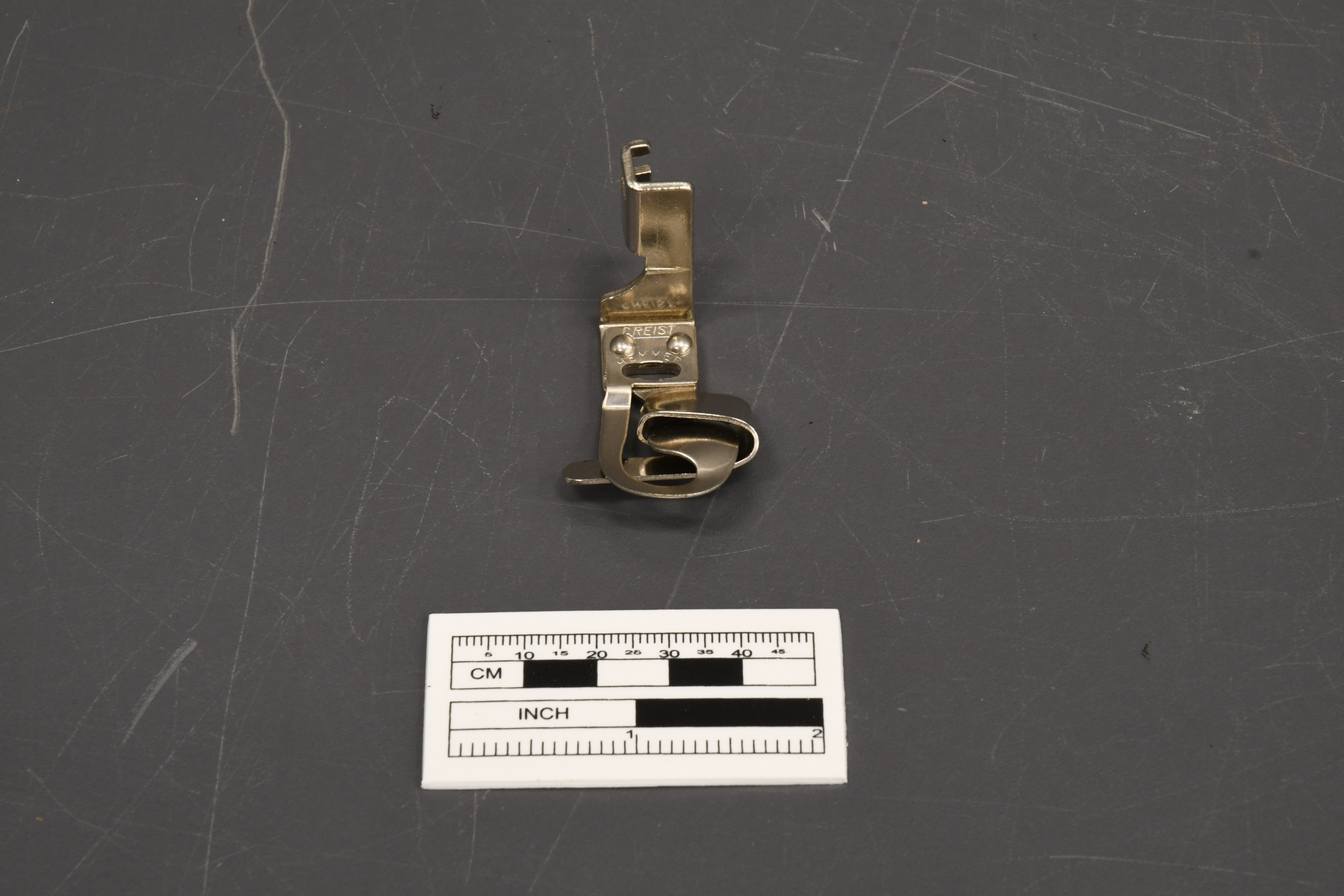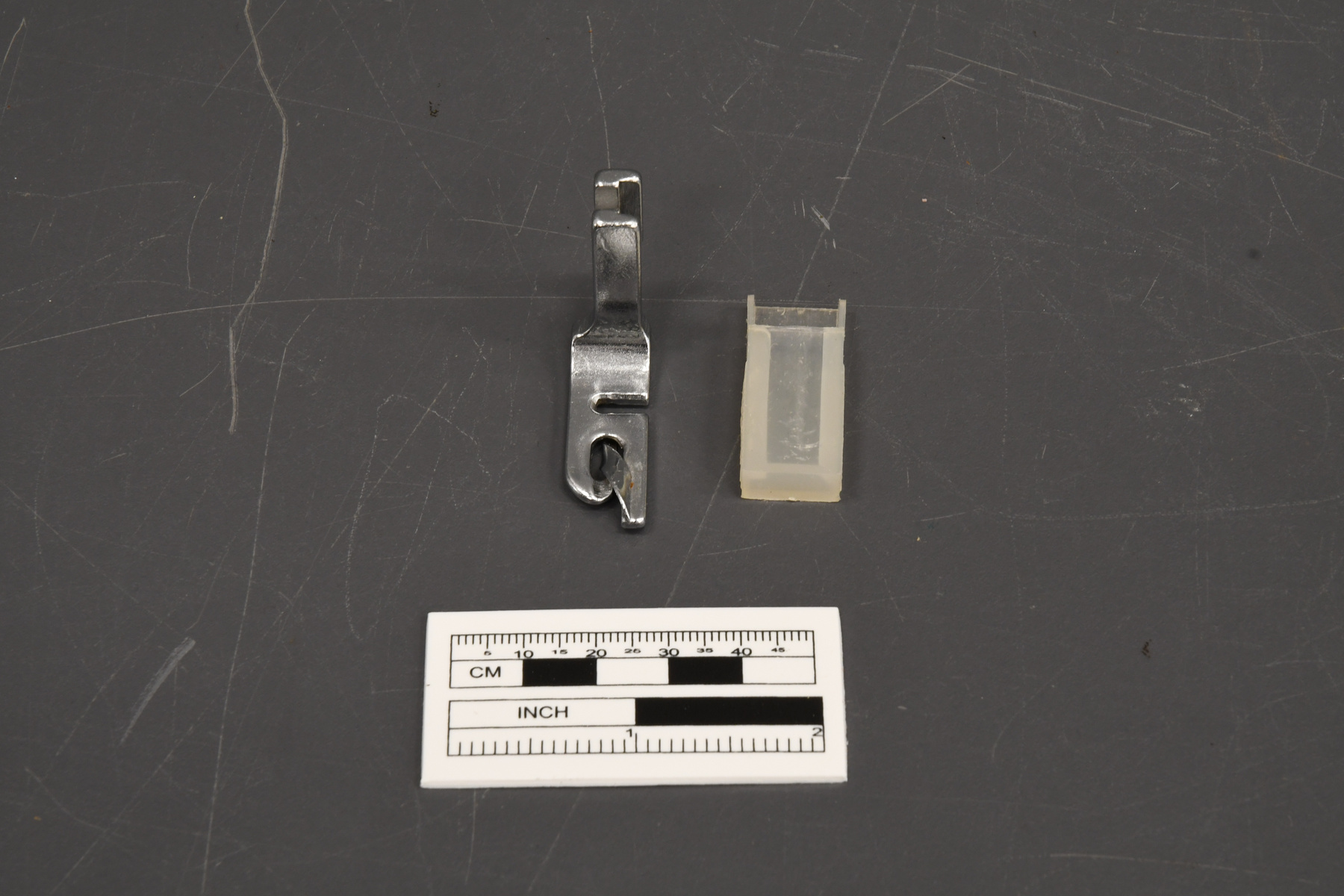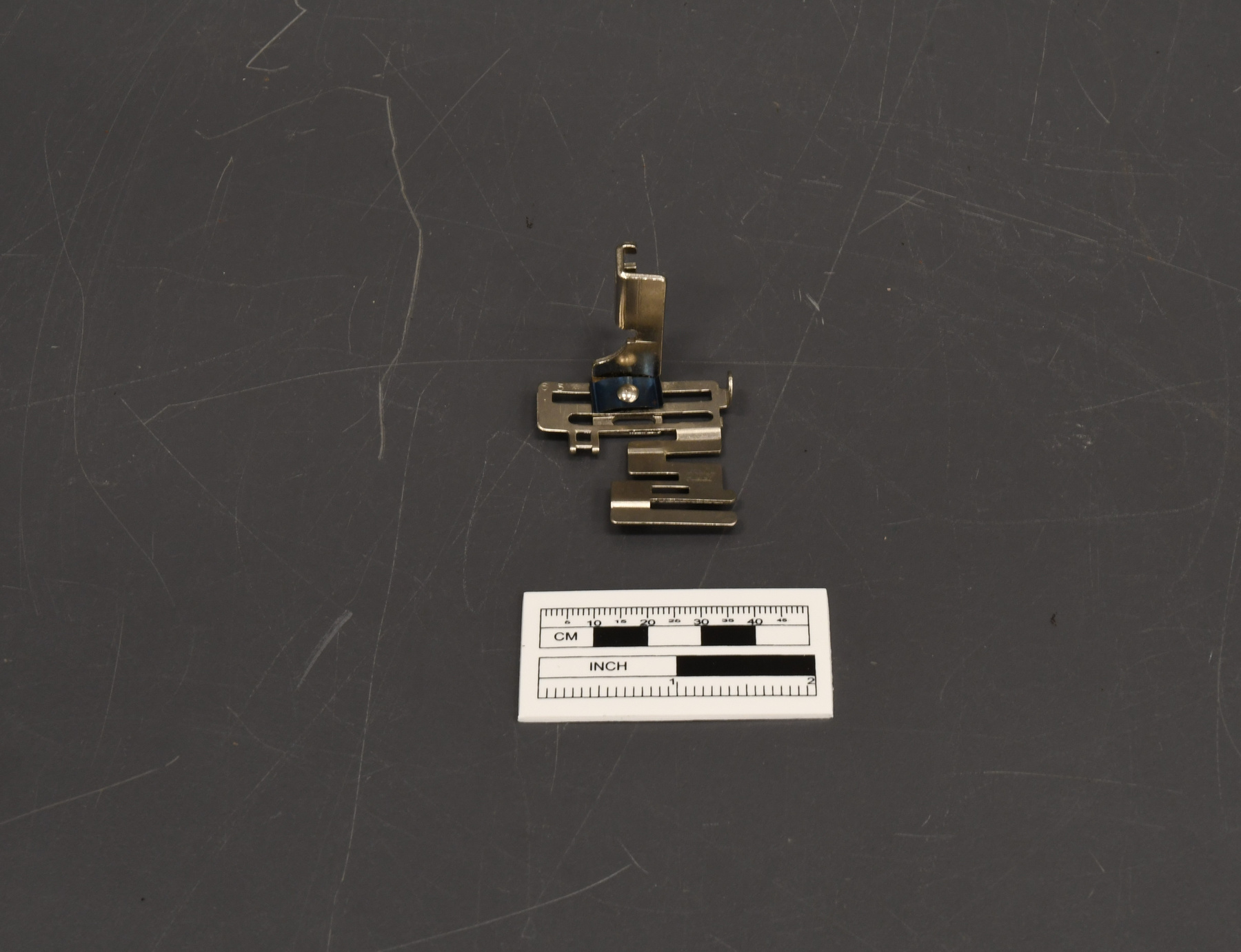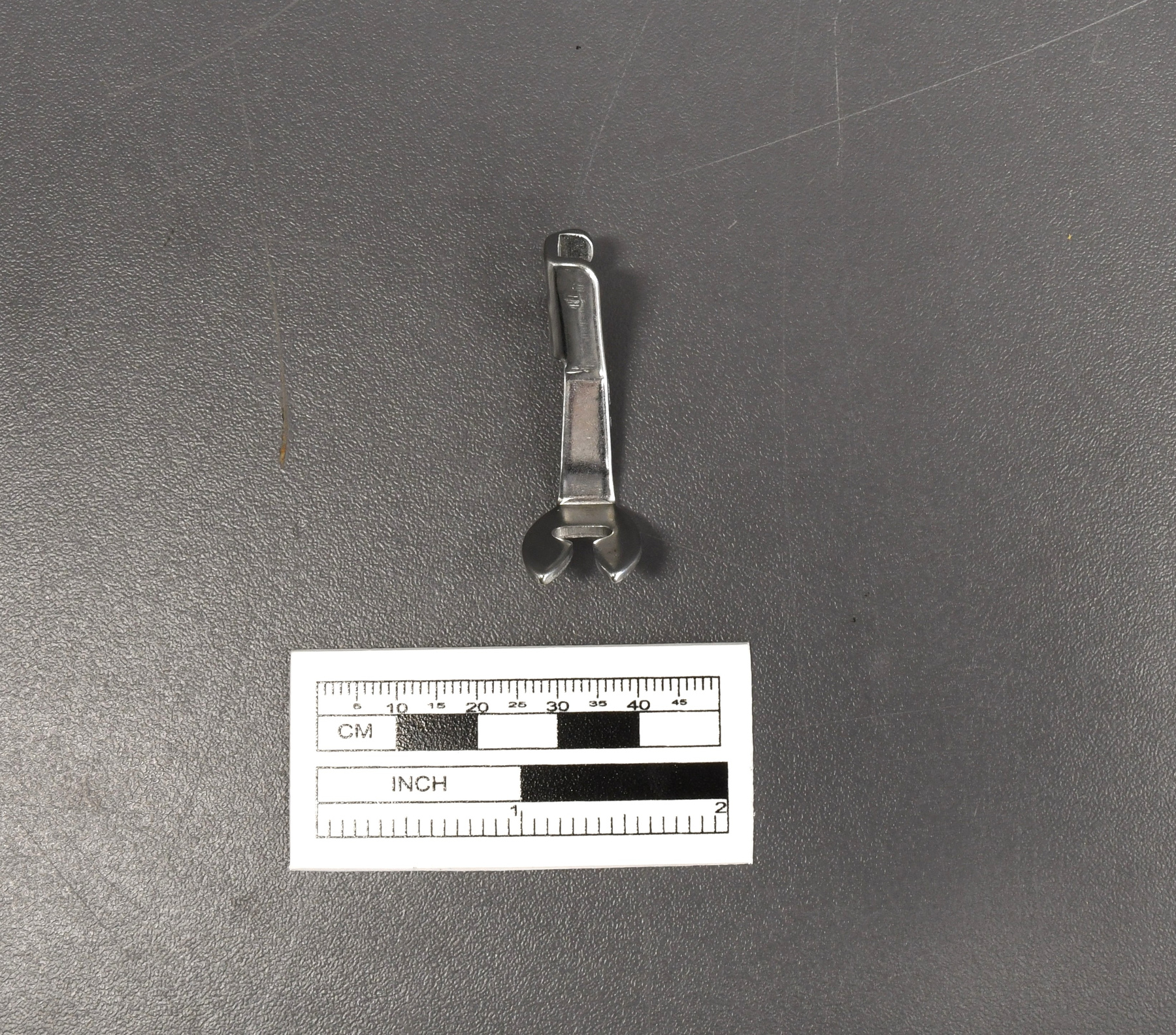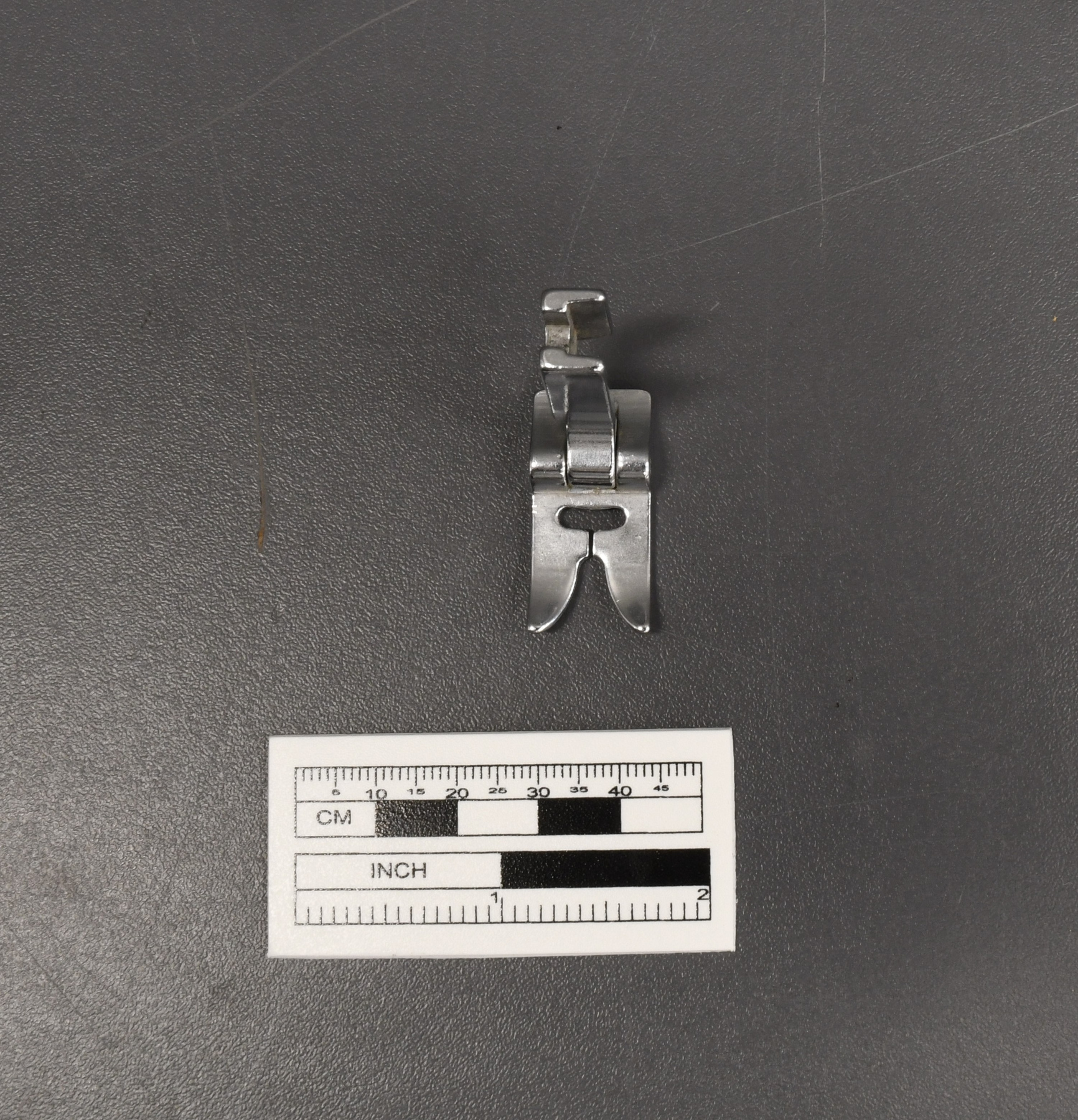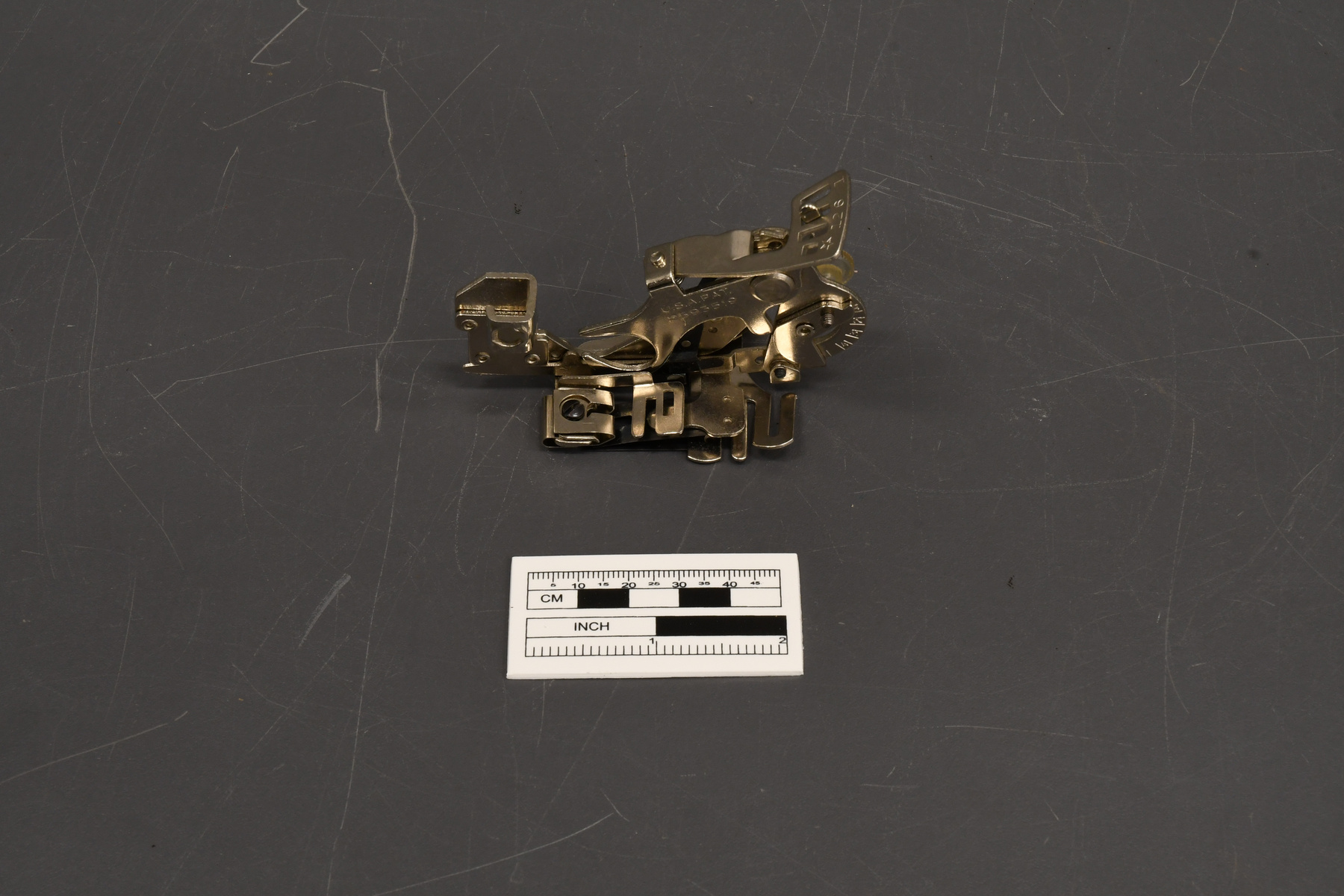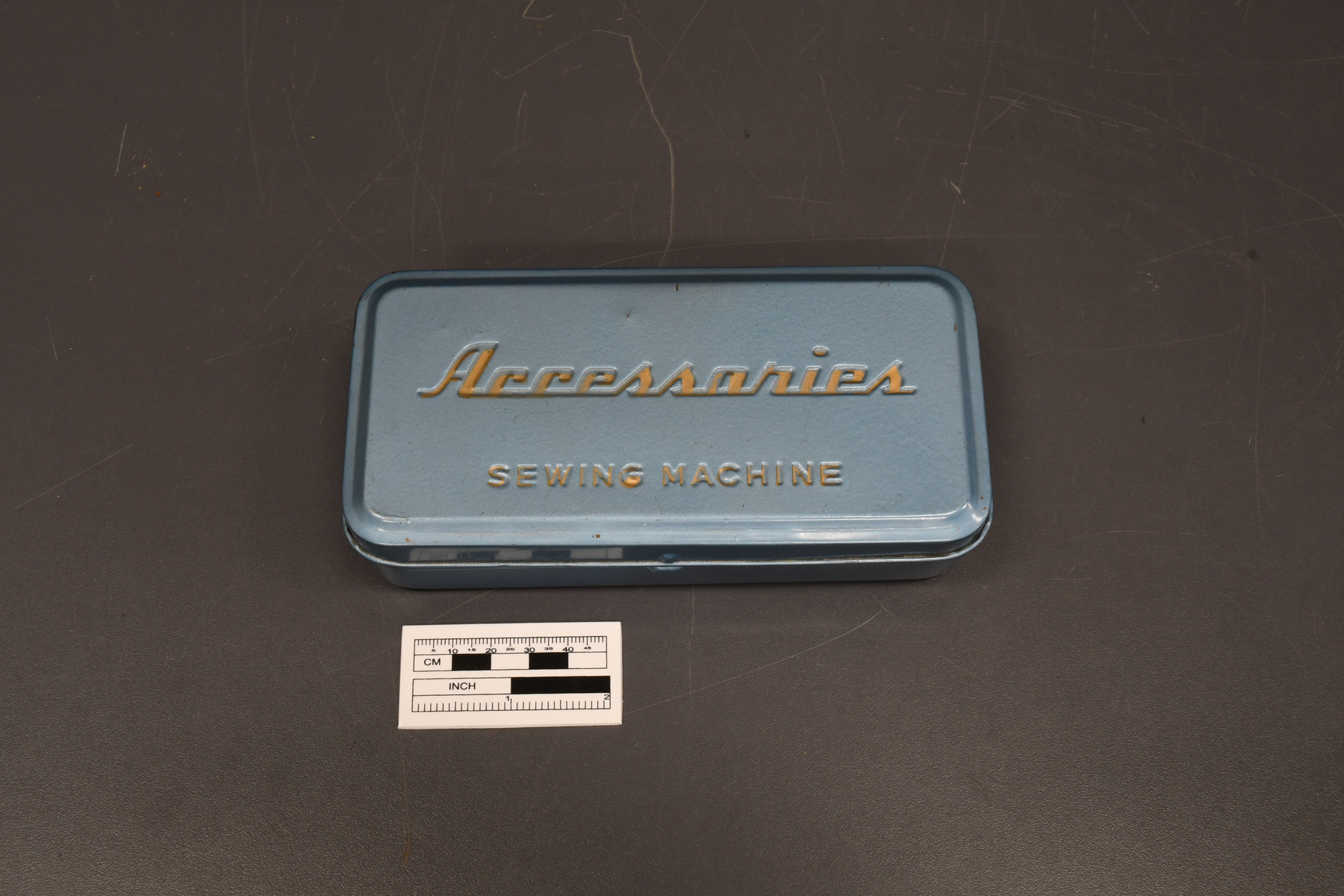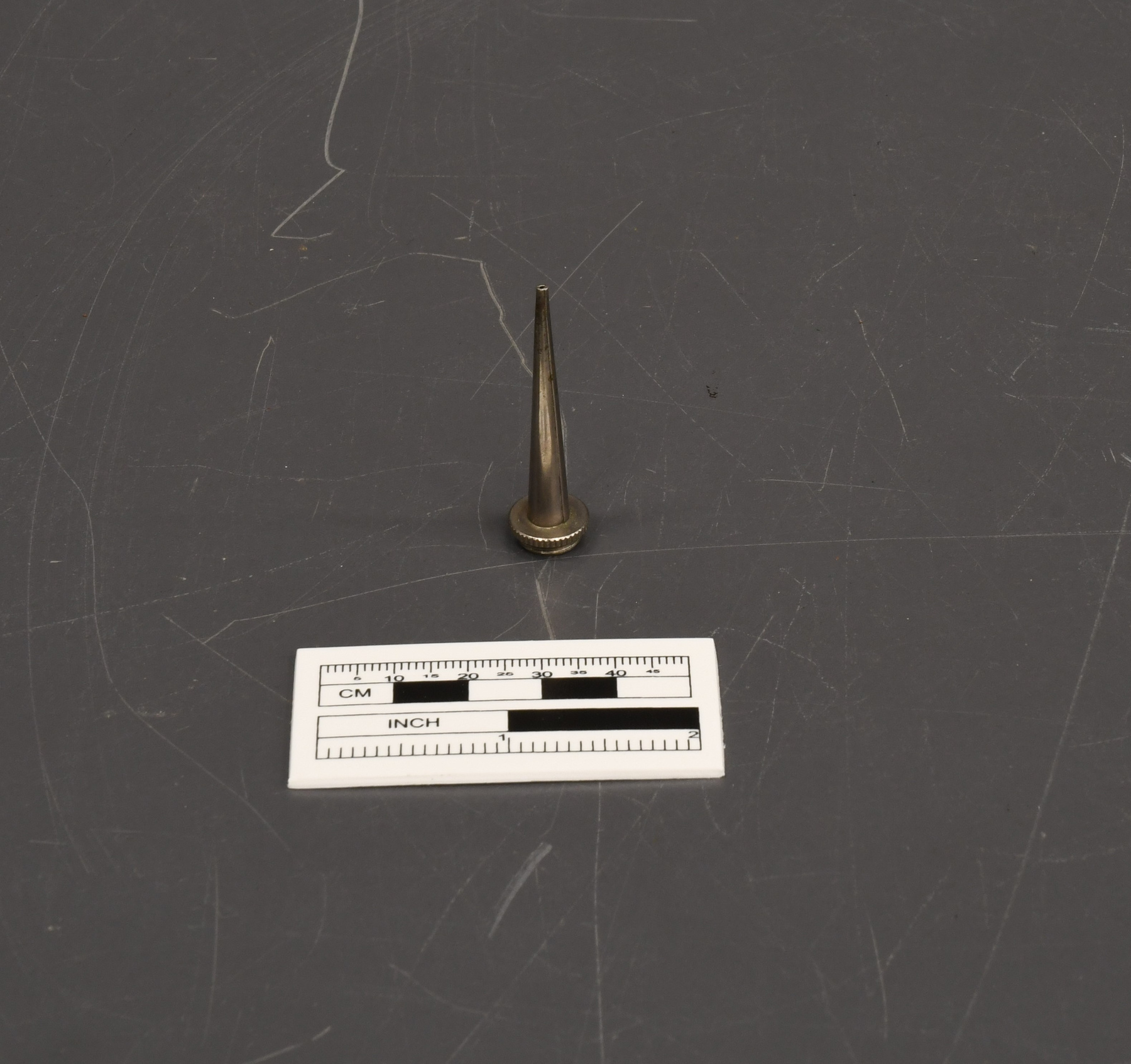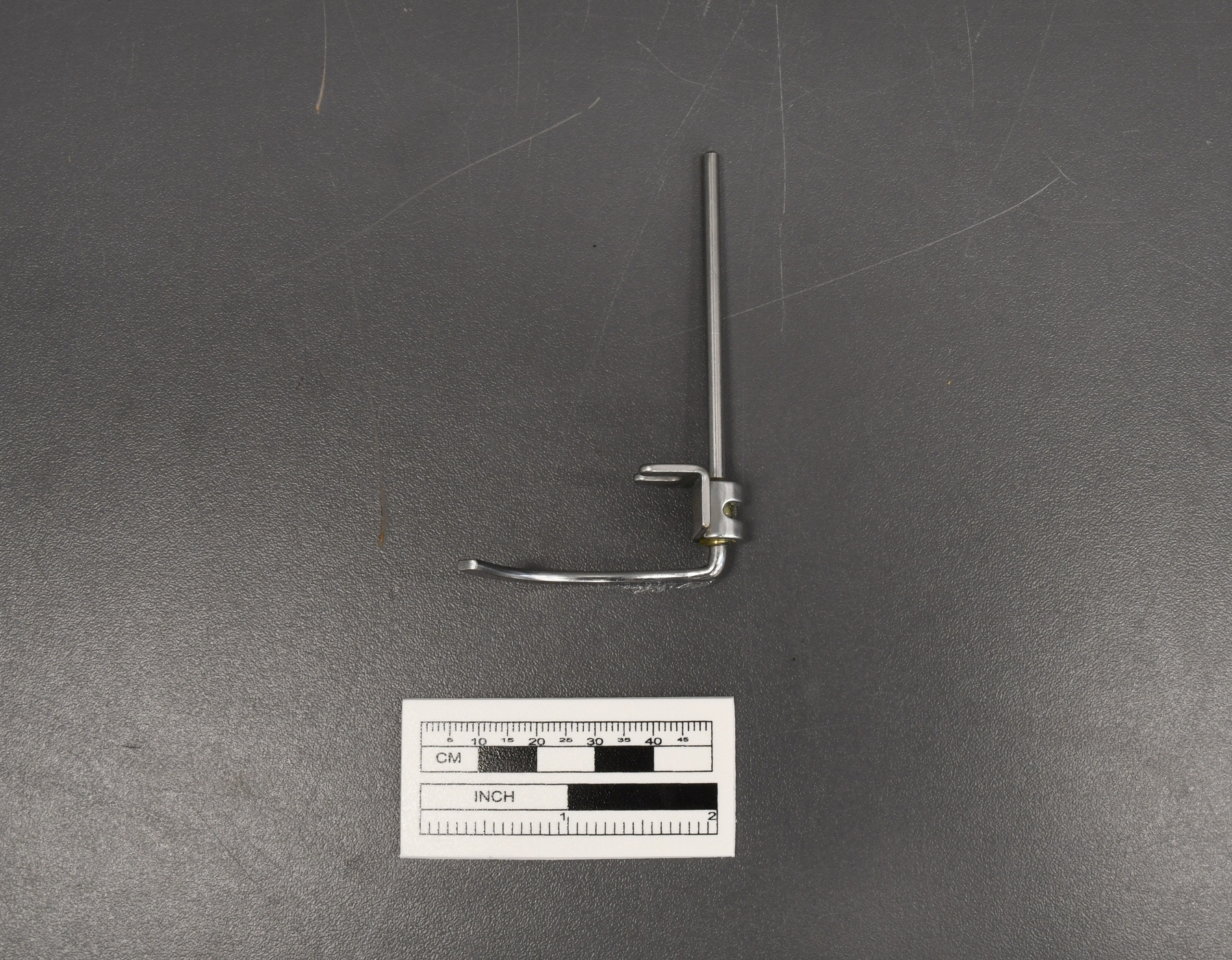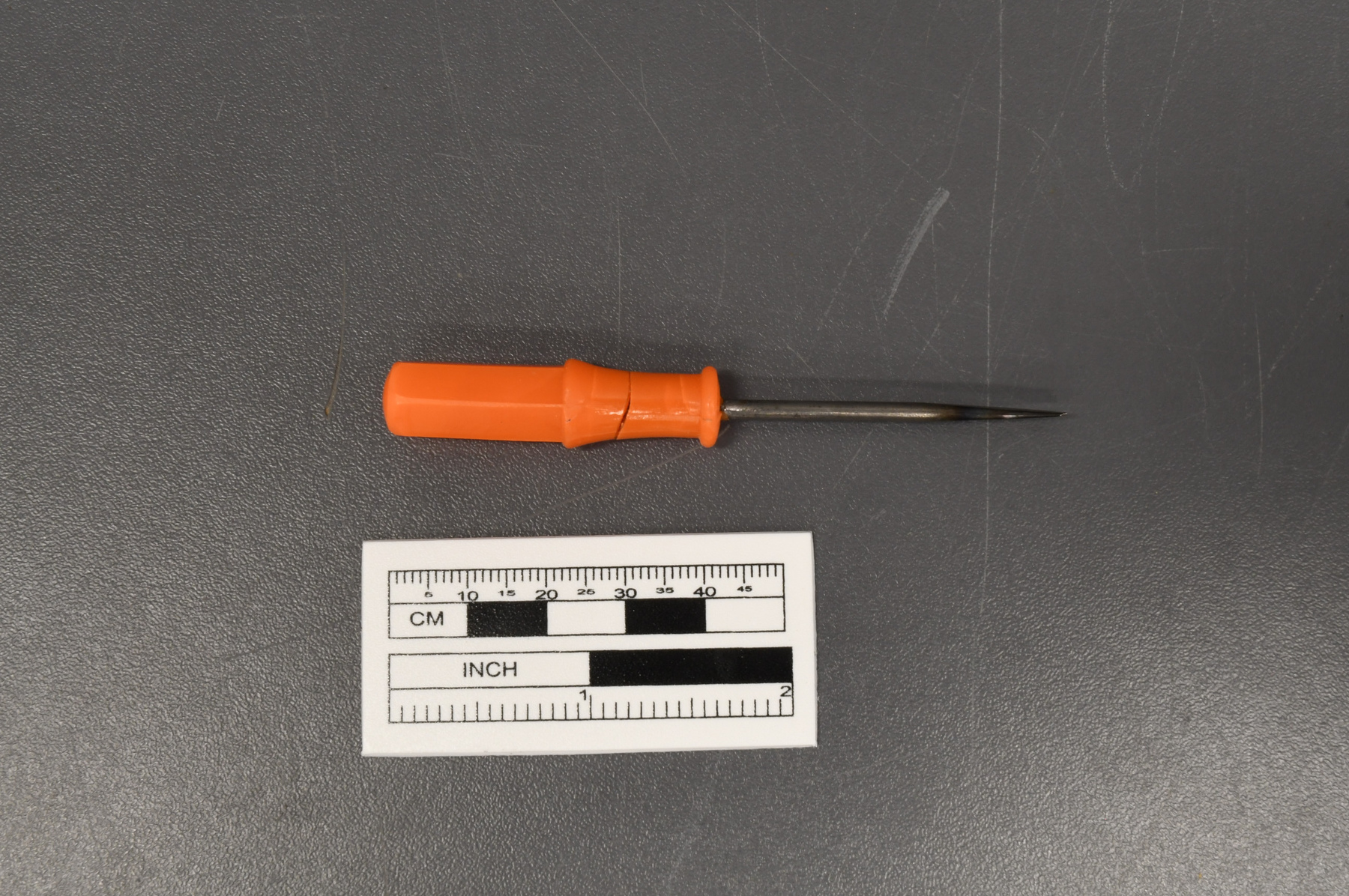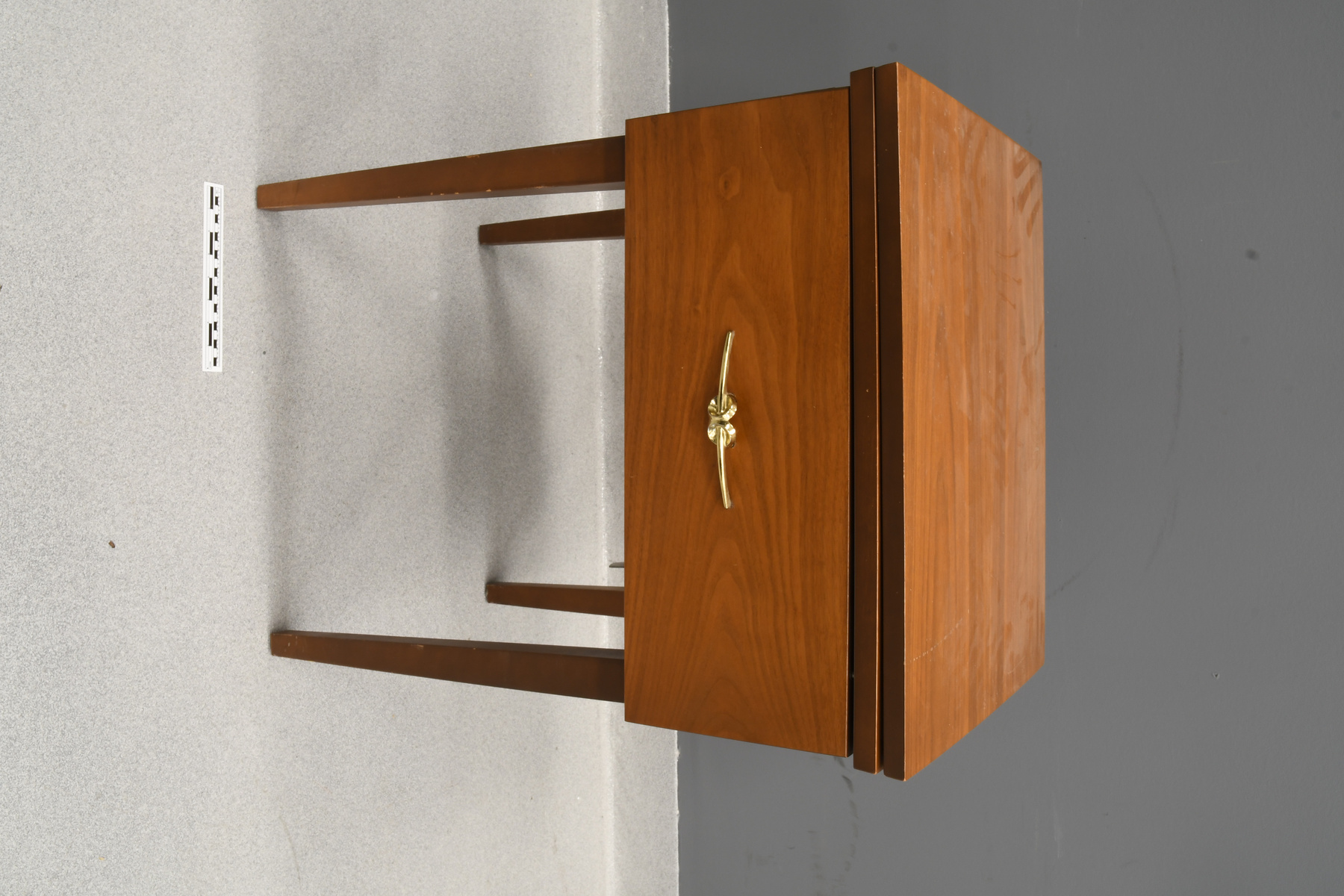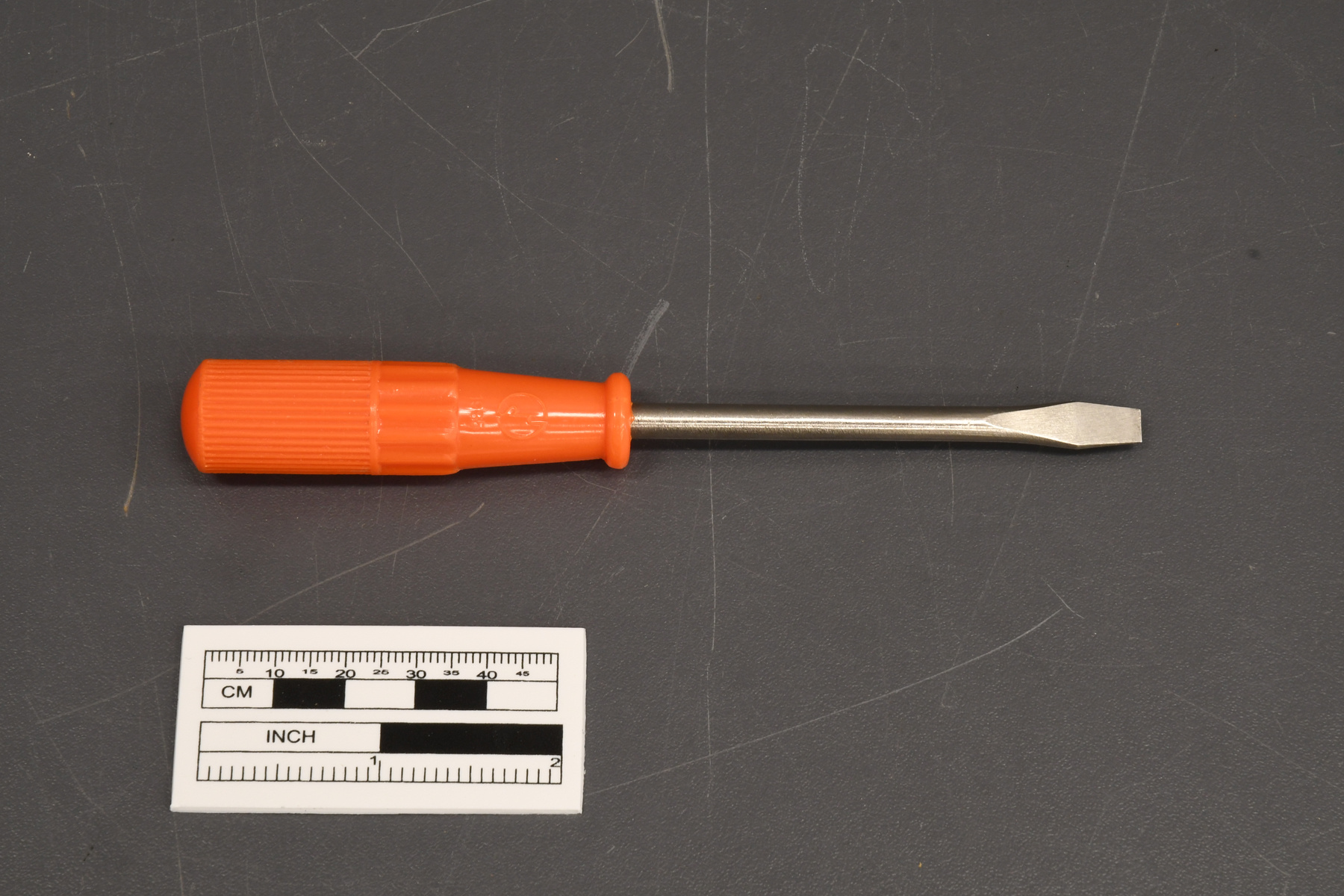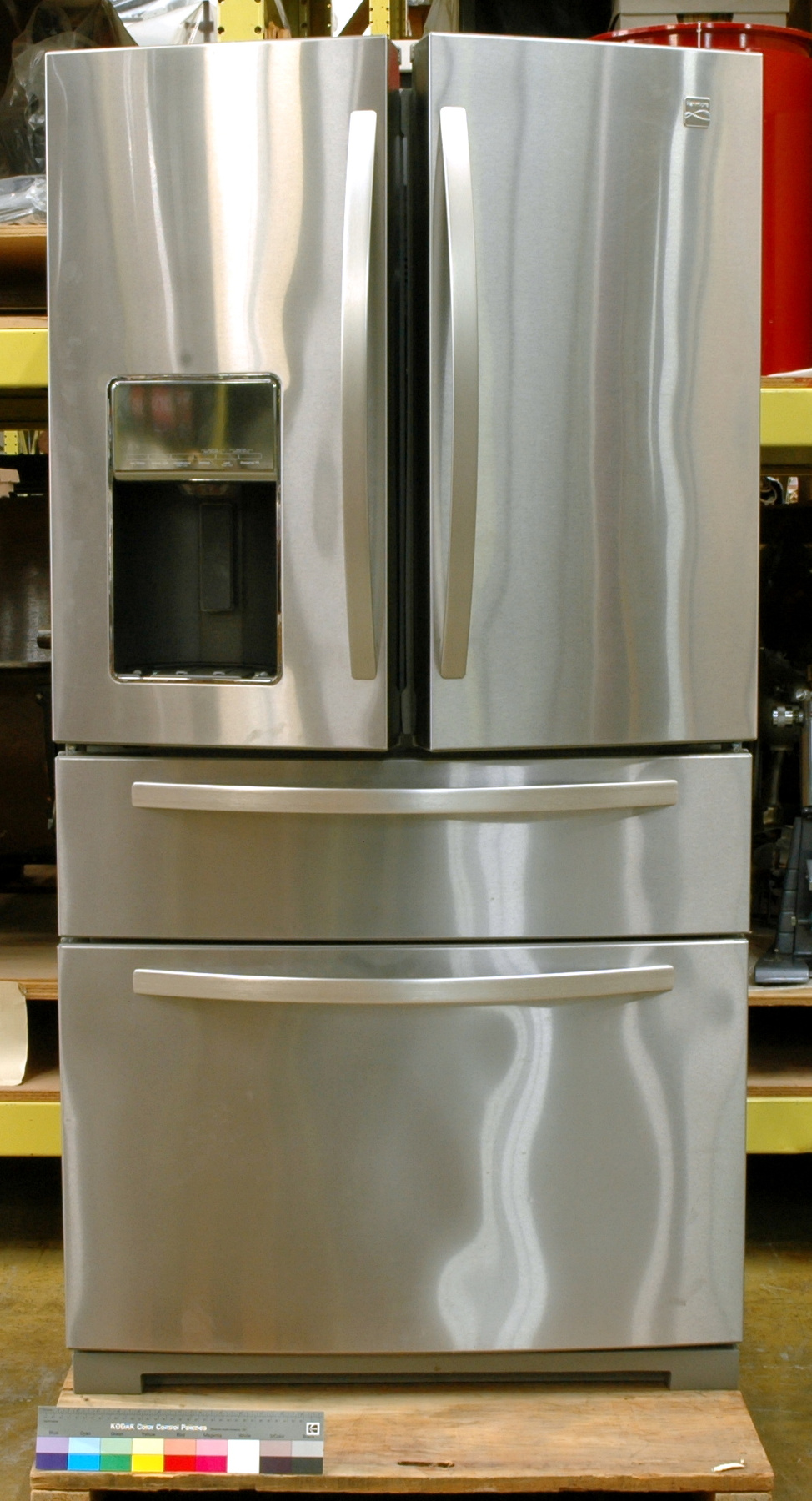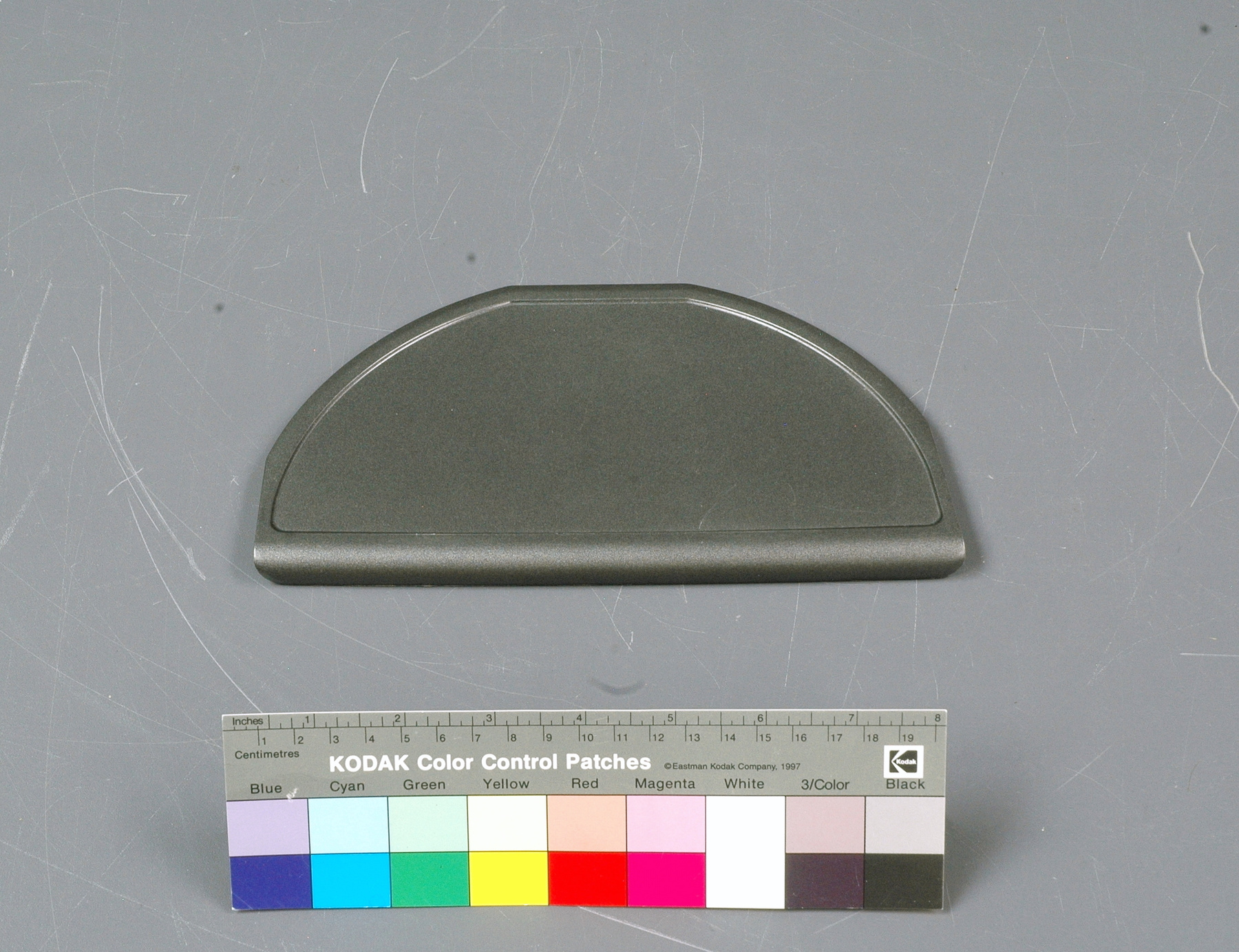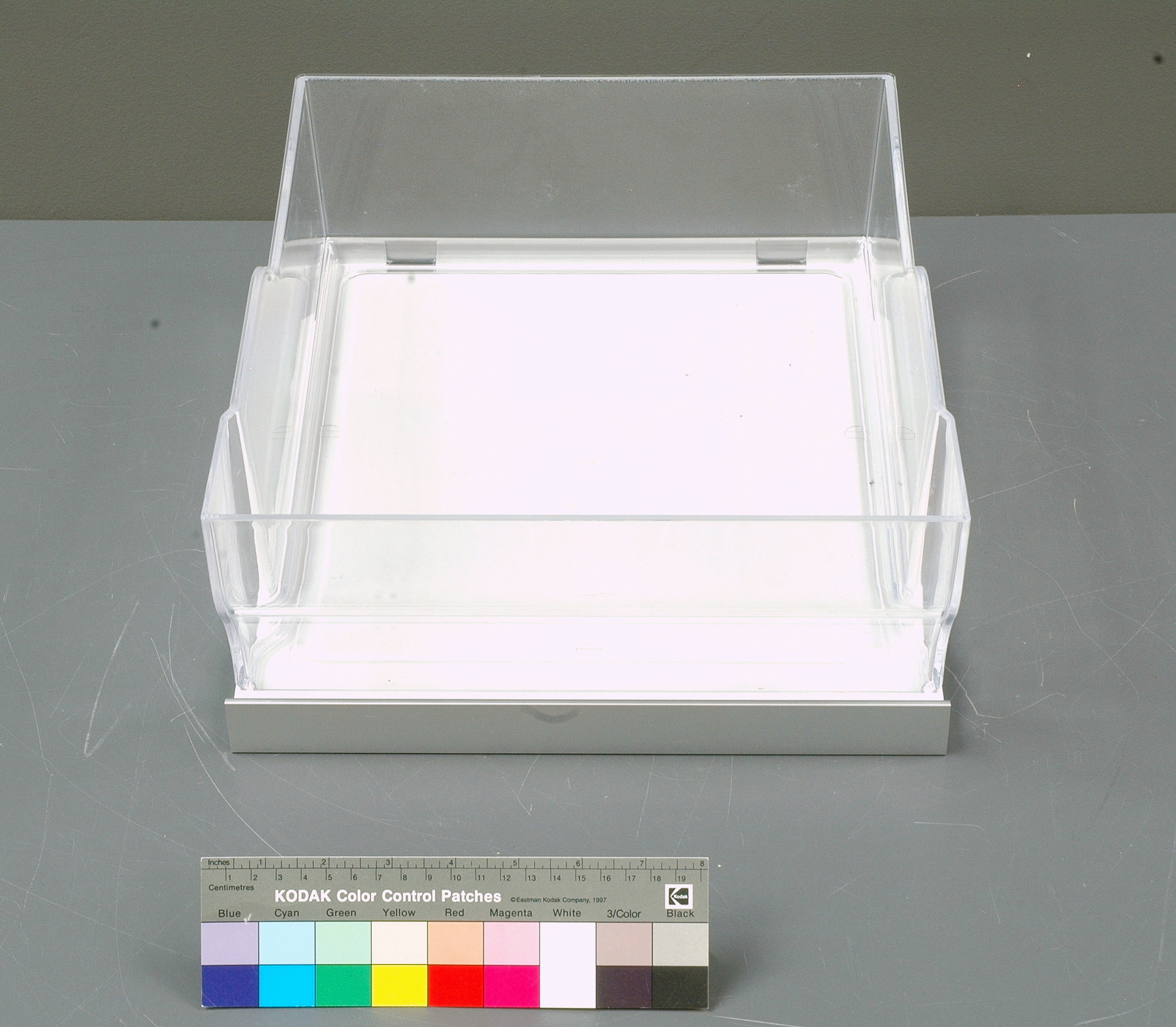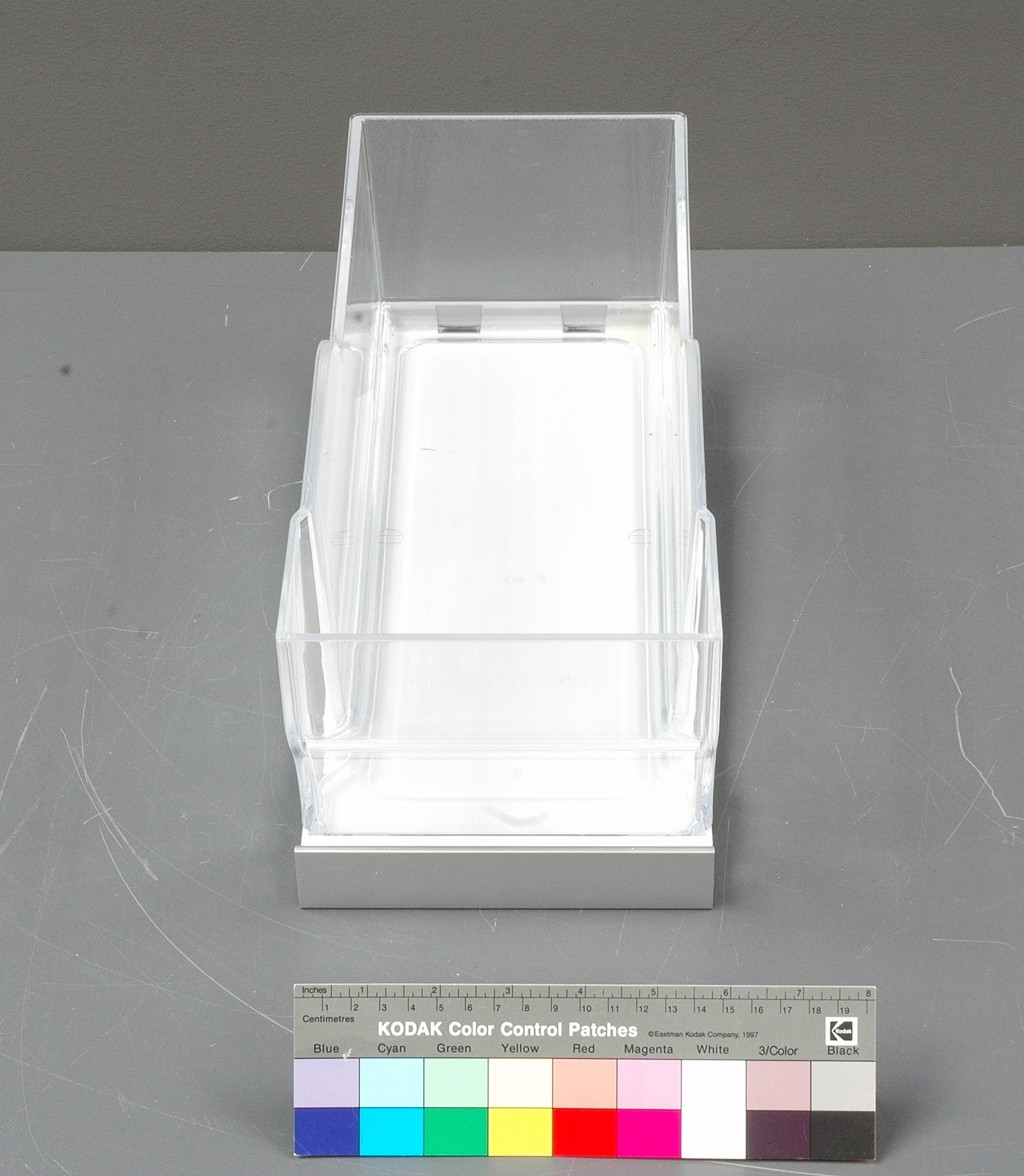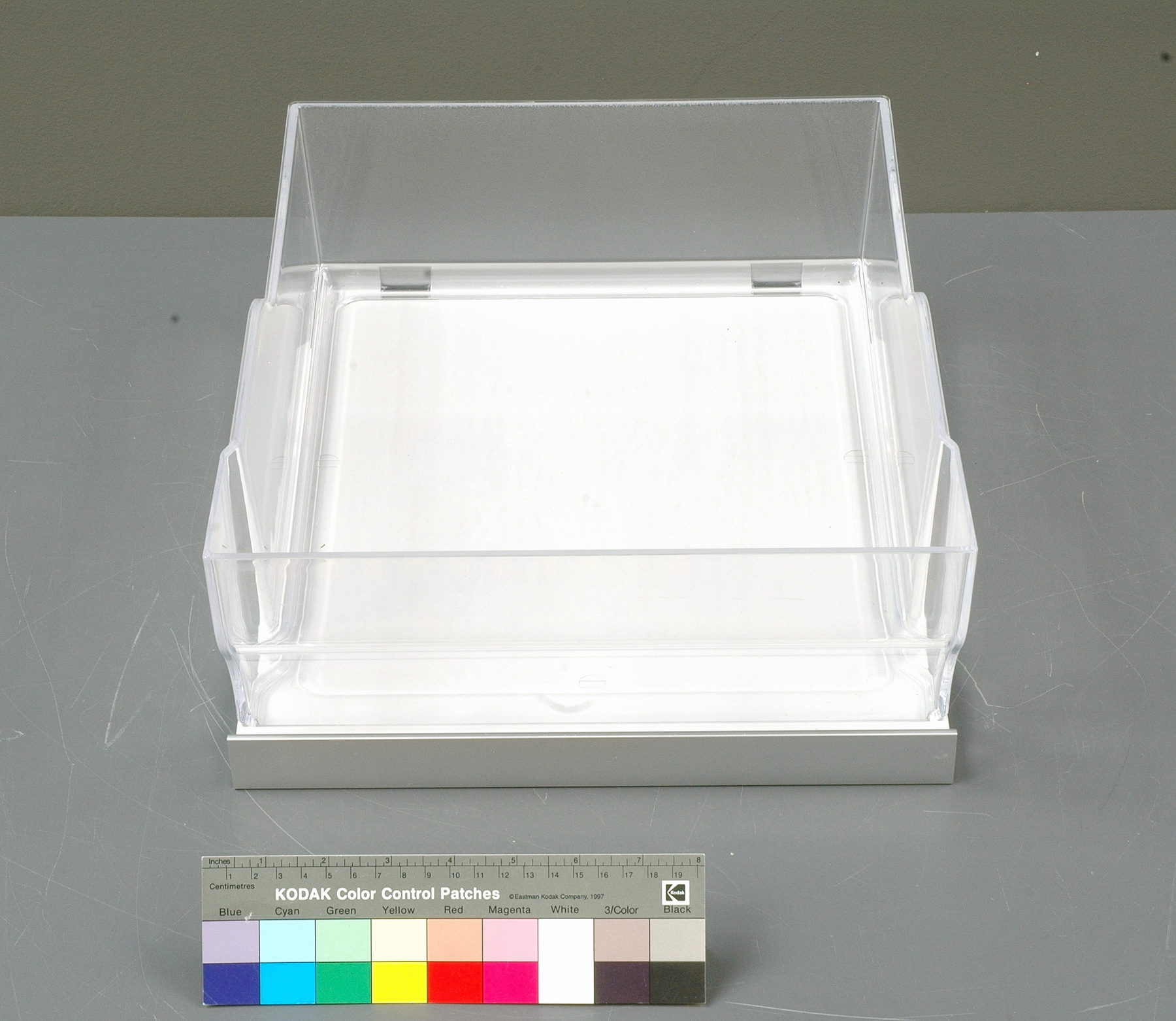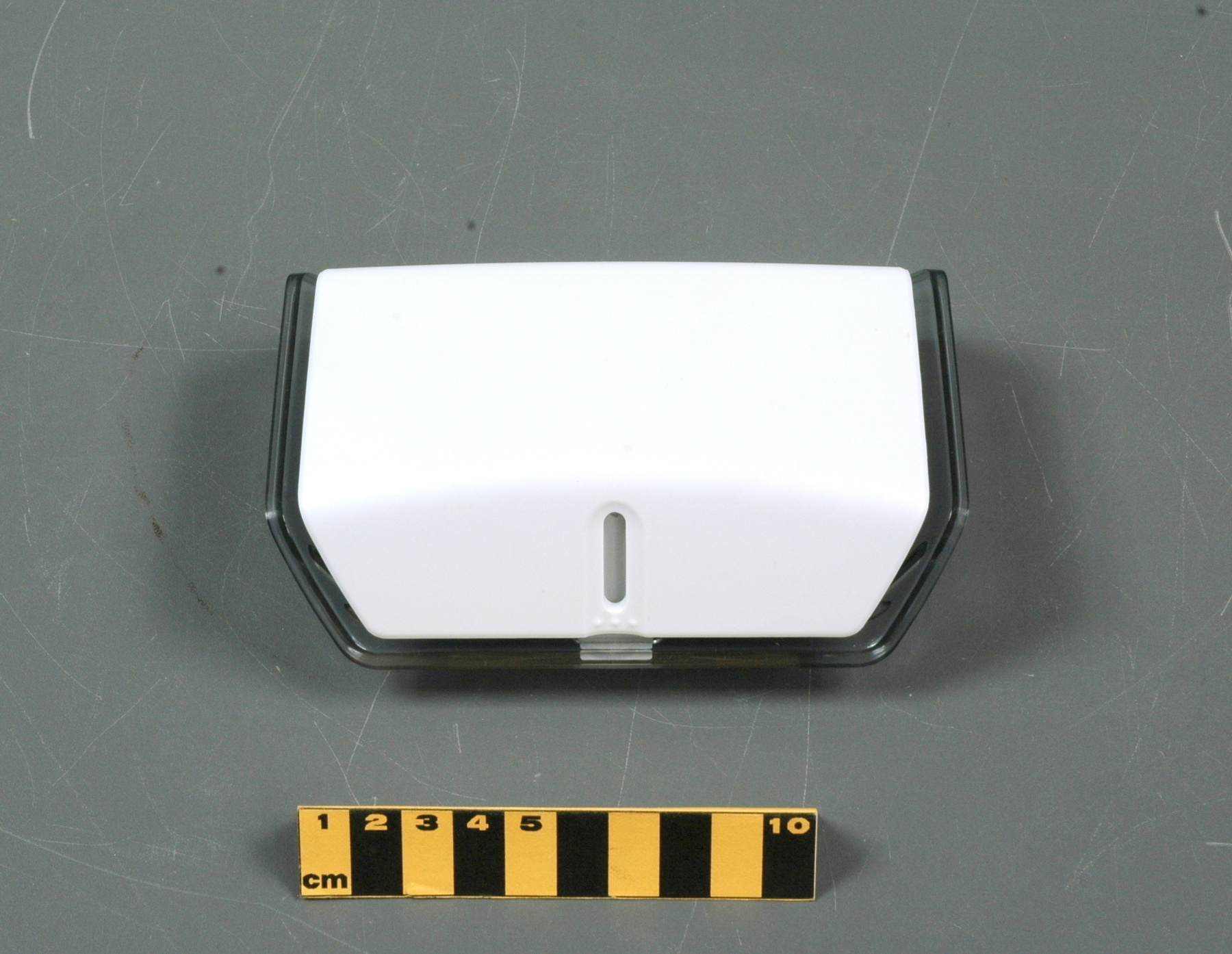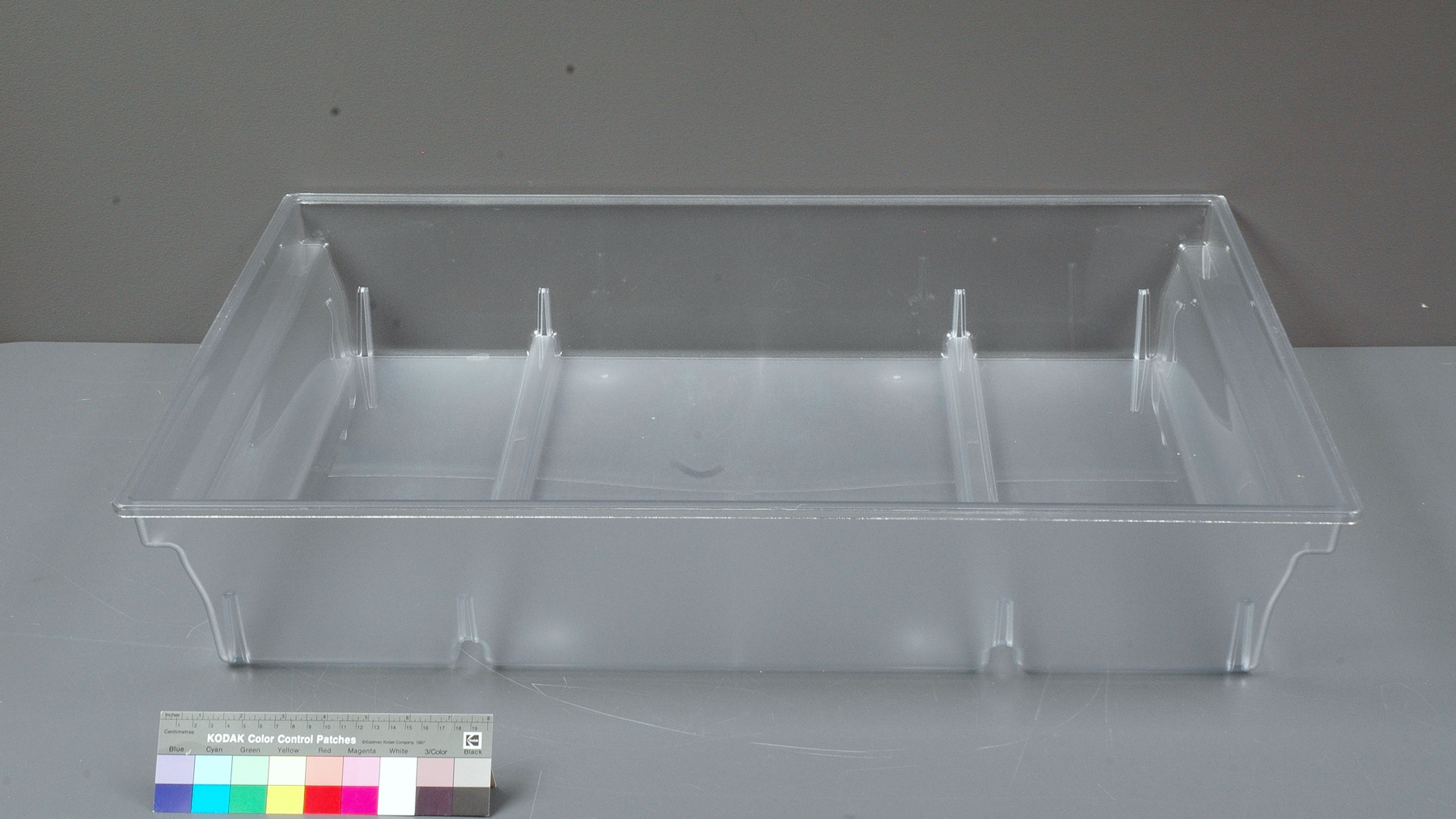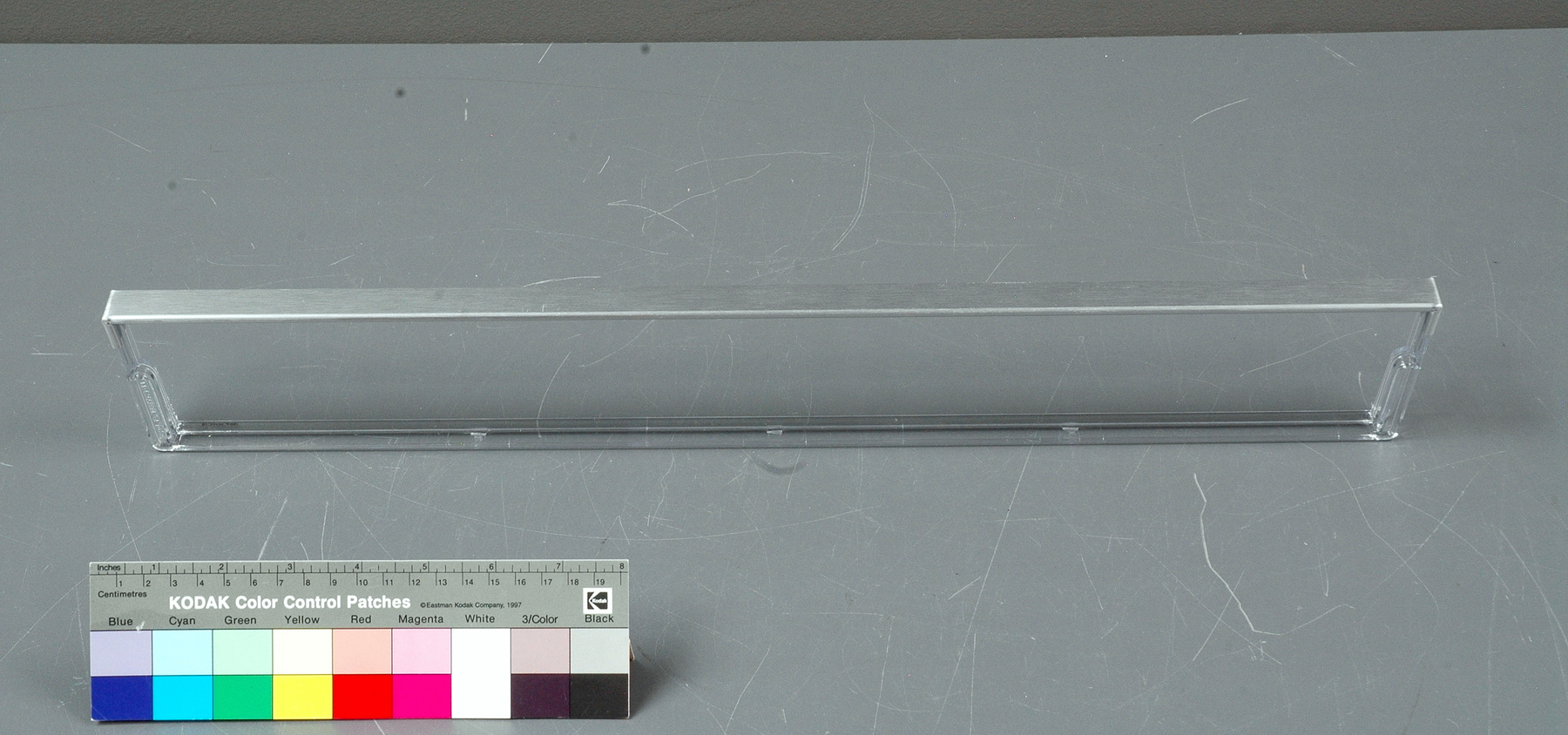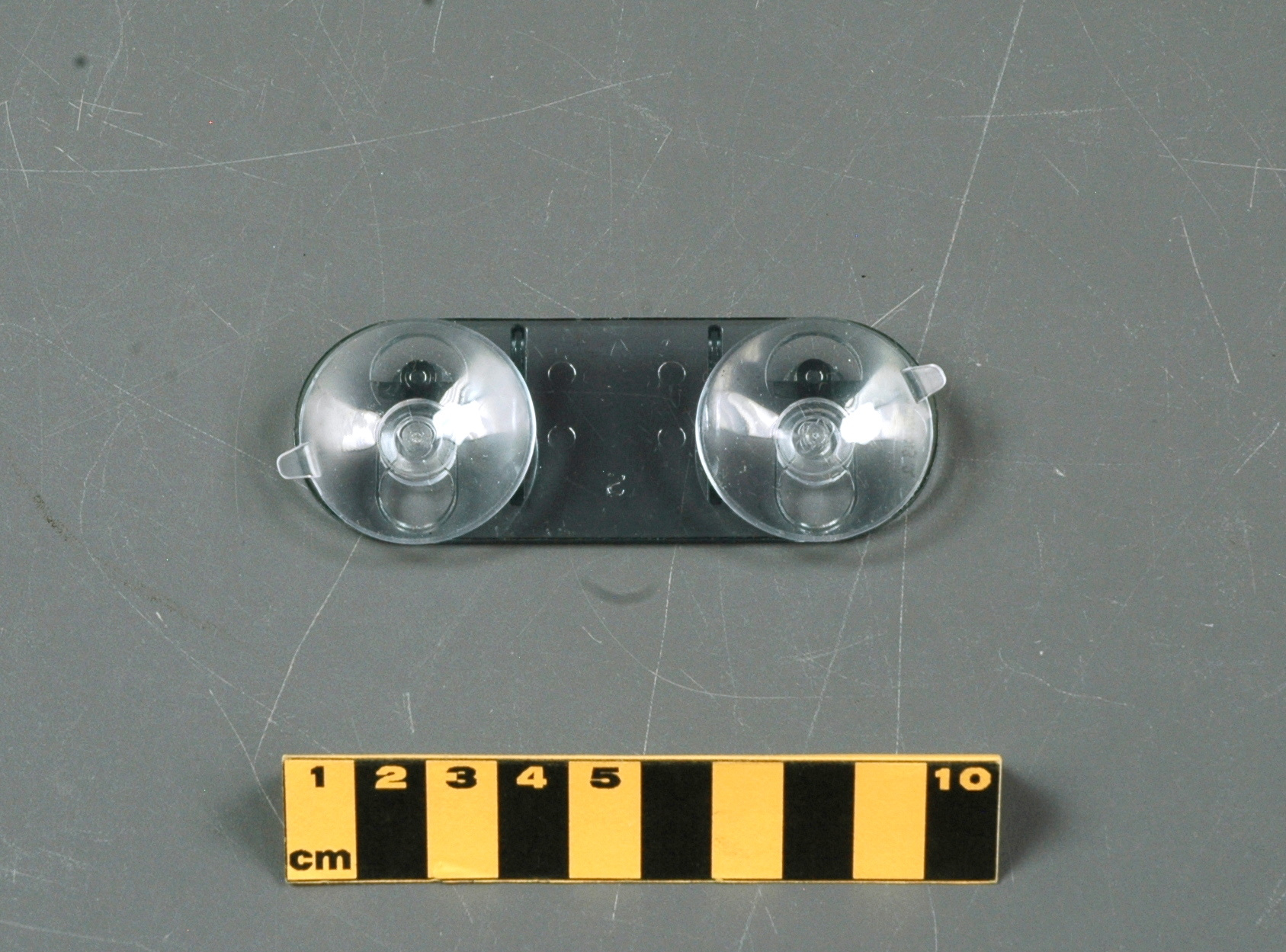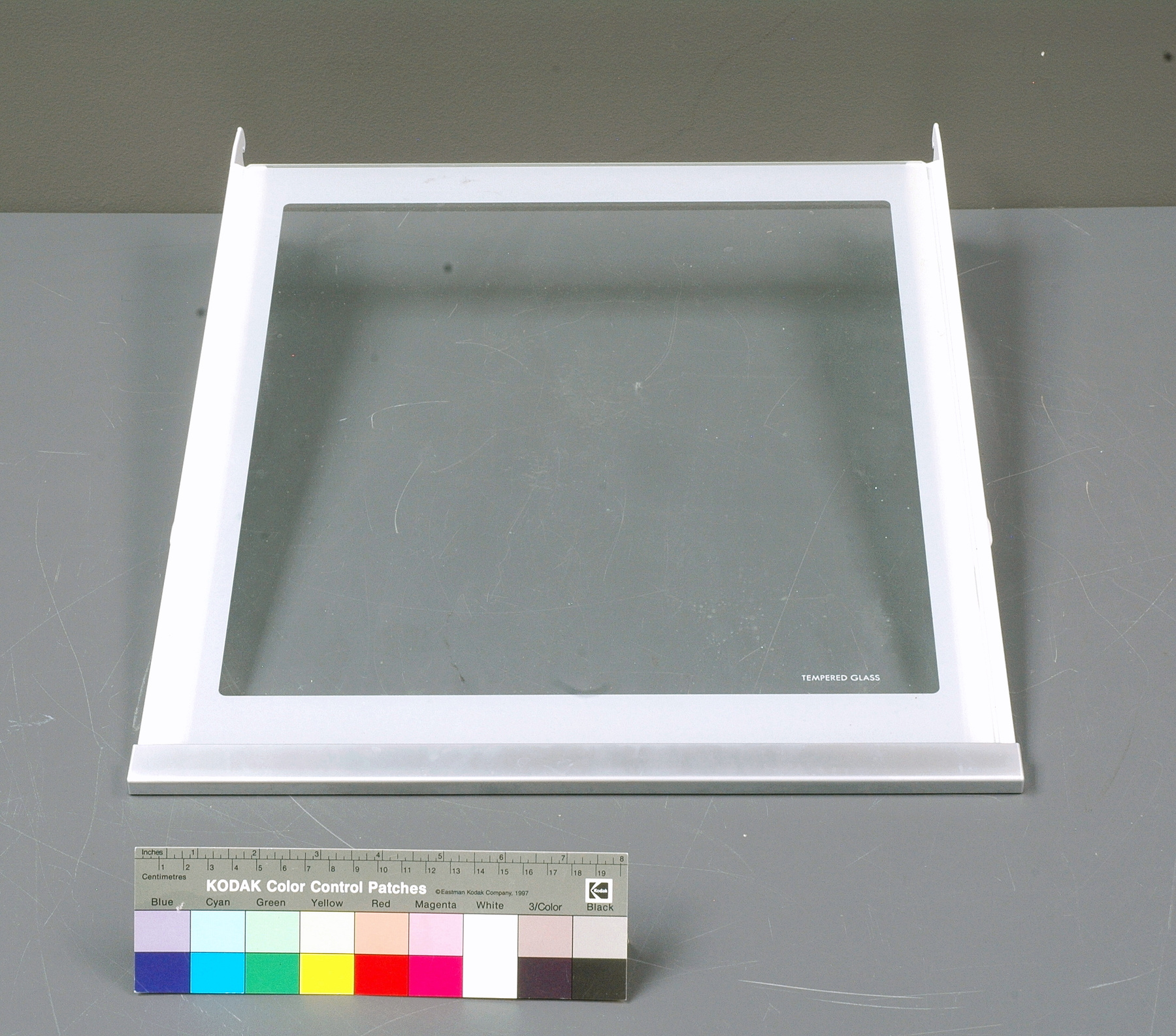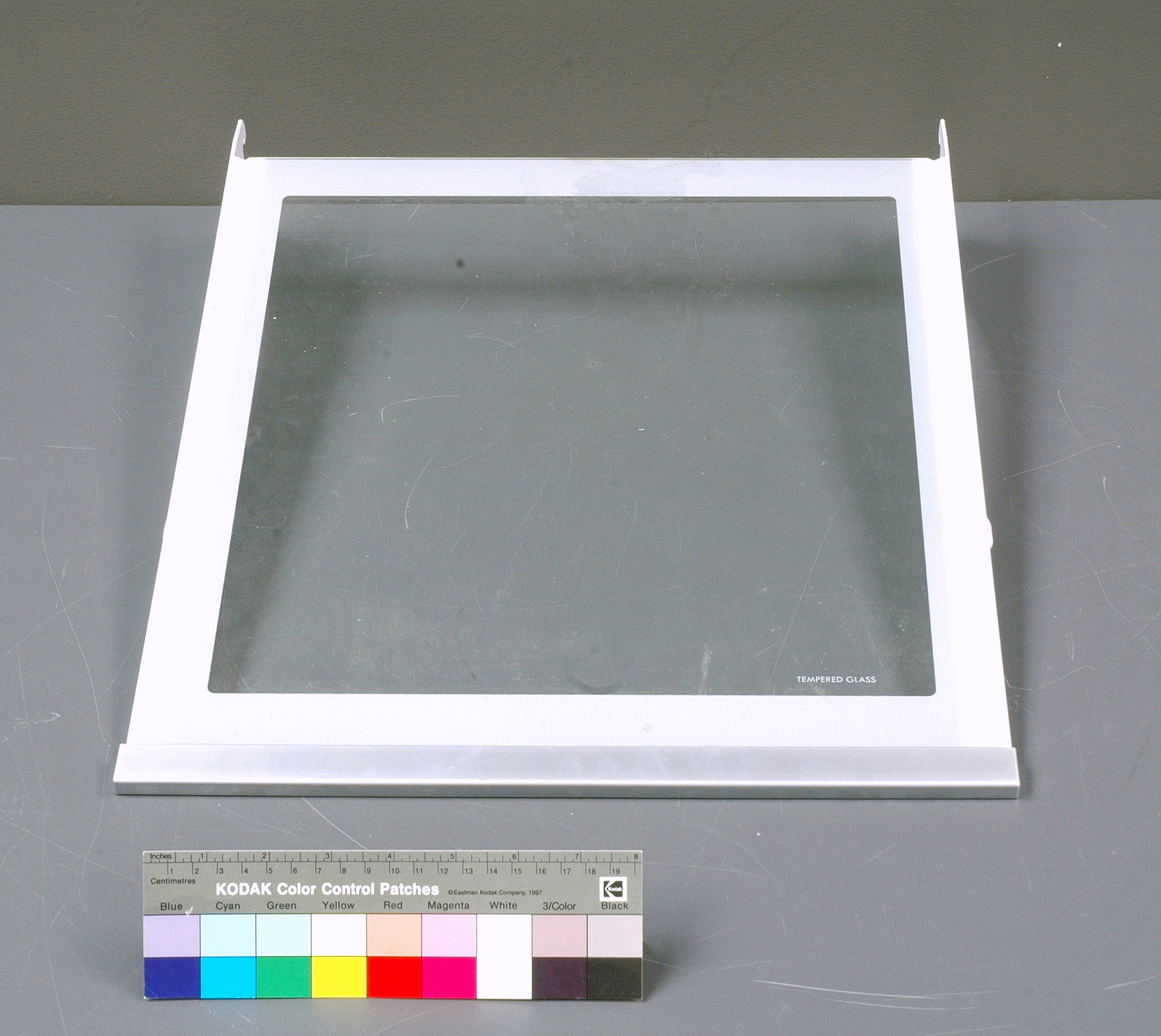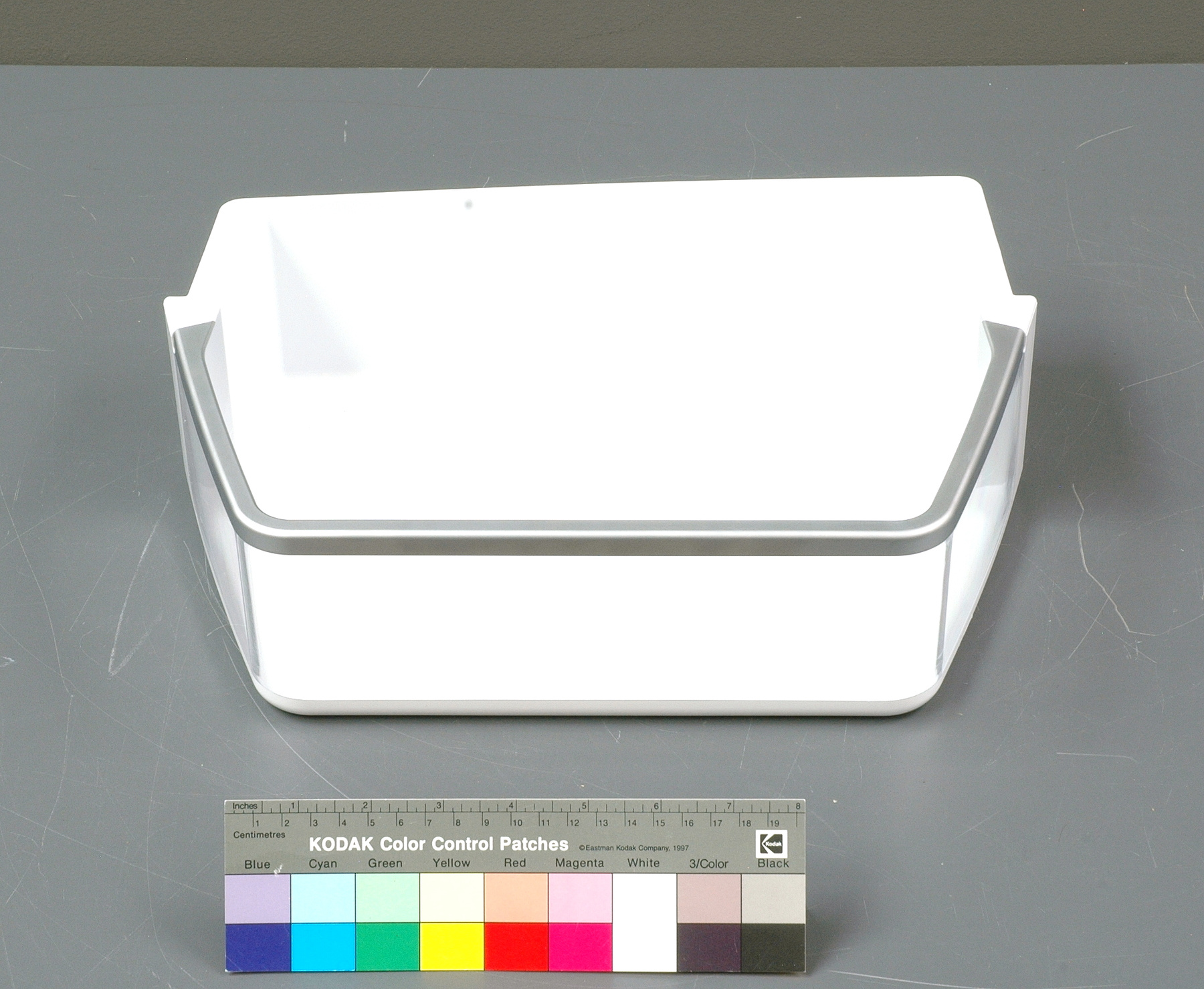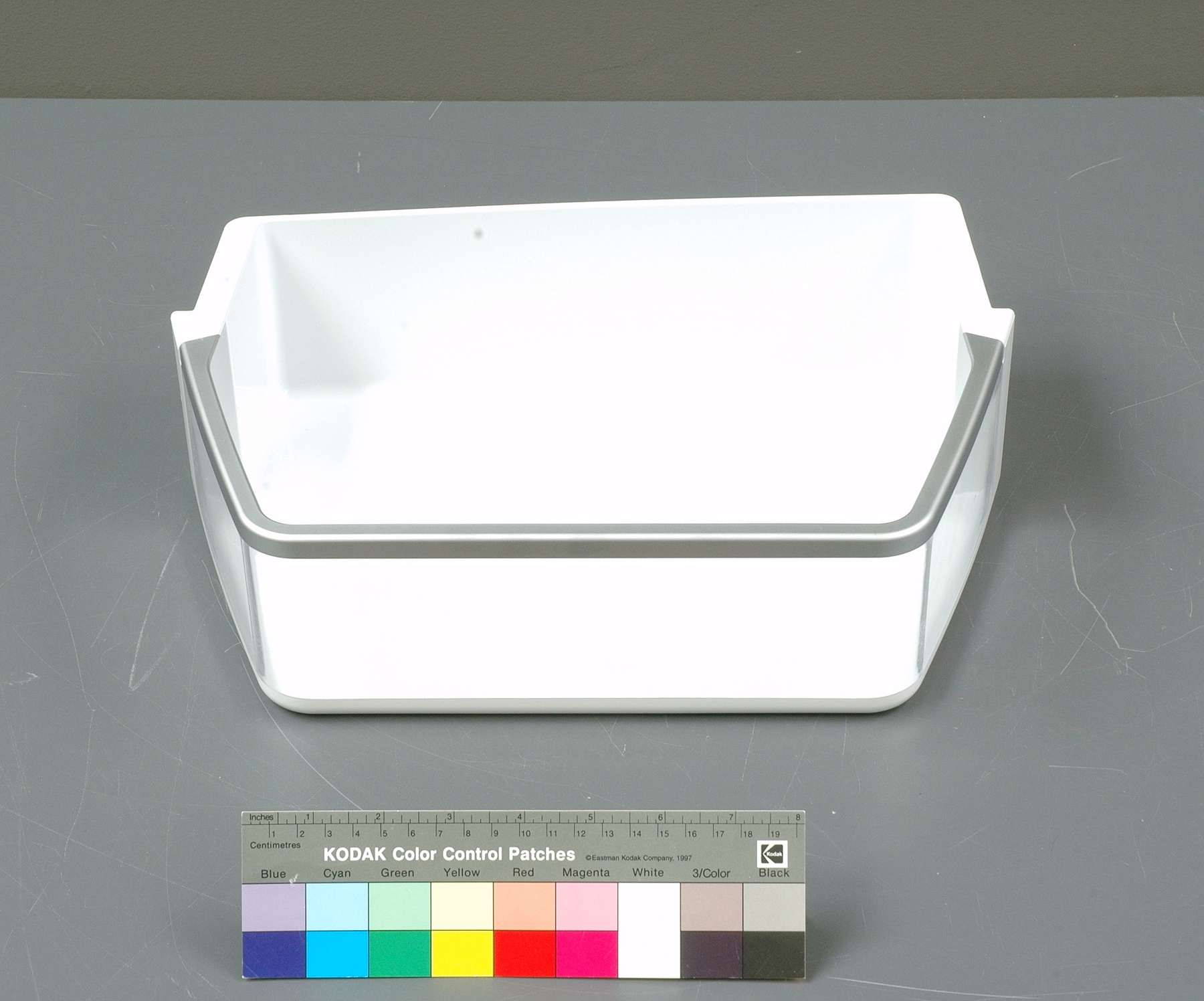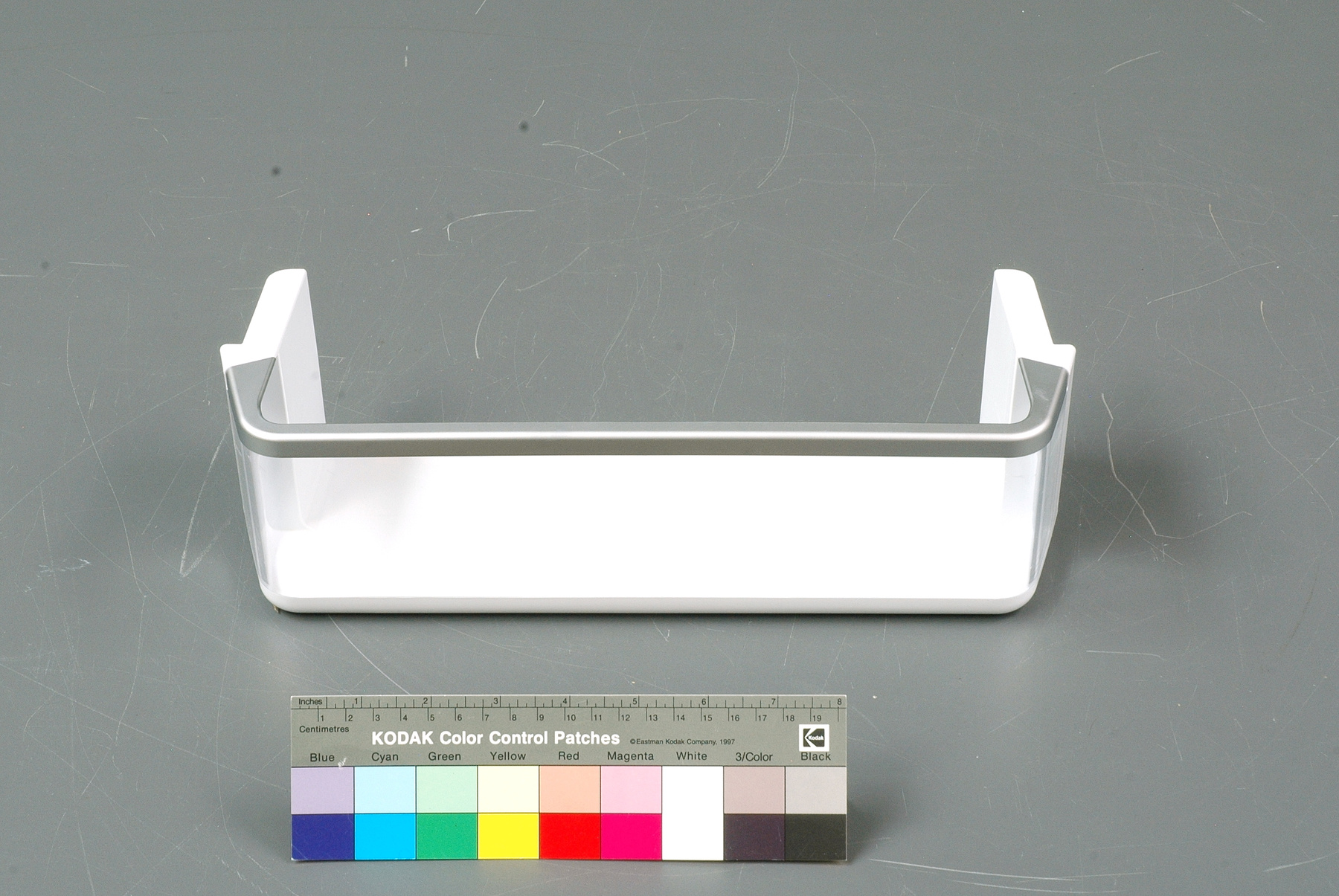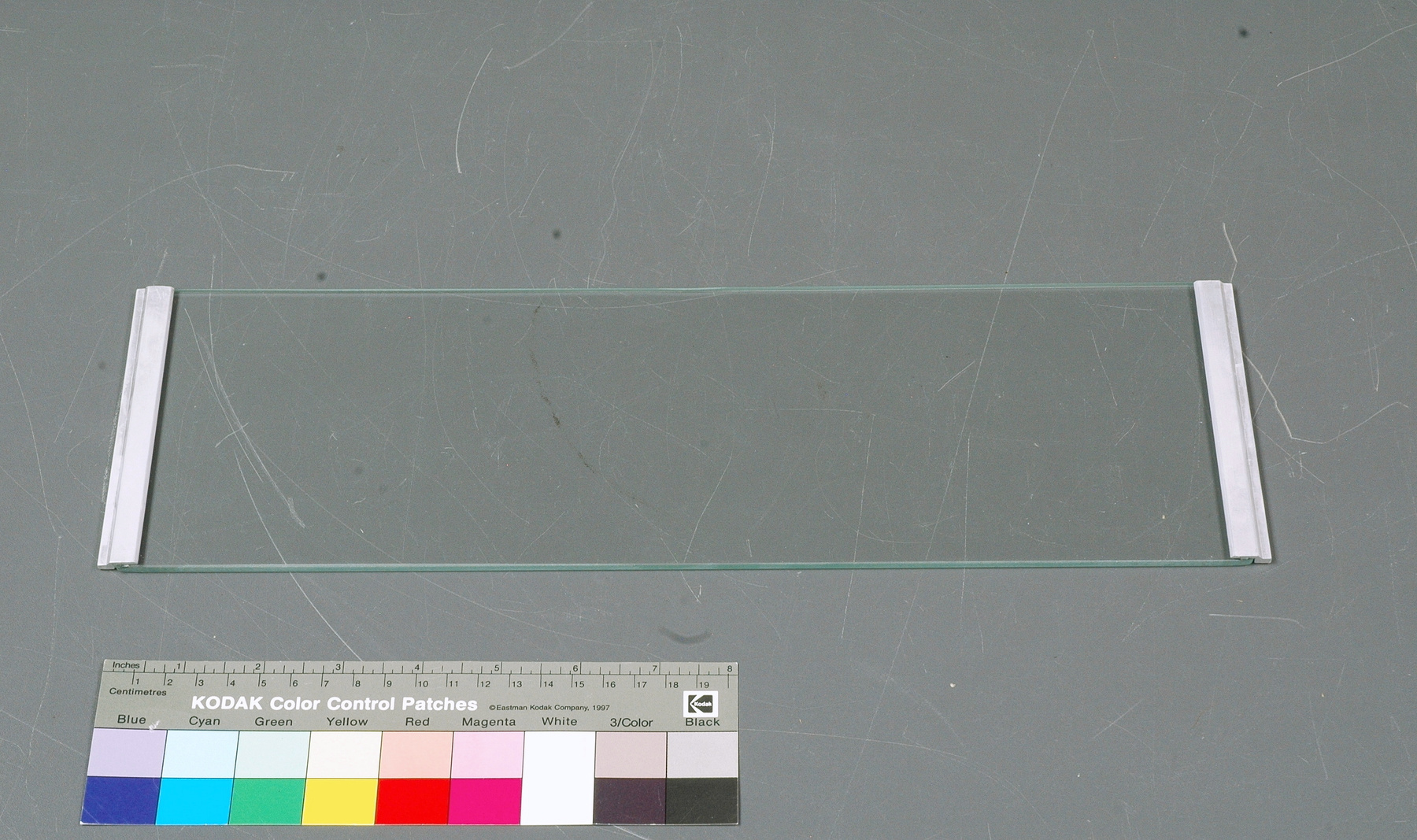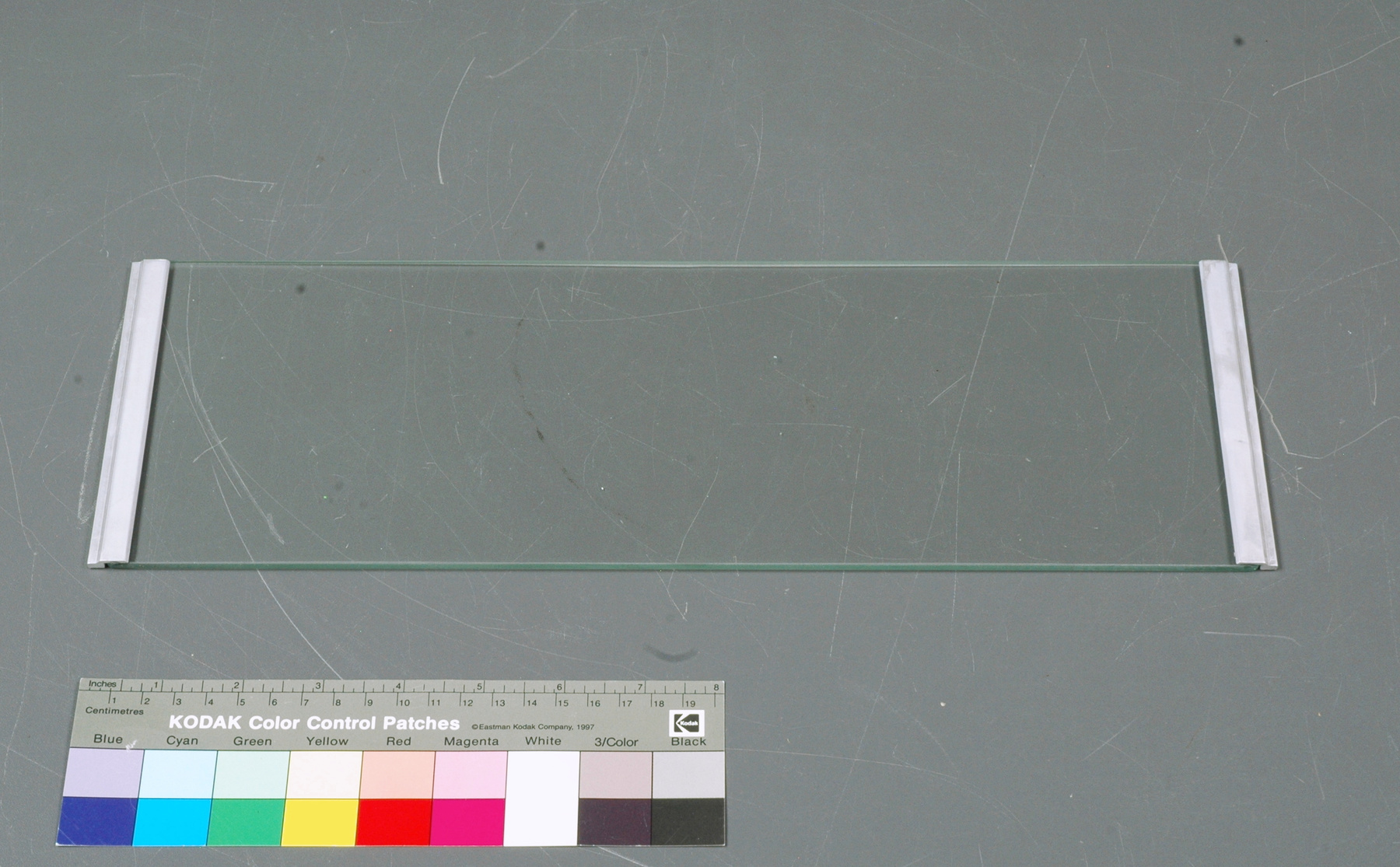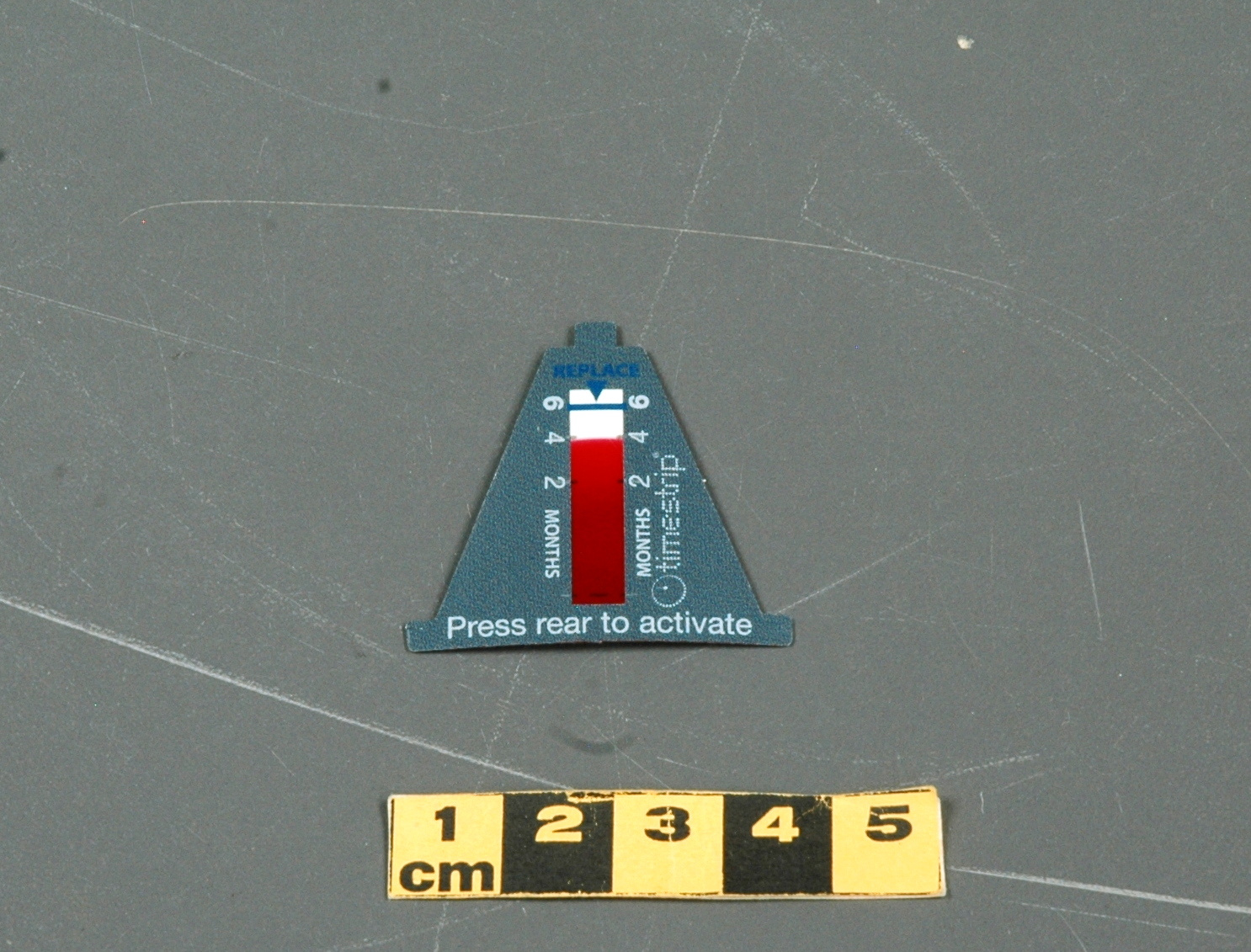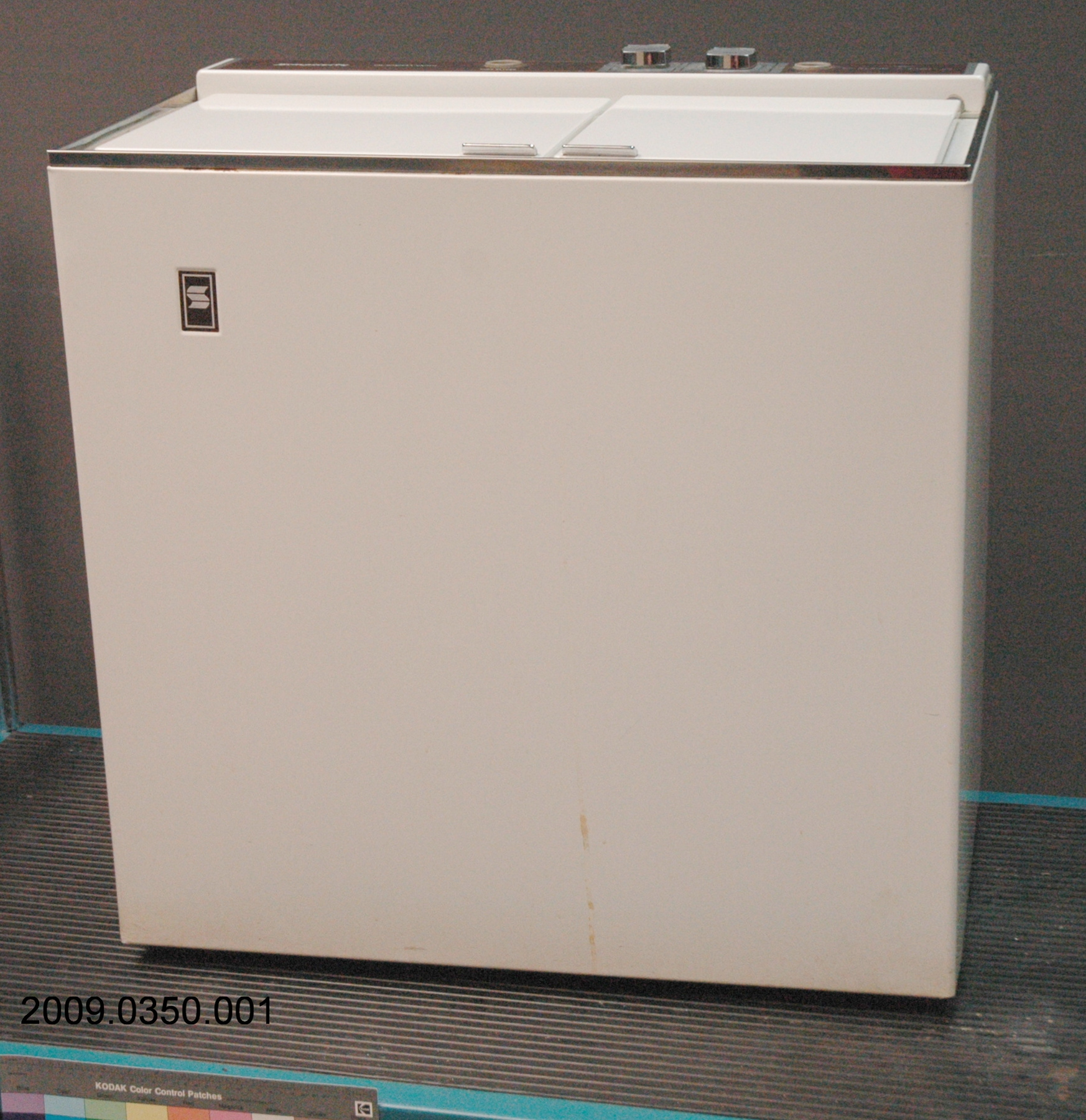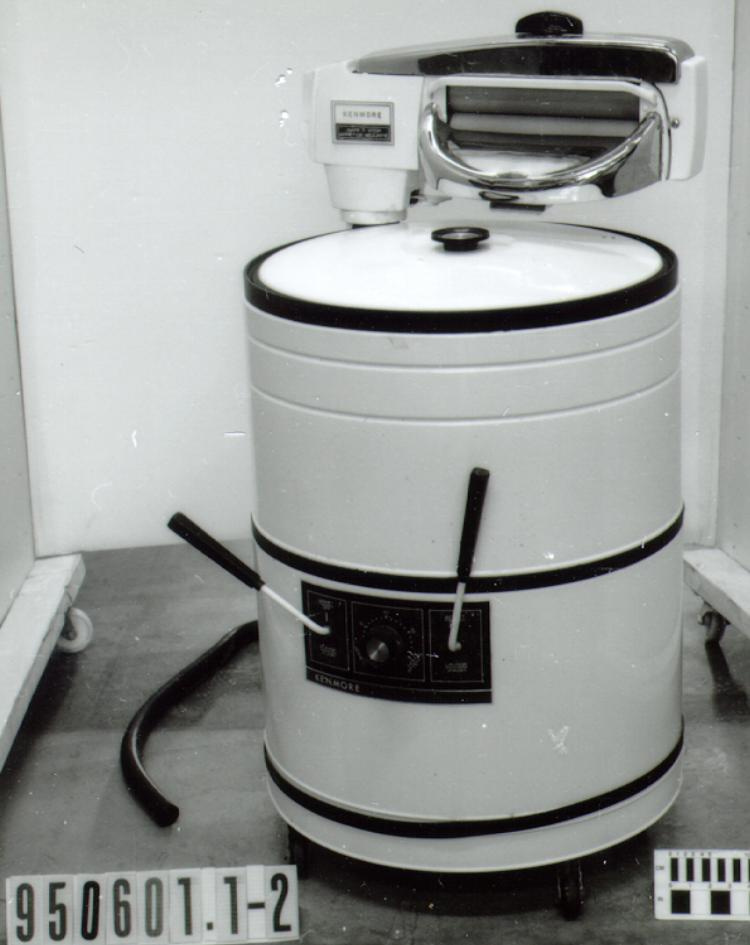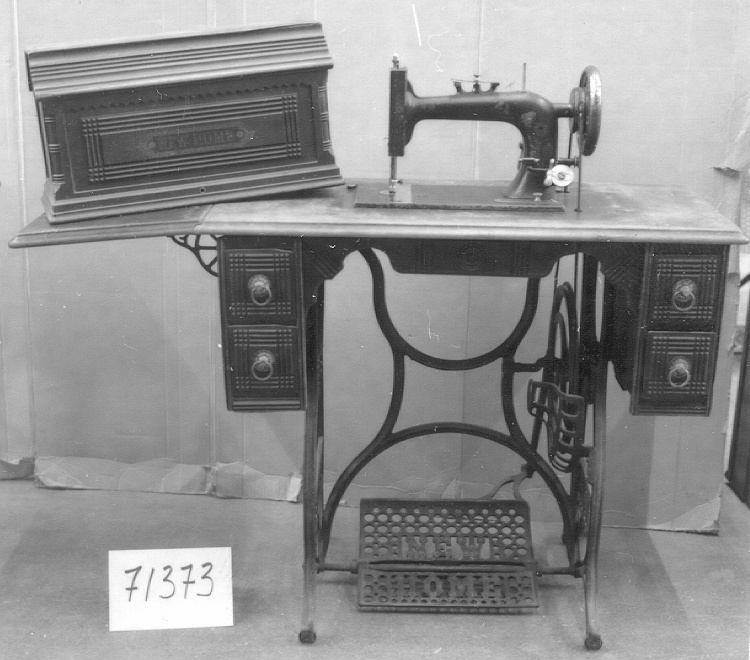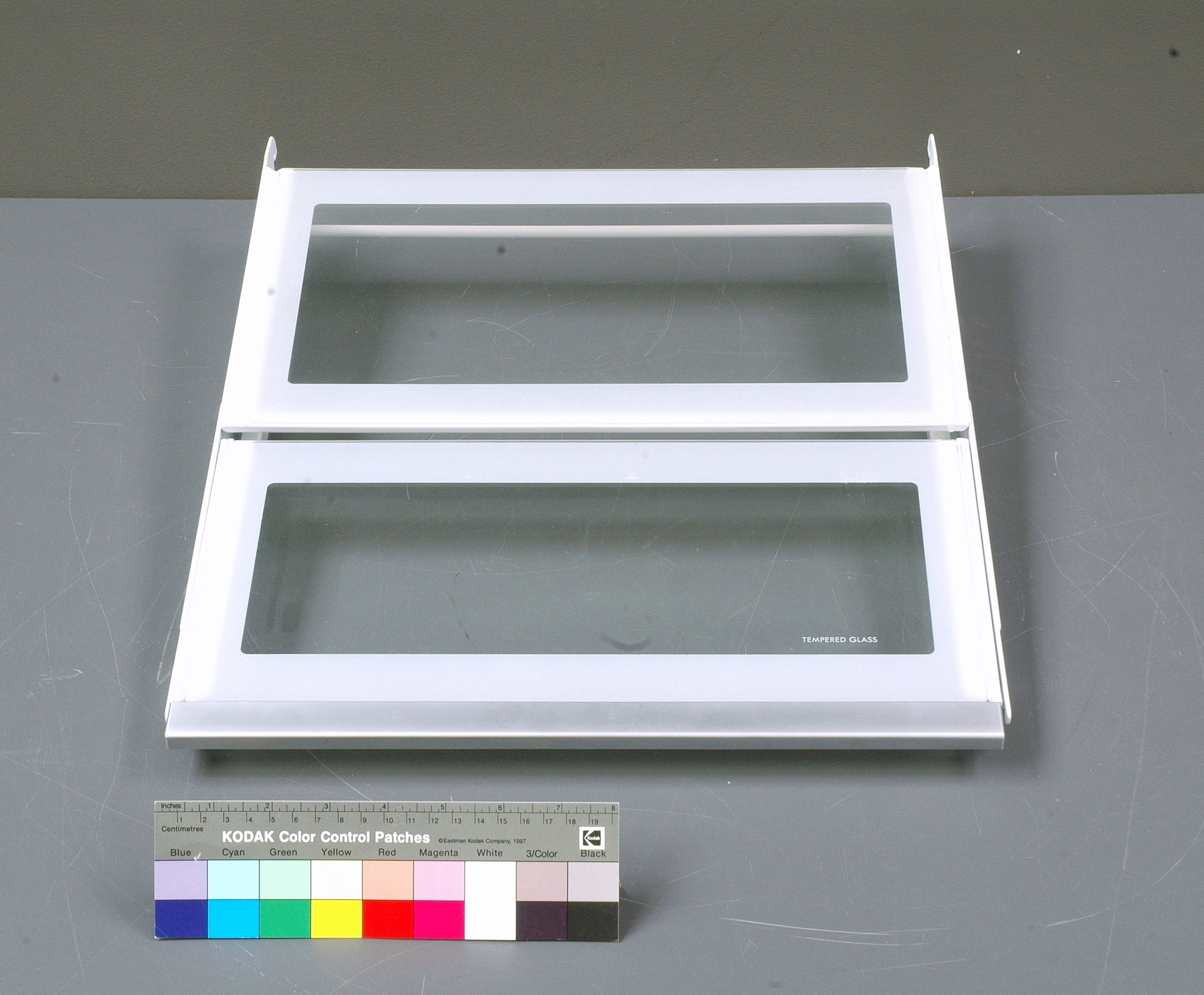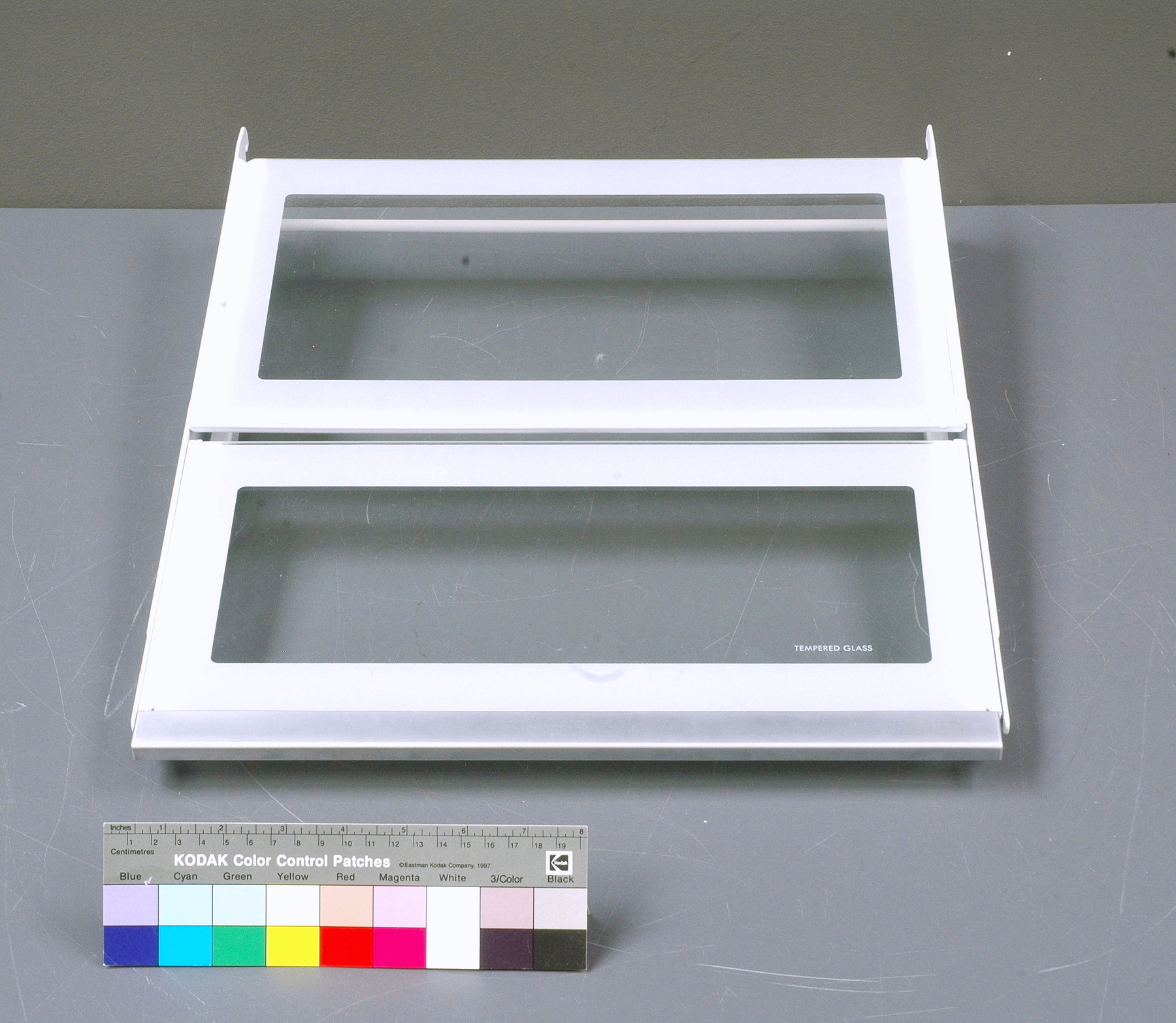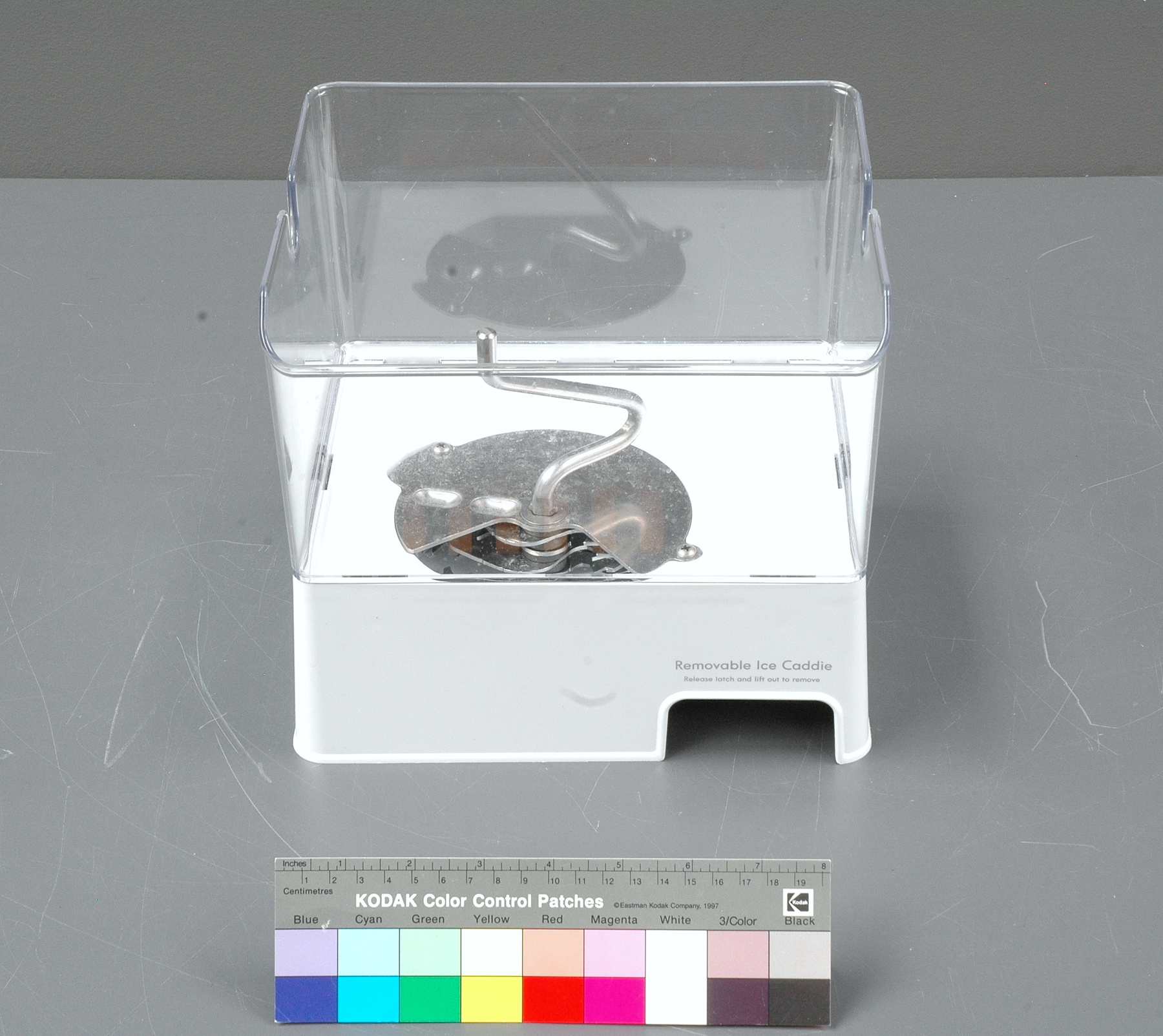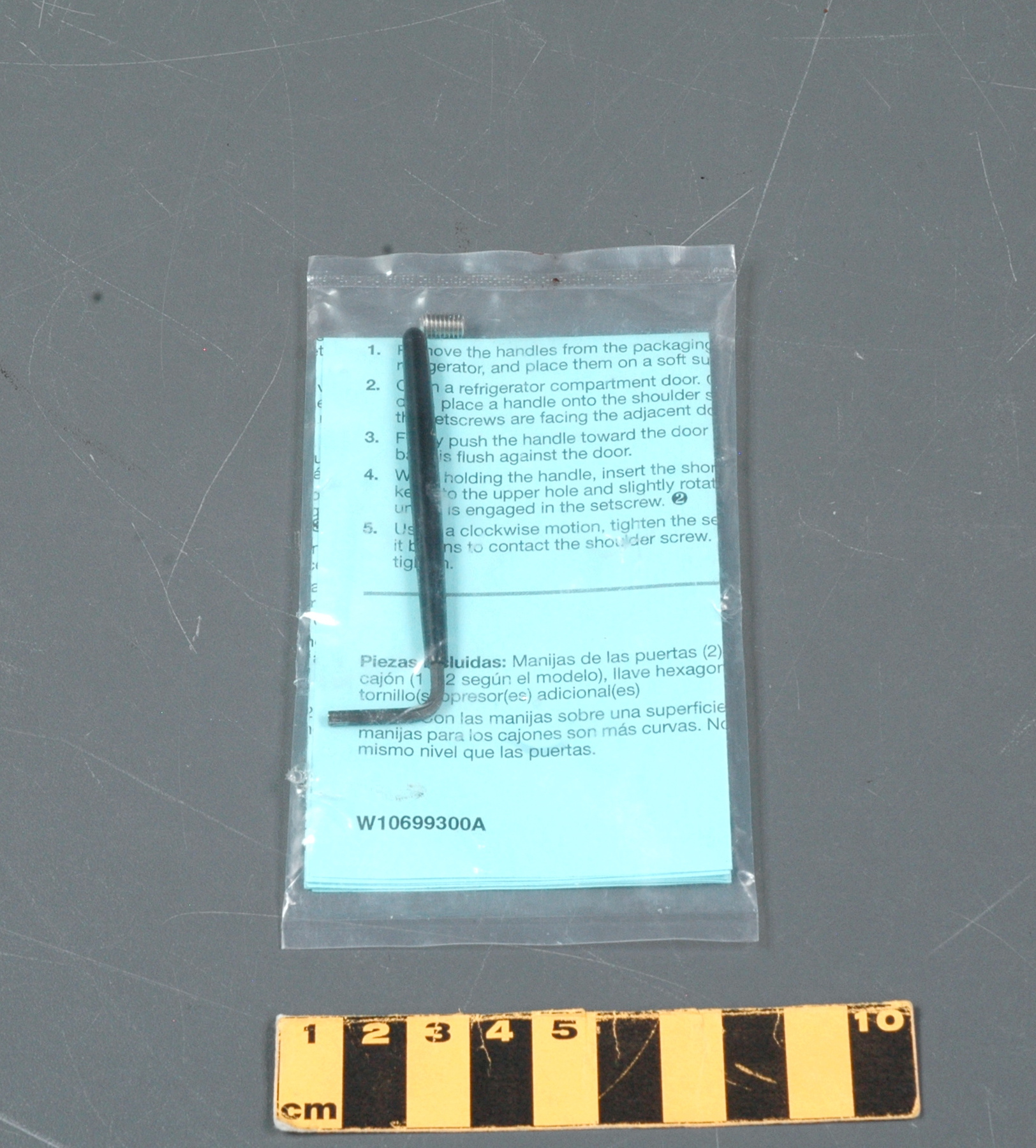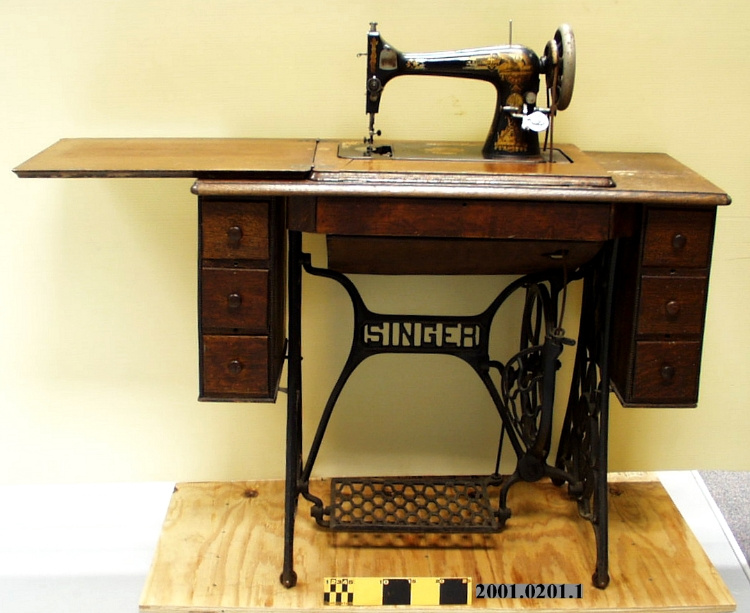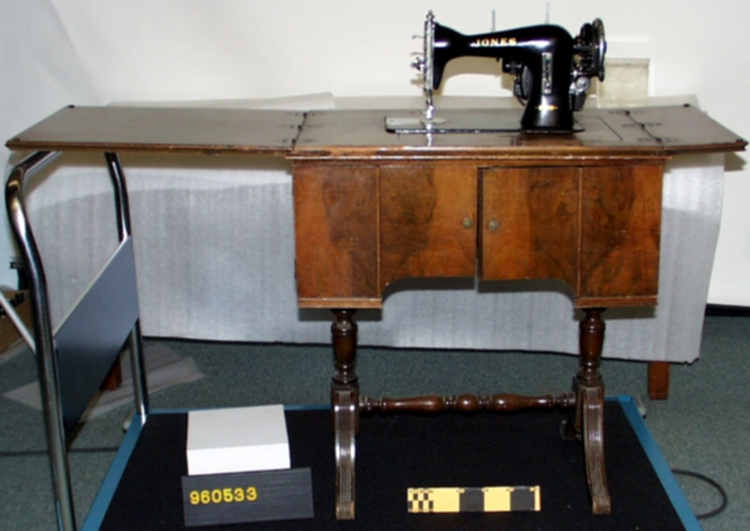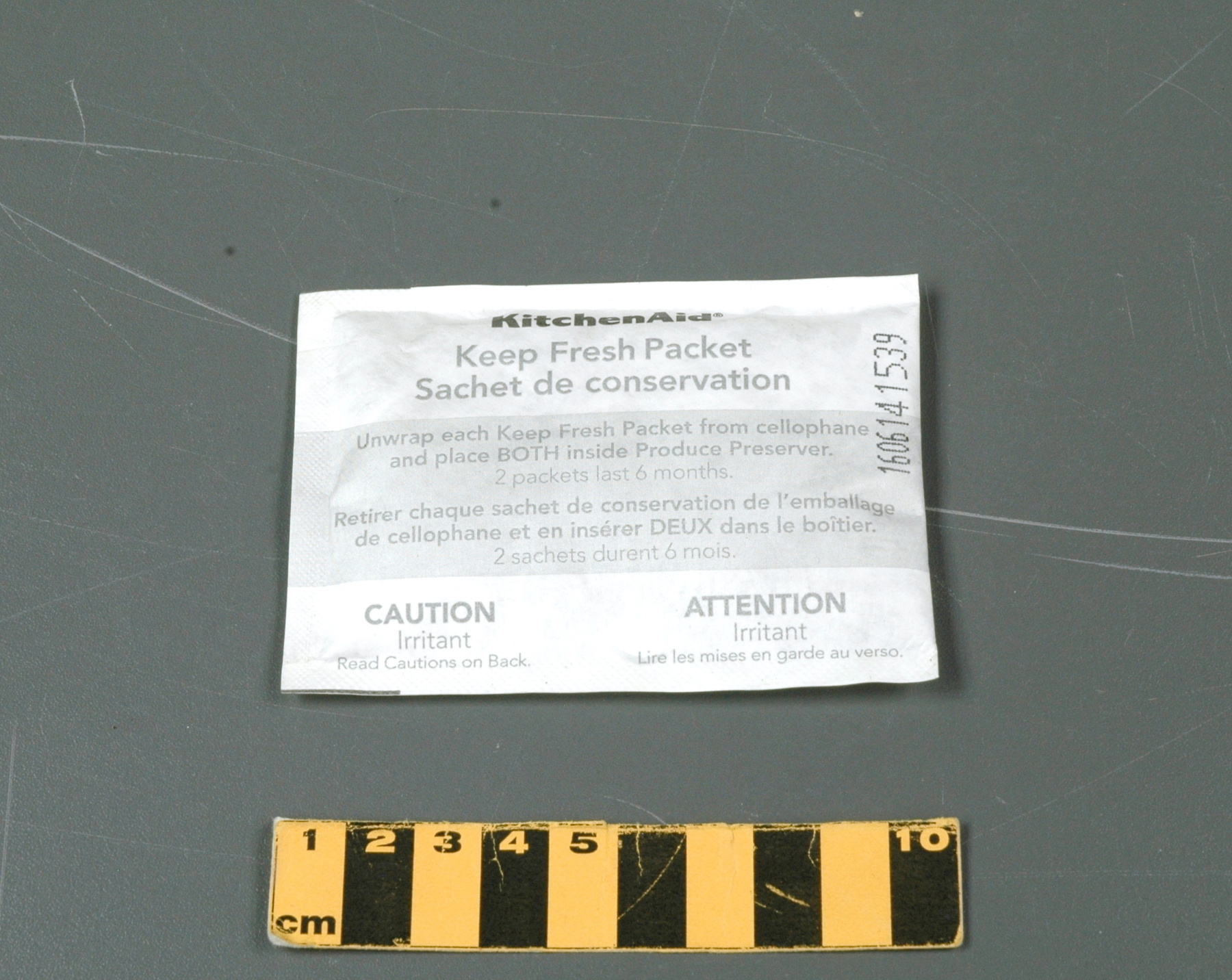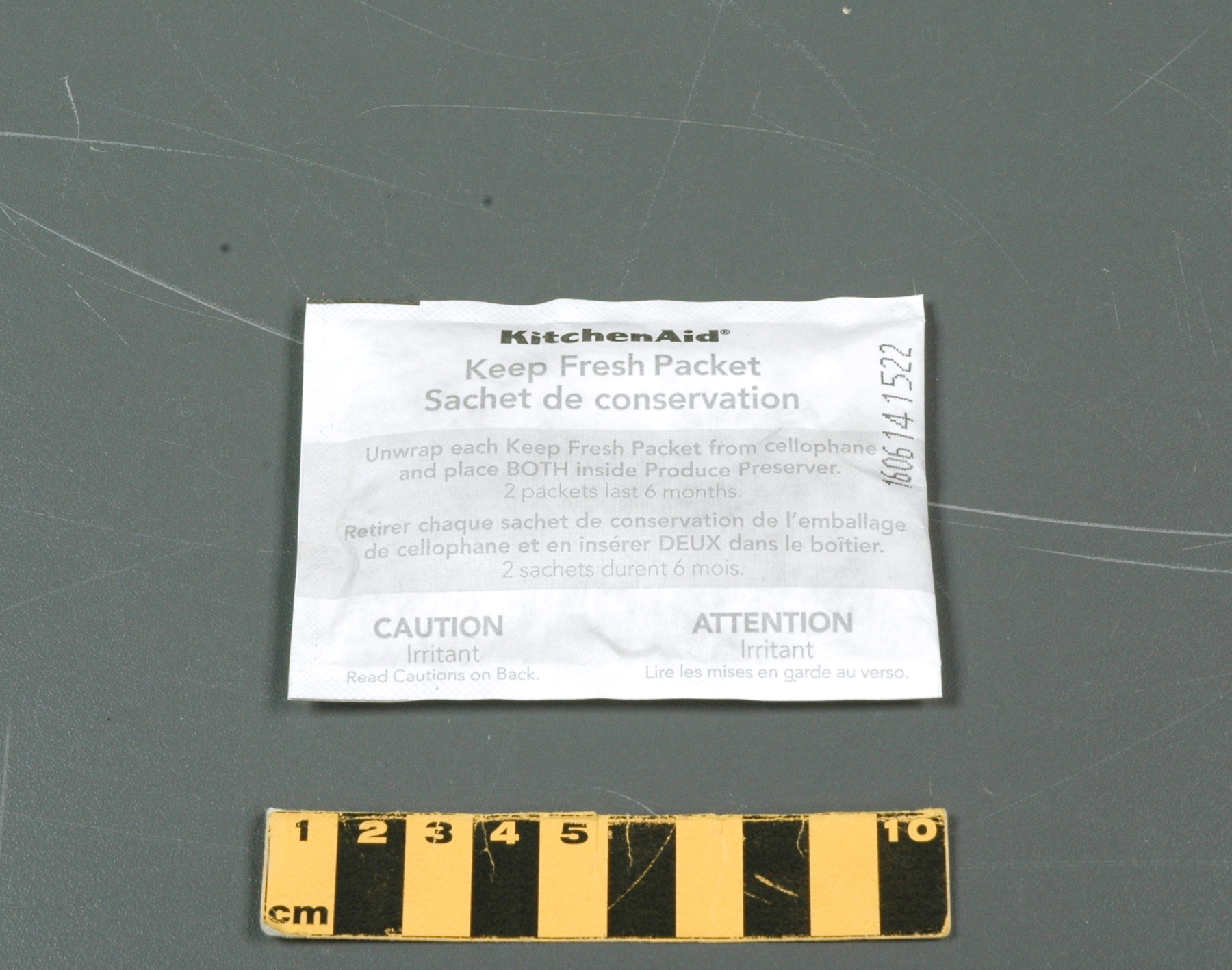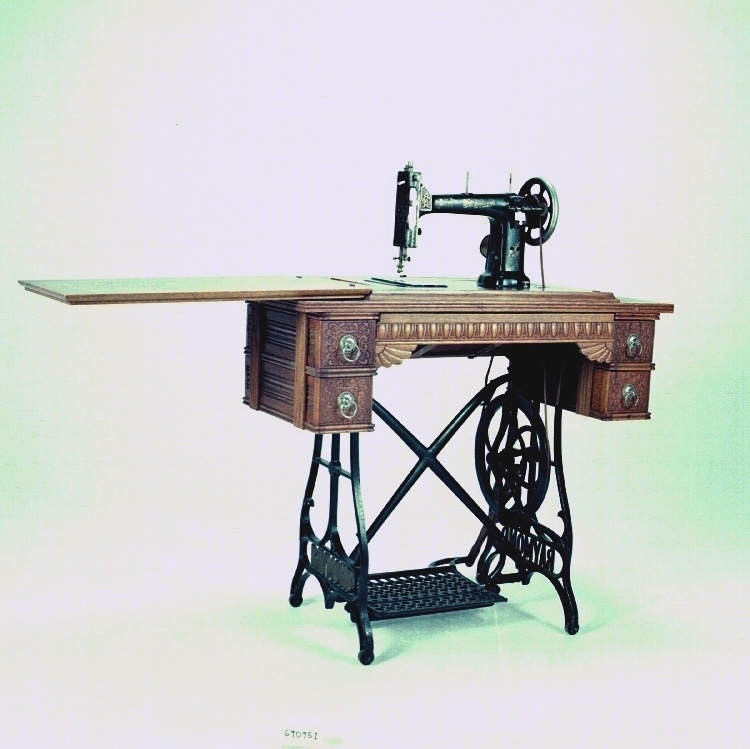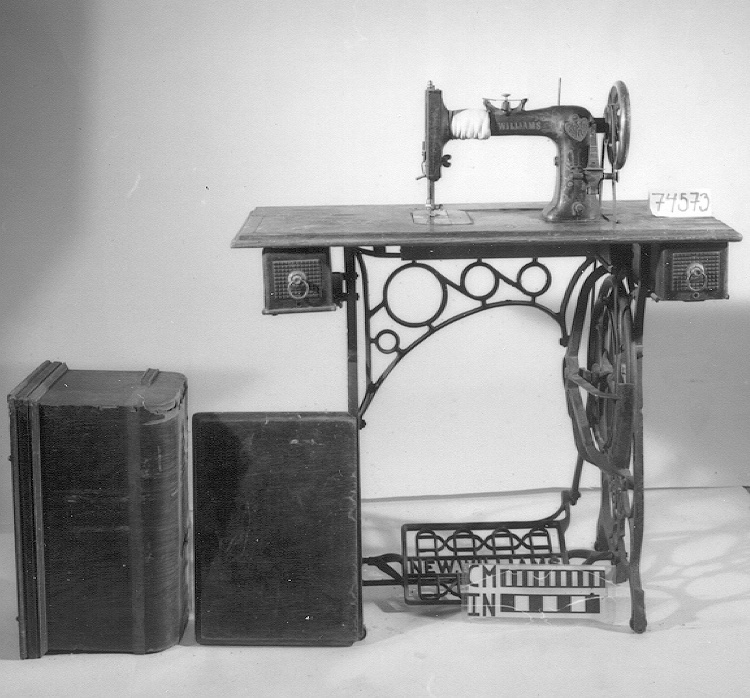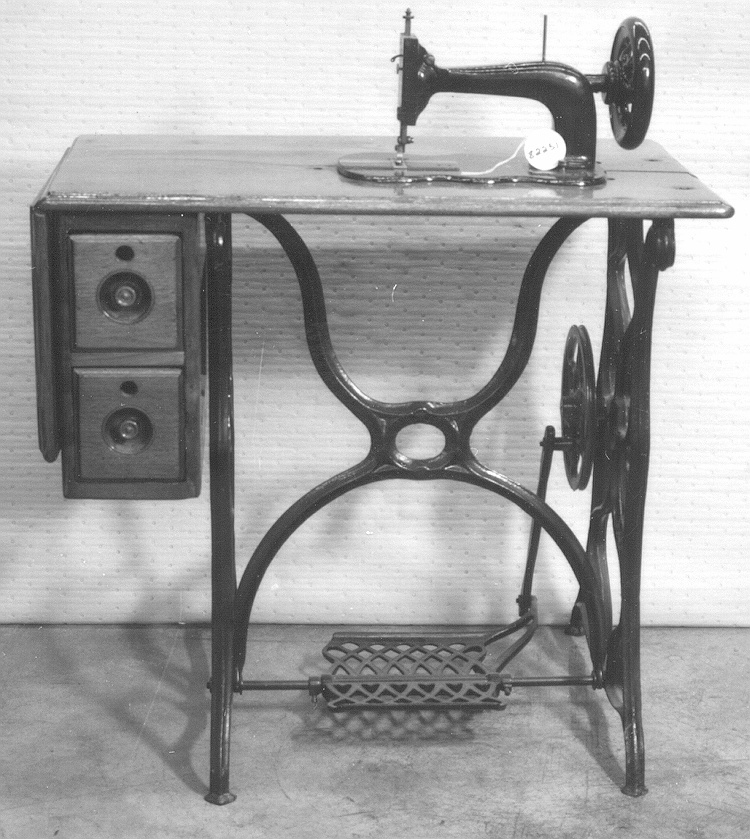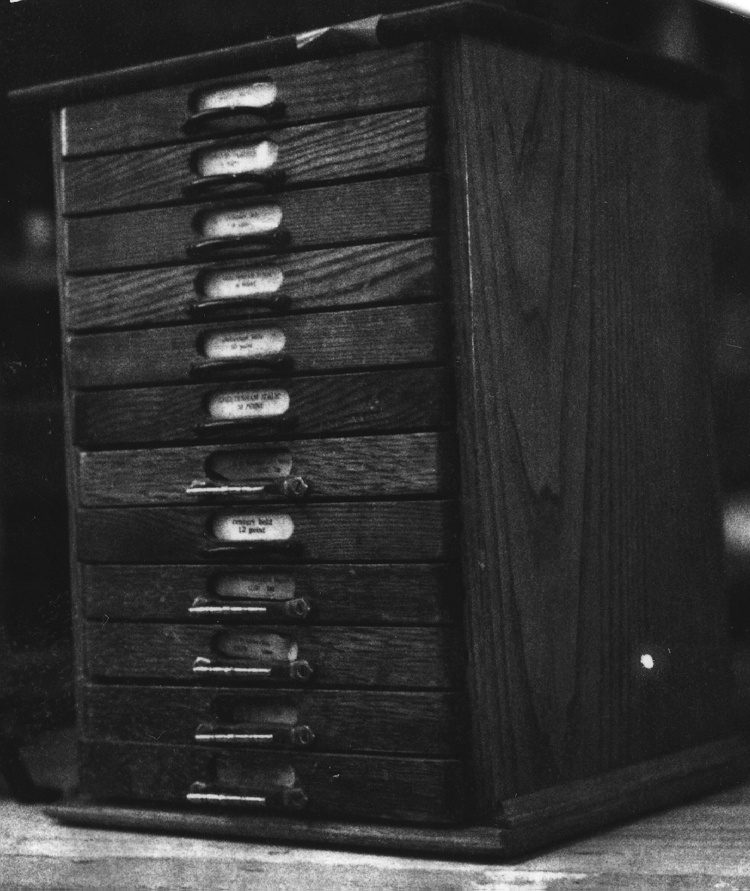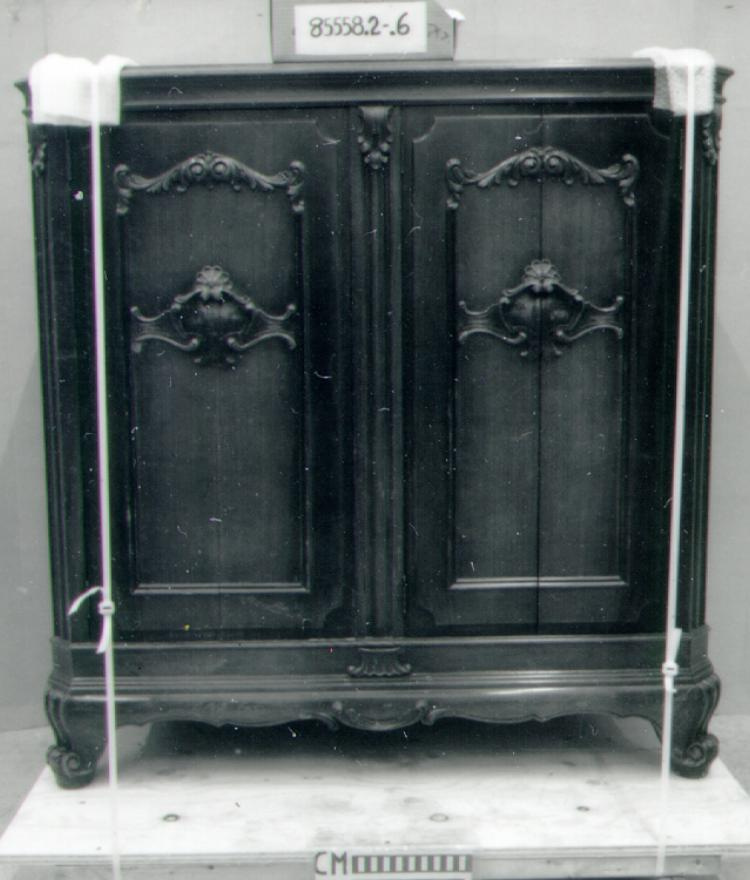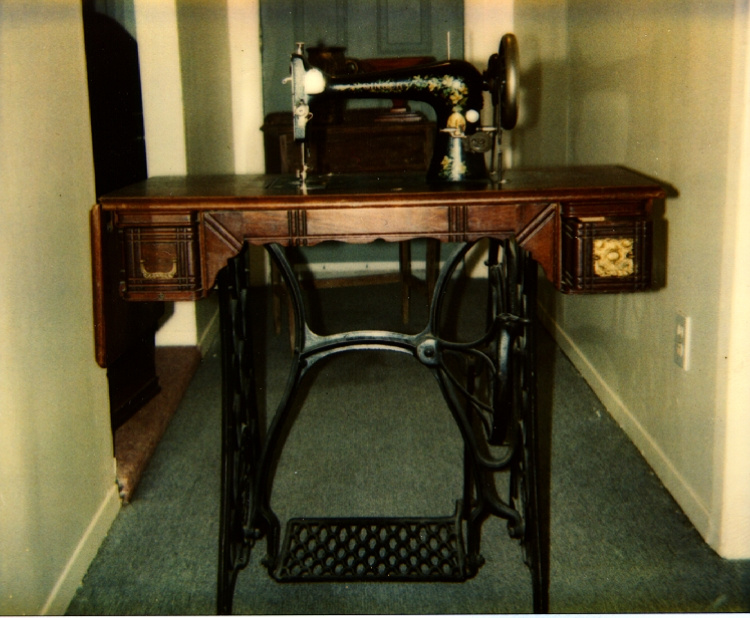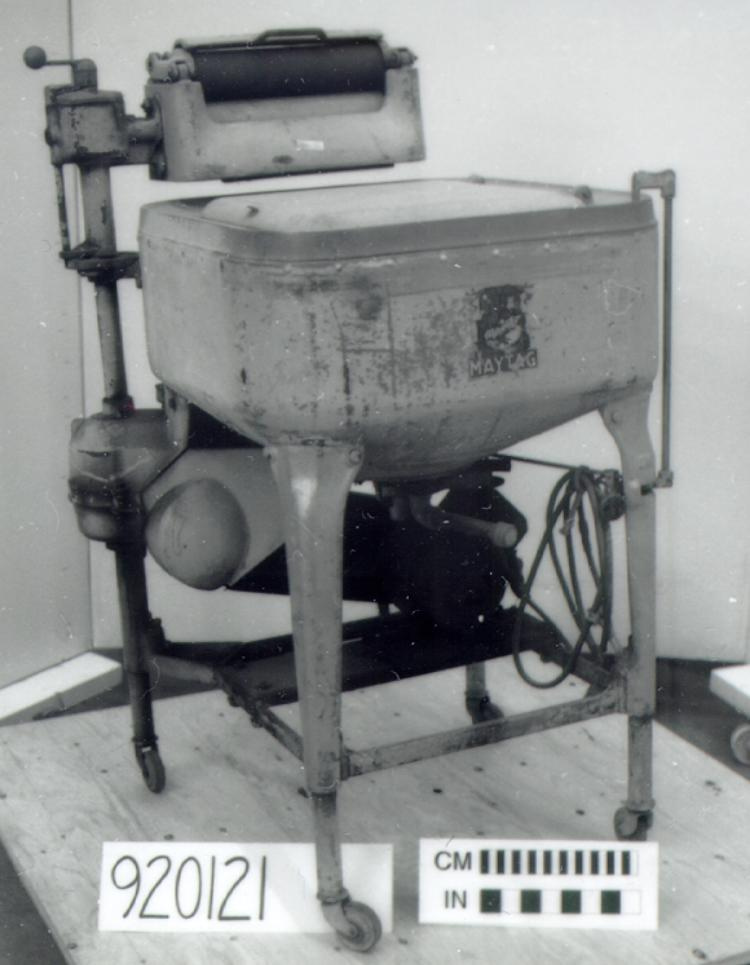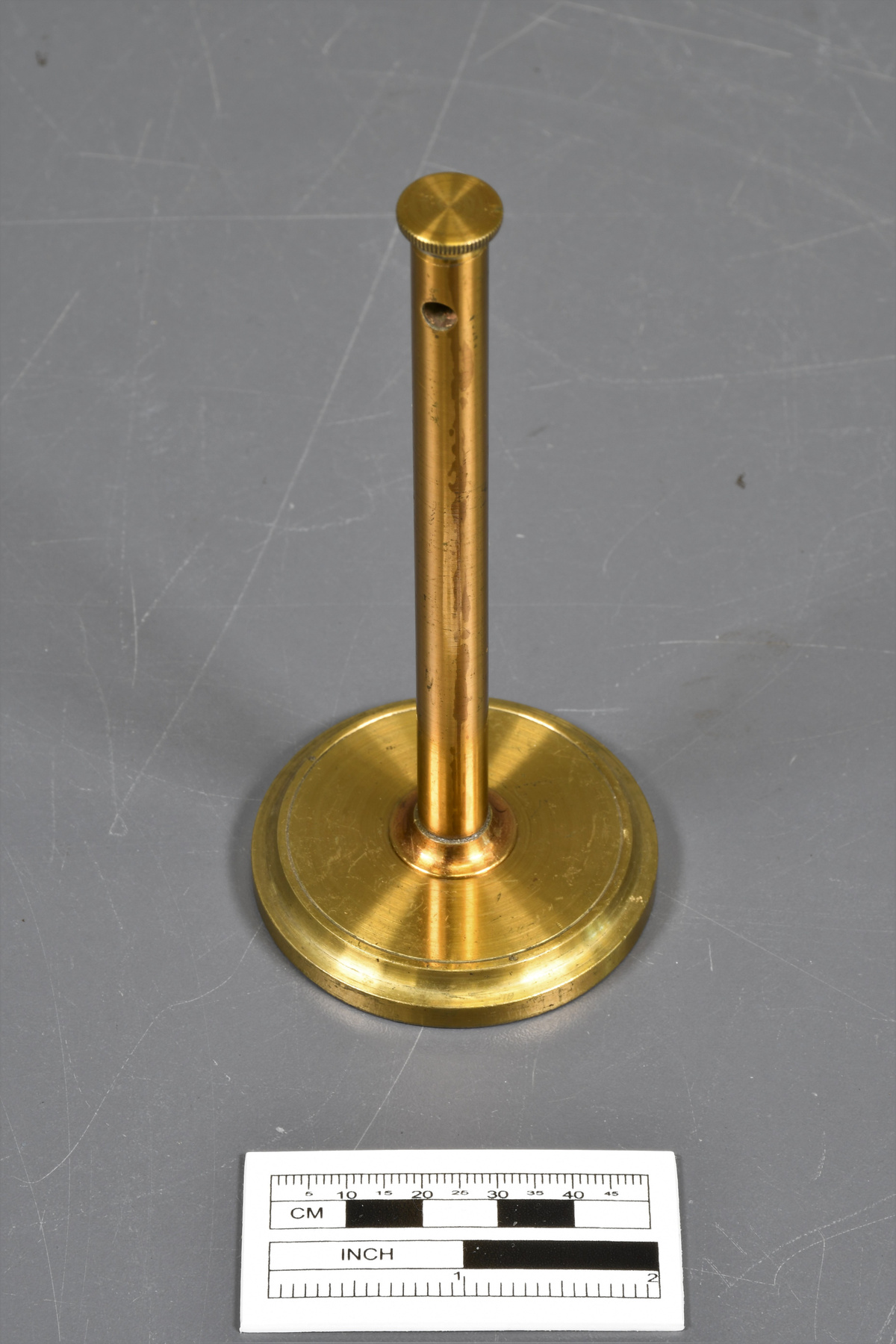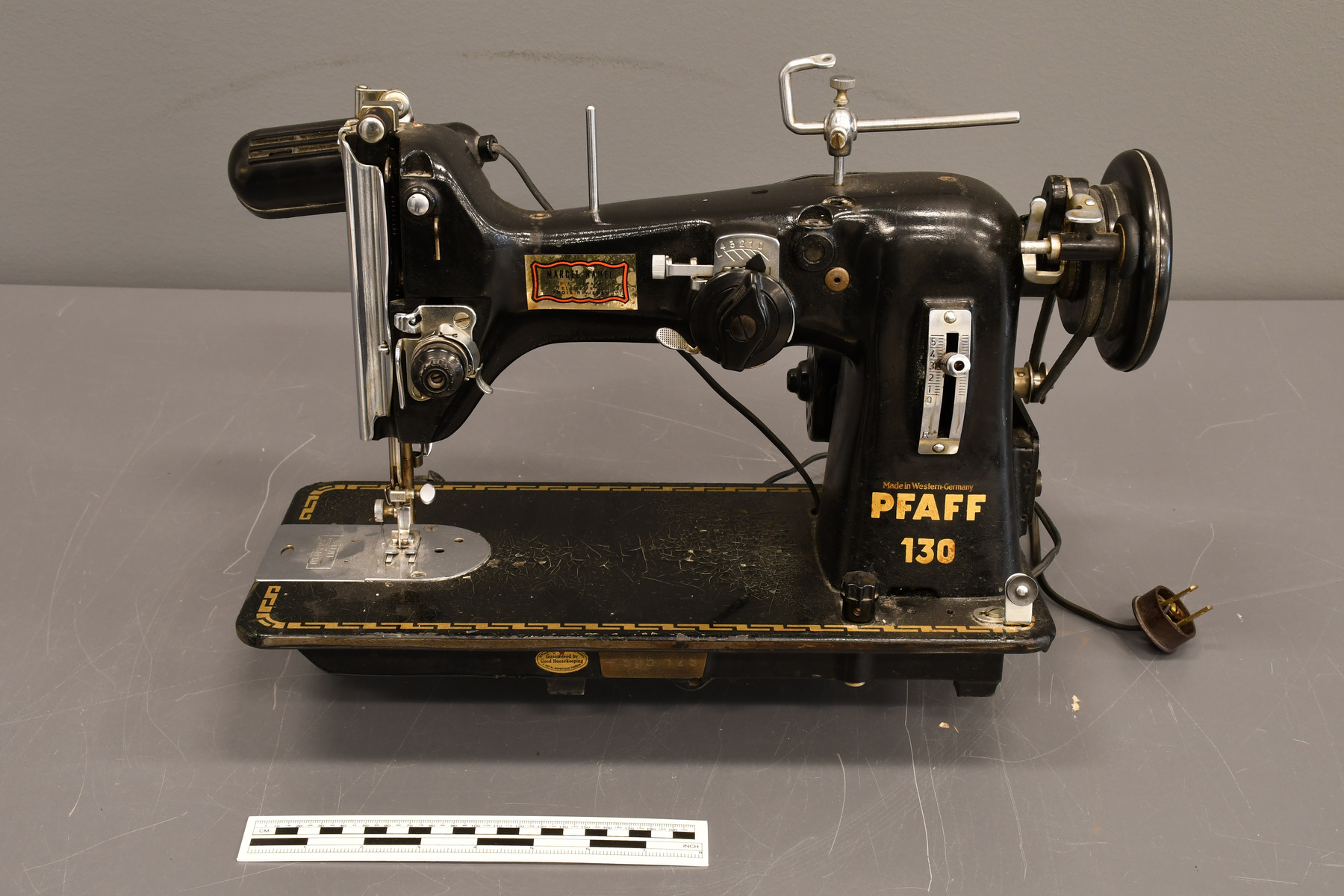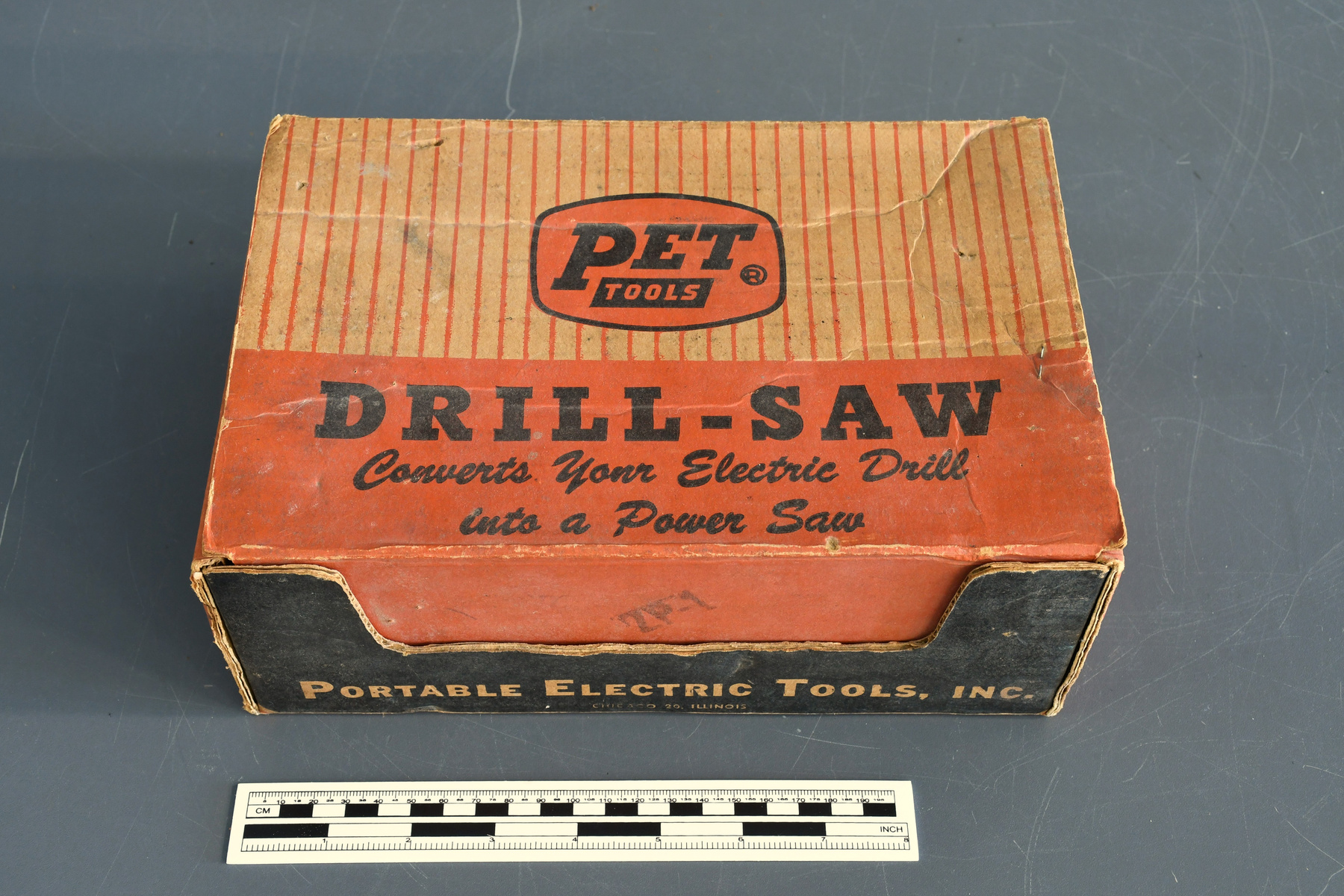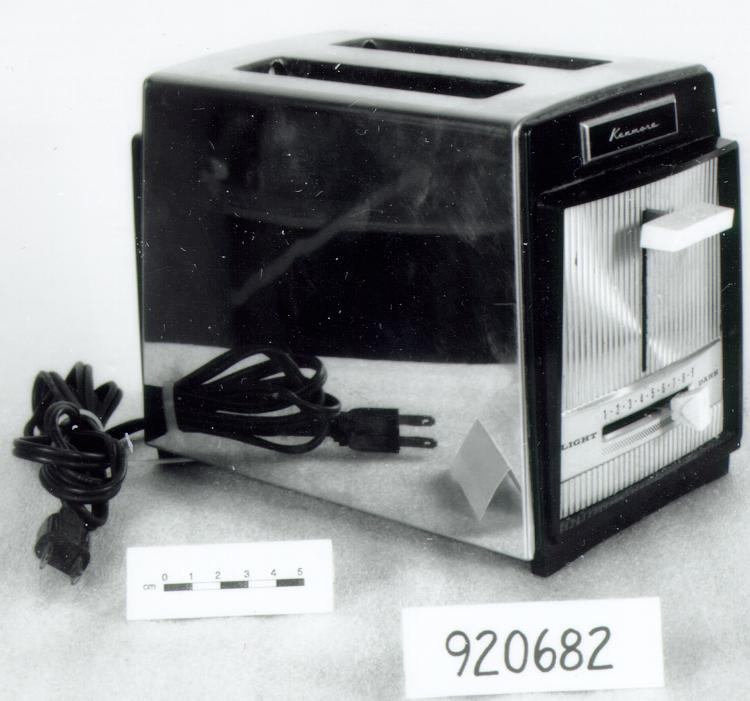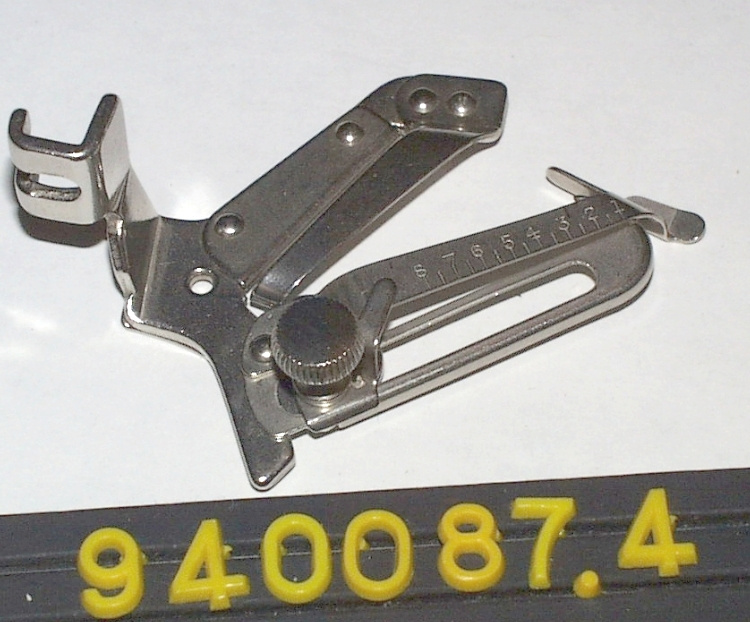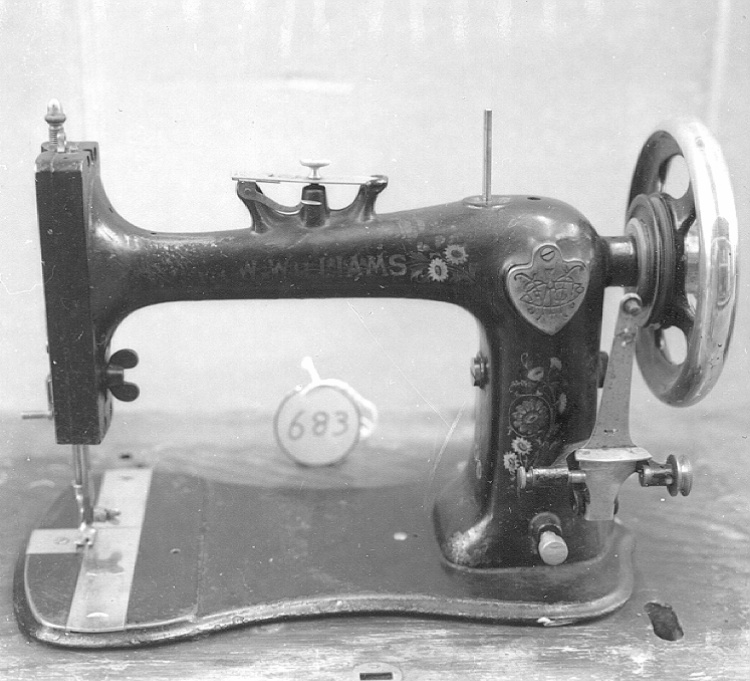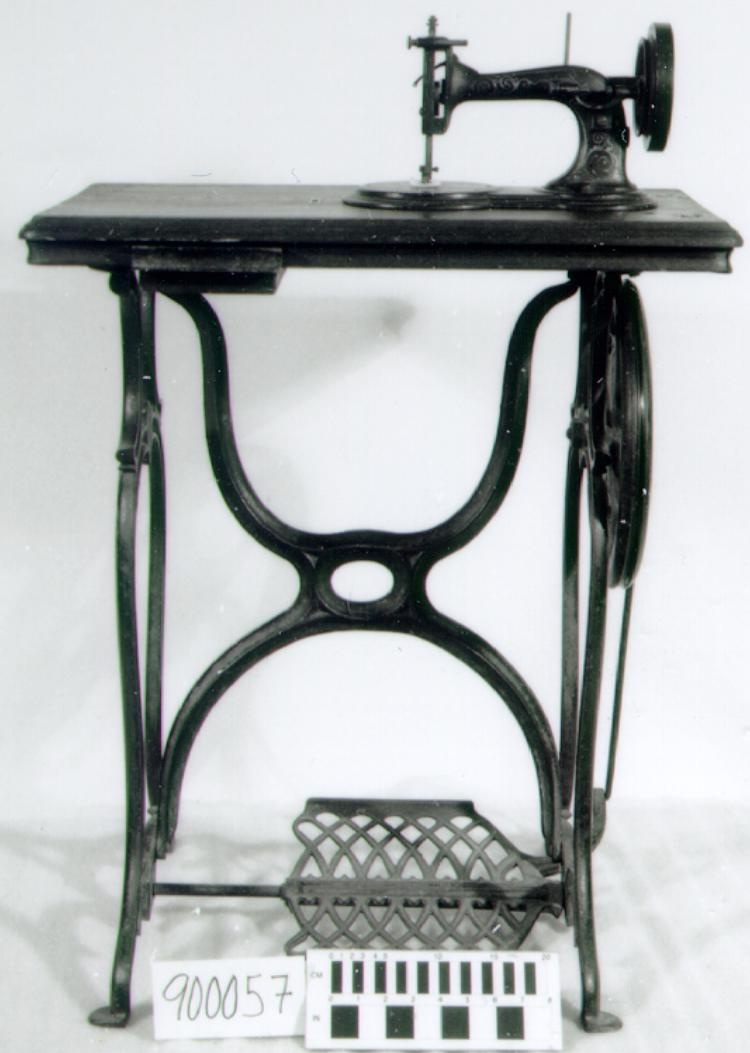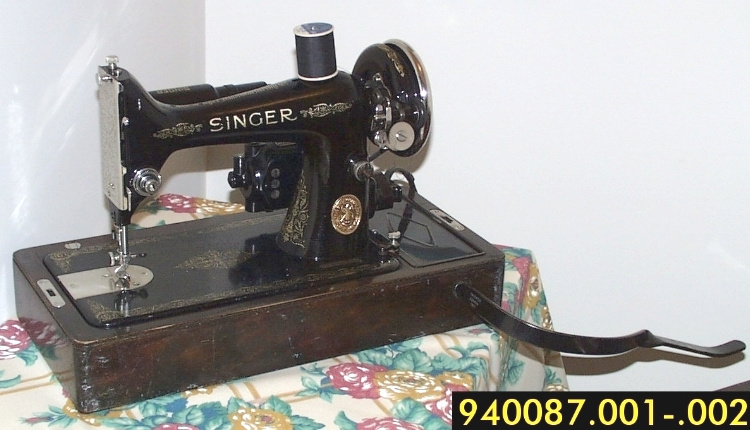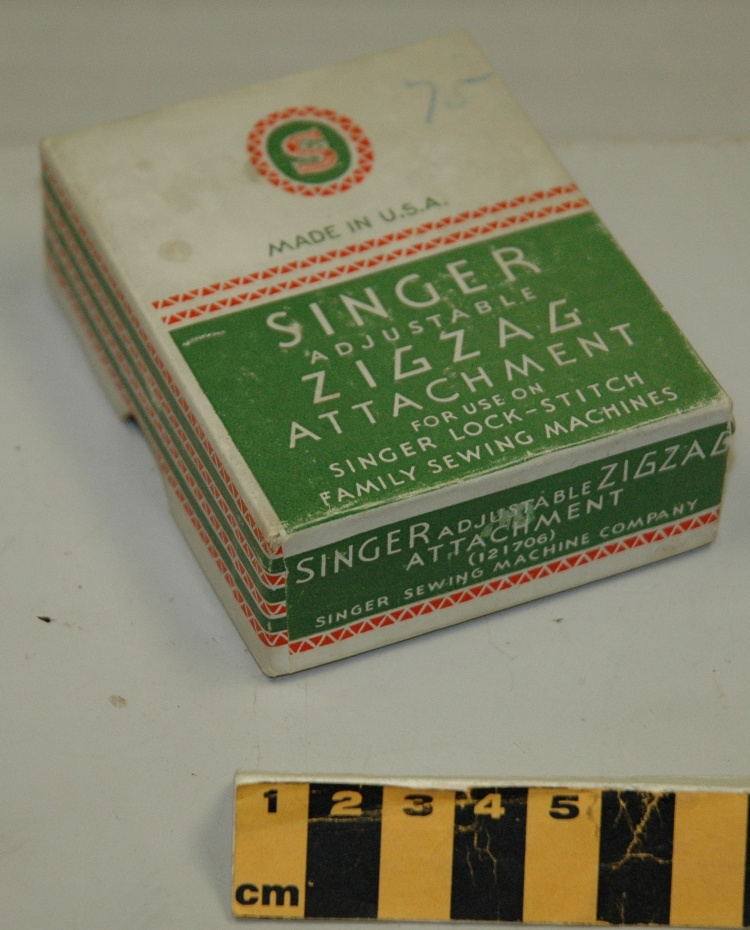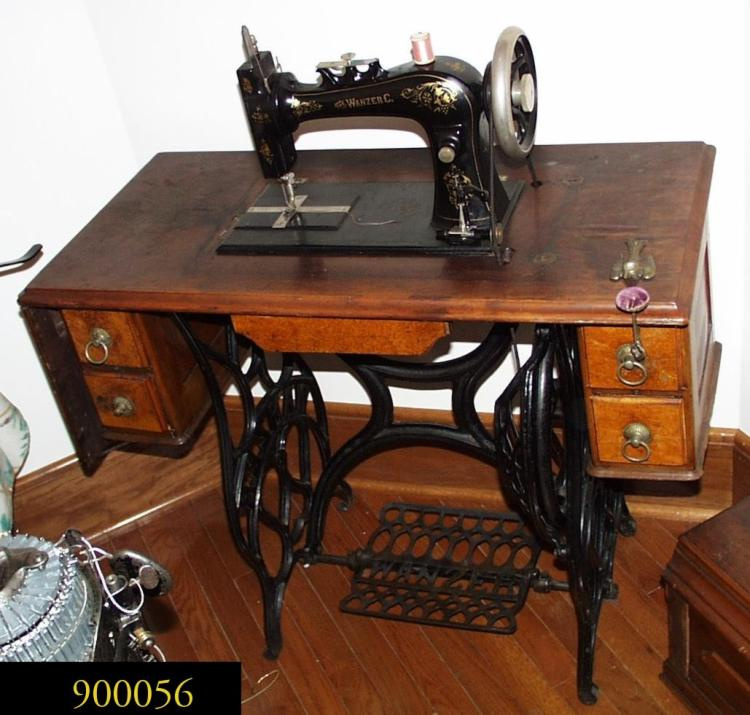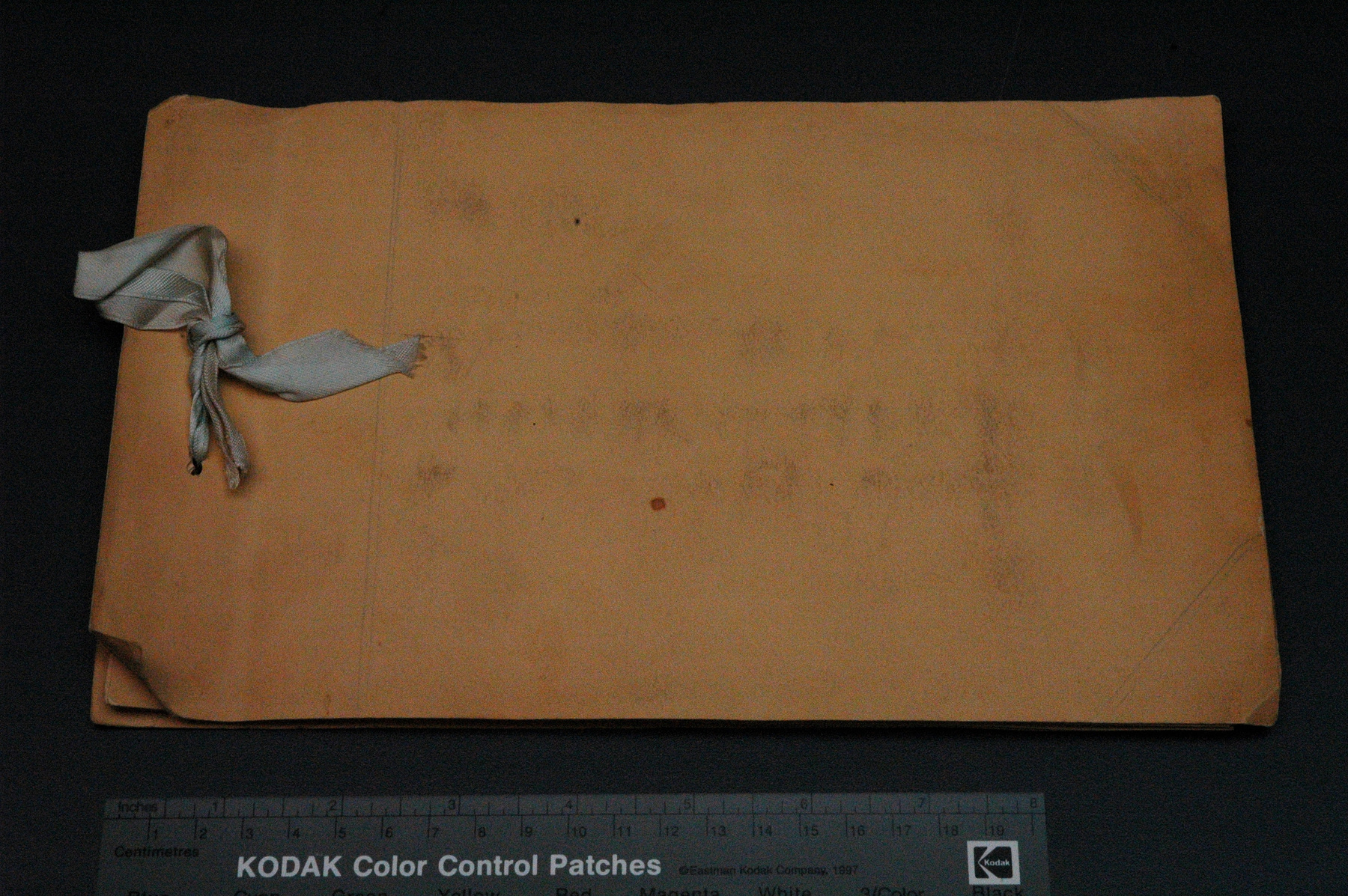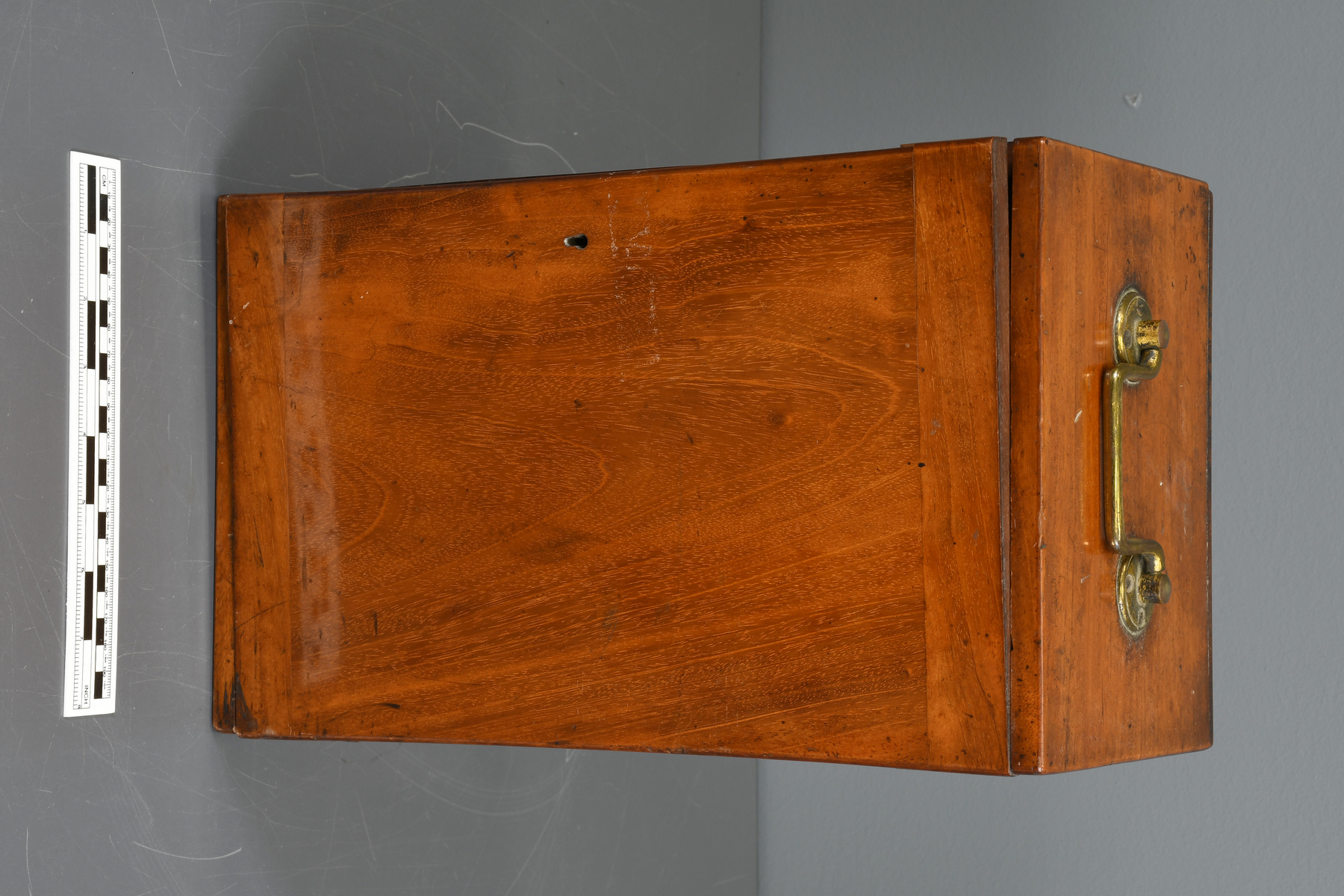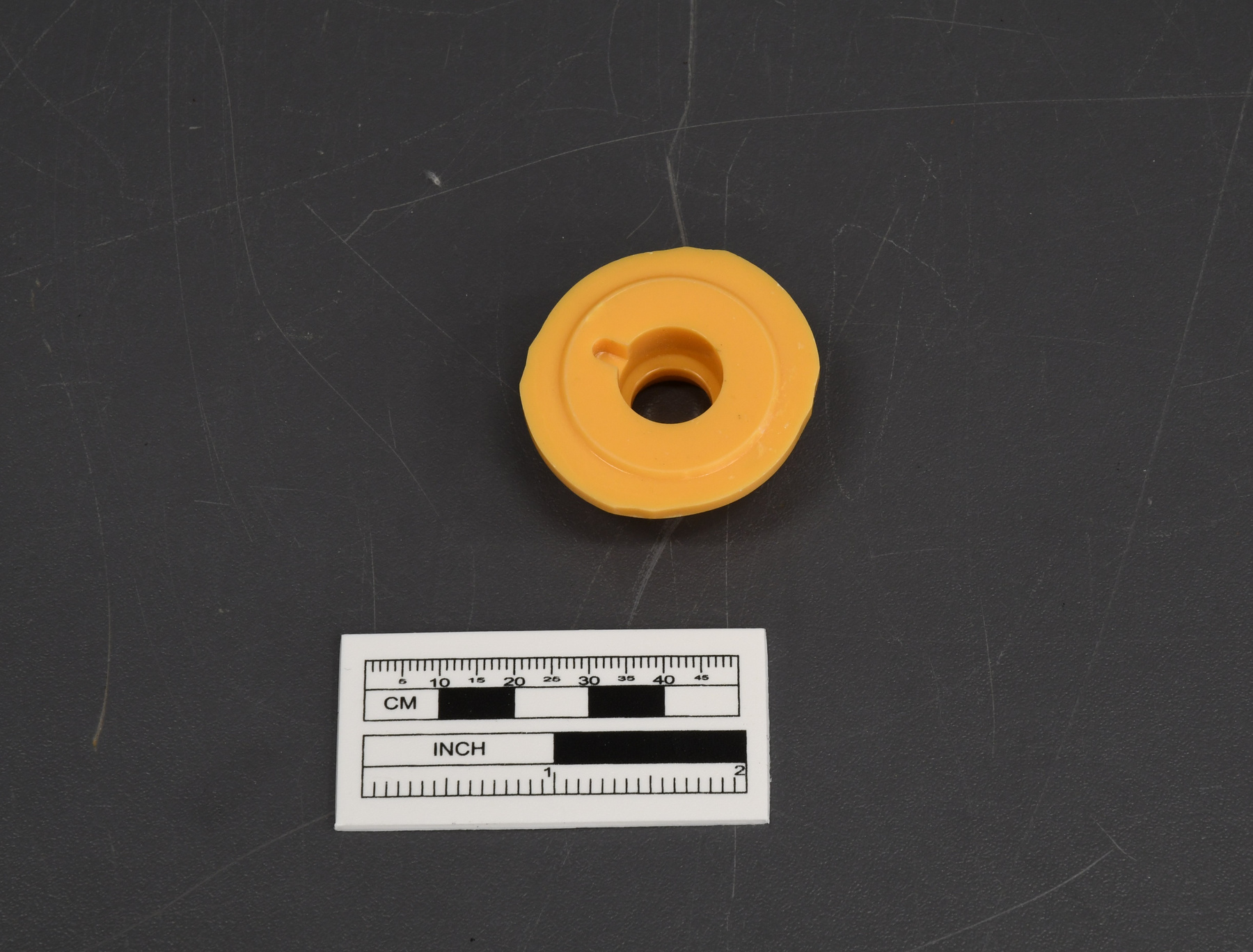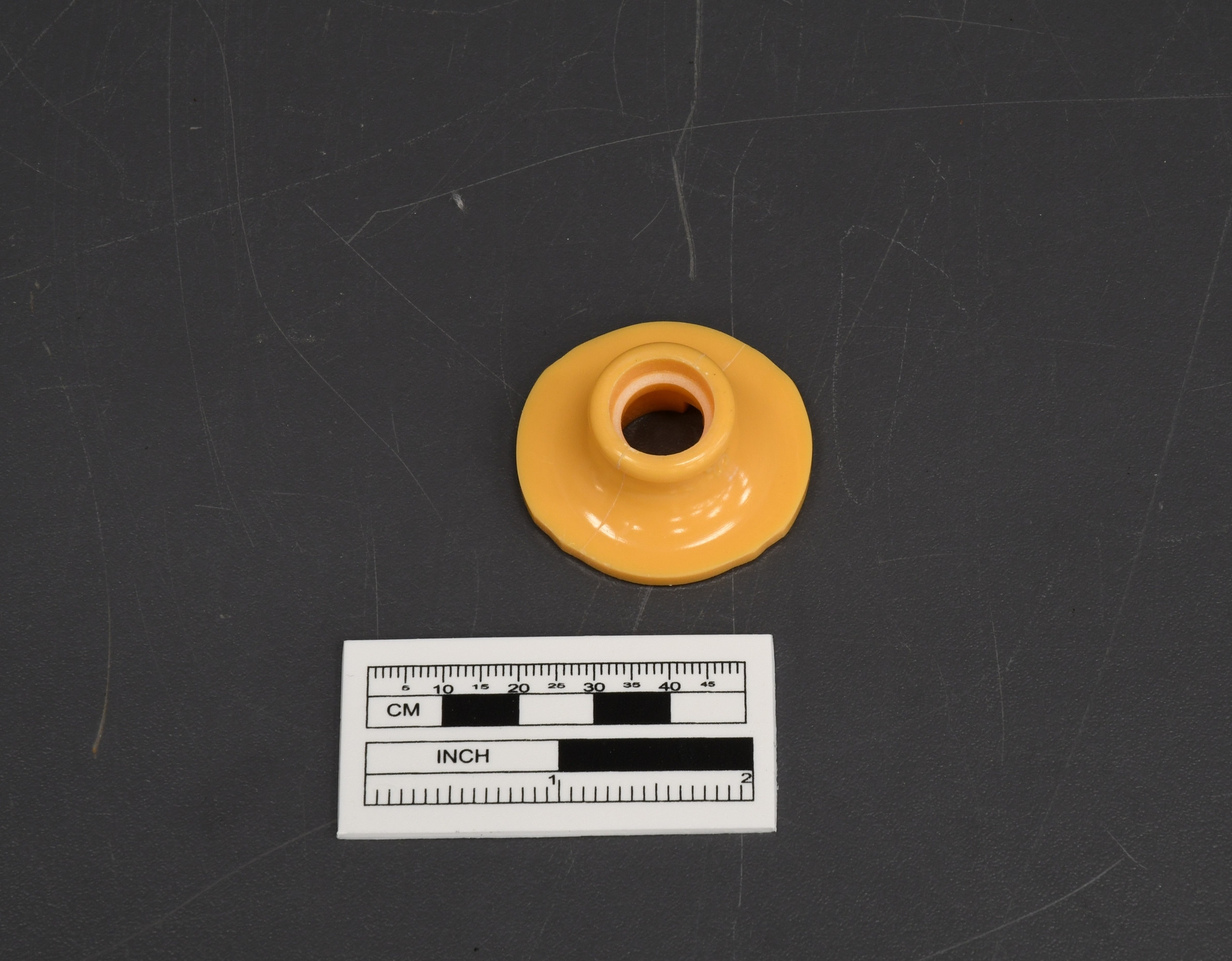Sewing machine attachment
Use this image
Can I reuse this image without permission? Yes
Object images on the Ingenium Collection’s portal have the following Creative Commons license:
Copyright Ingenium / CC BY-NC-ND (Attribution-NonCommercial 4.0 International (CC BY-NC 4.0)
ATTRIBUTE THIS IMAGE
Ingenium,
2004.2082.006
Permalink:
Ingenium is releasing this image under the Creative Commons licensing framework, and encourages downloading and reuse for non-commercial purposes. Please acknowledge Ingenium and cite the artifact number.
DOWNLOAD IMAGEPURCHASE THIS IMAGE
This image is free for non-commercial use.
For commercial use, please consult our Reproduction Fees and contact us to purchase the image.
- OBJECT TYPE
- pattern cam
- DATE
- 1960
- ARTIFACT NUMBER
- 2004.2082.006
- MANUFACTURER
- Unknown
- MODEL
- Automatic Sew-Discs
- LOCATION
- Unknown
More Information
General Information
- Serial #
- N/A
- Part Number
- 6
- Total Parts
- 10
- AKA
- N/A
- Patents
- N/A
- General Description
- A synthetic sewing machine attachment.
Dimensions
Note: These reflect the general size for storage and are not necessarily representative of the object's true dimensions.
- Length
- N/A
- Width
- N/A
- Height
- 1.8 cm
- Thickness
- N/A
- Weight
- N/A
- Diameter
- 4.0 cm
- Volume
- N/A
Lexicon
- Group
- Domestic Technology
- Category
- Textile working
- Sub-Category
- N/A
Manufacturer
- AKA
- Unknown
- Country
- Unknown
- State/Province
- Unknown
- City
- Unknown
Context
- Country
- Canada
- State/Province
- Ontario
- Period
- 1960's
- Canada
-
The donor purchased her machine in October 1958 at Simpson`s Sears in Ottawa and used it until last year essentially for her family. As she decided then for acquiring a recent model, she thought offering it to MSTC. The sewing machine is concealed within a dark solid wood cabinet with a lid on top. The front of the cabinet has a gilt handle outside on the left, that gives on a drawer. The lid opens on the left where it is supported by the drawer, thus providing working space. The mechanism has to be pulled out from the inside and is then laid on a supporting plaque on the front; it is operated by a knee device on the right side. Underneath, the cabinet is closed with a piece of plywood, which allows the recuperation of the debris. Kenmmore, the brand name for the Sears Company products, appearedfirst in 1913 on a sewing machine, then was applied to washing machines (1927), to vacuum cleaners (1932), and, from 1936, to several laundry appliances. Innovations in electrical household appliances of the kenmore brand were brought forward after the Second World War with their production of the first automatic, agitator-type washing machine (1947), the "wash & wear" cycle in washing machine (1957), and with the introduction of the microwaveovens and trash compactors (1971), of the Ultrawash dishwasher (1984) and of the "Super Efficient Refrigerators" (1993). Kenmore became one of the important manufacturer of electrical cleaning appliances at the beginning of the twentieth first century. Relation to the manufacturer: the production was and still is distributed by Canadian companies. Kenmore has a long tradition and a high rank in the production of electrical household appliances and those sold under this brand name are still very popular among Canadian consumers. - Function
-
Used to adjust the stitch width and length on a sewing machine. Different discs enables the machine to make a variety of patterns of specialty stitches. - Technical
-
Relation to the collection: presently, NMST's collection has 4 sewing machines from the 1950s, but none on the Kenmore brand. Besides, the collection has a Kenmore toaster and a Kenmore range. Relation to technology: innovations with this model of a compact cabinet which allows the mechanism to fold-in and being taken out when in use; innovation with the lid that becomes a working space when unfolded. - Area Notes
-
Unknown
Details
- Markings
- On disc protrusion in risen lettering reads "5"
- Missing
- Appears complete.
- Finish
- Yellow, round sewing disc with a hole in the center presized to adjust the width and length of the stitch on a sewing machine.
- Decoration
- Stitch design the disc is meant to reproduce is pictured next to the number of the disc on one side of the protrusion.
CITE THIS OBJECT
If you choose to share our information about this collection object, please cite:
Unknown Manufacturer, Sewing machine attachment, circa 1960, Artifact no. 2004.2082, Ingenium – Canada’s Museums of Science and Innovation, http://collections.ingeniumcanada.org/en/item/2004.2082.006/
FEEDBACK
Submit a question or comment about this artifact.
More Like This
